Legible FORM 24'-1

LEGIBLE FORM: Creating Composite FORMS
DKU DIGITAL ARCHITECTURE 24' FINAL REVIEW
Introduction — Digital Operations in Contemporary Architecture
Since the late twentieth century, architecture has treated the invisible relations between material (structure, matter, fabrication) and immaterial (program, flows, climate, urban data) as an operable system. Within this system, the digital turn has changed both pace and method: rules once implicit in drawings have been made explicit as operations and parameters, and form is recorded as the reproducible outcome of manipulations and constraints.[^1]
In other words, the digital reframes how relations are modeled, measured, and manipulated. Procedural modeling/scripting, performance simulation, scanning/sensing, BIM–GIS–data with version control, real-time visualization/XR, and digital-to-material pipelines together run design as a live feedback loop—Generate ↔ Represent ↔ Evaluate. Each iteration introduces variation; to steer that variation toward convergence, we explicitly separate what must stay (invariants) from what may change (variables).
Here, variables are not arbitrary: they are rule-driven choices within a constrained solution space. A model (or design) separates invariants from variables so that change remains lawful and goal-directed. This does not imprison a project in a rigid system; it enables rapid, repeatable remaking while keeping the gesture (design language) legible under small changes.
Variation — What changes, what must stay
- Invariants: connectivity, operation order, axes/symmetries, spacing rules, non-overlap.
- Variables: counts, spacing, distances, angles, densities, seed-based jitter.
Adjusting variables modulates hierarchy, density, and rhythm while preserving the core reading—silhouette (primary figure), axis, periodicity.
Ex. Most “random” in software is computed and repeatable with the same seed.[^2]
Project — Overview & Aim
Aim. After rapid, open-ended digital manipulations, determine whether the work still expresses a design language closely aligned with the chosen primary gesture, and identify categories of variation and selection criteria that help maintain that reading. The focus is on legibility, remaking, and persistence under small changes, with explicit selection and rationale.
Scope. The project is entirely digital; submissions consist of model files and drawings.
Process
0) Choose & name the gesture
Starting track
- Image-sourced: extract a 3-second reading (silhouette/axis/rhythm/figure–ground) from a precedent/photo/film frame/poster and name it in one sentence.
- CAD-language-sourced: adopt a basic transform as a drawing behavior—Move (stepping rhythm), Copy (interval field/echo), Rotate (fan/radial drift), Scale (graded emphasis).
1) 2D — Build a readable gesture (individual)
Tools (2D). Move, Copy, Rotate, Scale (Mirror optional). Use/compose profile curves that carry the design language. Loop (6–12 frames).
- Place a simple figure that carries the gesture
- Apply a small move/copy/rotate/scale
- Observe: does the same reading persist? Where exactly?
- Snapshot + overlays (arrows/axes/interval ticks)
- Adjust and repeat
2) 2D → 3D component (individual)
Goal. Lift the same gesture into 3D while preserving its core reading (silhouette/axis/periodicity).
Tools (3D). Continue Move/Copy/Rotate/Scale; allow surface tools as needed: ExtrudeCrv, Loft, Sweep (no complex surfacing required).
Checks. Fix a primary view and ensure it retains the 2D silhouette/axis; define strategies to maintain the reading in other views. Annotate where hierarchy, density, and rhythm shift in 3D.
3) 3D composition (team)
Goal. Place distinct gestures from individual components together in a shared space and examine the events and primary readings that emerge.
Tools. Move/Copy/Rotate/Scale; allow Boolean operations for composition.
4) Digital tectonic translation (team)
Intent. Propose a digital fabrication assumption (no physical making) and express it inside the model; examine how the assumed making logic affects the reading.
On the sheet, state:
- Emulated material family: sheet / line / volume
- Fabrication mode (digital): e.g., 2D Fab (sheet logic), 3D Fab (volumetric logic)
- Rationale for mode selection: why this mode supports the intended built reading
Deliverables
- Key Gesture Drawing
- Process Drawings (2D loop, 6–12 frames)
- Orthographic Drawings (primary views for 2D→3D; annotated)
- Model file (.3dm) — with layer segregation
- Make2D set — front / oblique / plan + one shaded viewport capture
- Reflection (1 page) — what preserved/degraded the reading; how the digital-tectonic assumption shifted hierarchy/rhythm
Viewing prompts (for this page)
- What reads from the gesture (silhouette/axis/center)?
- After small variation, does the same reading persist; where is it located?
- In 3D, which view conveys the same gesture best; what changed?
- How do digital tectonics (thickness/joint/tolerance assumptions) shift hierarchy and rhythm?
Work card template
## [Title]
Primary gesture (design language):
Starting source:
Reflection (3–5 lines):
Caption & credit rules
Title — Name A (Year 2), Name B (Year 2) | Media: DigitalSupplement A — Context
Modern architecture has framed the relation between materiality and immateriality as a system. Digital tools have systematized self-replication, parametric schemas, and algorithmic procedures; more recently, machine learning has supported concurrent studies of form generation and manifestation. This course centers on a readable primary gesture and uses rapid, small changes to test whether the same reading persists, presented through drawings rather than parameter disclosure.
Supplement B — Course Focus
Using Move/Copy/Rotate/Scale, we introduce small, emergent variation and examine the persistence of the gesture’s reading. We then perform a digital tectonic translation—assuming thickness and joints in the model—to observe how making logic shifts the reading. Emphasis is on drawings that show where the gesture reads and concise annotated sequences.
Supplement C — Extended Rationale
Complexity is read as a workable order where rules and variations co-produce form. The digital environment enables a live loop that accelerates iteration and strengthens evidence: make a move, see the consequence, annotate the reading, remake. This studio distills that potential for beginners: (1) one-sentence gesture; (2) small Move/Copy/Rotate/Scale variations; (3) overlays as reading maps; (4) a digital tectonic pass (assumed thickness/joints/tolerances, no physical build); (5) sequence + reflection. The objective is recognition, economy, and persistence.
머리말 — 현대건축의 컨텍스트가 보이는 디지털 조작의 의미
20세기 후반 이후 건축은 물질성(구조·재료·제작)과 비물질성(프로그램·흐름·기후·도시 데이터) 사이의 보이지 않는 관계를 일종의 체계로 다루어 왔다. 이러한 체계 속 결합 된 디지털로의 전환은 계획의 속도와 함께 방식을 바꾸었다. 도면이 암묵적으로 품던 규칙이 연산과 파라미터로 명시화되고, 형태는 조작과 제약의 결과로 재현 가능하게 기록된다.[^3]
다시말해, 디지털은 관계를 모델링·측정·조작하는 방식을 재구성한다. 절차적 모델링/스크립팅, 성능 시뮬레이션, 스캔/센싱, BIM–GIS–데이터·버전관리, 실시간 가시화/XR, 디지털→물질 파이프라인이 결합하여 설계는 생성 ↔ 표상 ↔ 평가의 **실시간 루프(피드백)**로 작동한다. 이러한 과정은 반복적인 시도마다 변이를 만들게 되고, 계획의 결과를 수렴하기 위해선 그 변이를 명료하게 다루기 위한 **변하지 않아야 하는 것(불변)**과 **바뀌어도 되는 것(가변)**을 구분이 필요하게 된다.
여기서 가변성이 주어진 것들은 임의가 아닌 규칙속에서 만들어진 변이가 된다. 모델(혹은 계획)은 불변과 가변을 분리함으로써 변화가 정합적인 범위 안에서 일어나게 한다.
이는 매 프로젝트에서 규칙 체계를 시스템(체계)안에 가두라는 뜻이 아니라, 작은 변이 속에서도 목표와 수렴을 위한 방향으로 제스처(디자인 언어)를 읽히게 유지함과 동시에 빠르게 다시 만들 수 있고 반복할 수 있게 해 준다. 이 과정에서 우리에게 주어진 직능적 과업은 과거의 그것과 다르고, 또 달라야 한다.
변이 예시 — 무엇이 바뀌고 무엇은 유지되는가
- 불변: 연결성, 연산 순서, 축/대칭, 간격, 비중첩 등
- 가변: 개수, 간격, 거리, 각도, 밀도, 시드 기반 지터
가변을 조정하면 실루엣(주제형상)/축/주기성 등 핵심 읽기는 유지하면서 위계·밀도·리듬을 조절할 수 있다.
ex 대부분의 “랜덤”은 같은 시드에서 반복 가능한 계산된 변이다.[^4]
프로젝트 — 개요와 목표
목표. 디지털 도구를 활용한 신속하고 개방형 조작 이후에도, 작업이 선정한 주 제스처와 가까운 디자인 언어를 지속적으로 유지하며 표현하는지를 찾아보고 유지하기 위한 변이의 정리, 선택요소등 을 탐구한다. 초점은 작은 변화 속 읽기·재생산·지속성 이며 선택방식, 근거의 내재적 결정이다.
범위. 전 과정은 디지털로 진행하며, 제출물은 모델 파일과 드로잉으로 구성한다.
프로세스
0) 제스처 선택·명명
코호트 선택
- 이미지 기반: 선례/사진/영화 프레임/포스터에서 3초 읽기(실루엣·축·리듬·양/음)를 추출하고 한 문장으로 명명.
- CAD 언어 기반: 기본 변환을 그리기 행위로 채택—이동(스텝 리듬), 복사(간격장/에코), 회전(부채/방사 드리프트), 스케일(강조 그라데이션).
1) 2D — 읽히는 제스처 만들기 (개인작업)
사용(2D). 디자인언어를 구성하는 프로파일 커브를 이동, 복사, 회전, 스케일 (미러 선택). 루프(6–12프레임).
- 제스처를 담는 간단한 형태 배치
- 작은 이동/복사/회전/스케일 적용
- 관찰: 같은 독해가 유지되는가? 어디서 보이는가?
- 스냅샷 + 오버레이(화살표·축선·간격표기)
- 조절 및 반복
2) 2D → 3D 컴포넌트 제작 (개인작업)
목표. 같은 제스처를 3D로 발전시키되 핵심 읽기(실루엣/축/주기성)를 유지.
사용(3D). 3D에서도 이동/복사/회전/스케일을 지속 사용하고, Surface 도구 사용. ExtrudeCrv, Loft, Sweep 등. (복잡한 서피싱 불요.)
체크. 주 시점을 정해 해당 뷰에서 2D 제스처의 실루엣/축이 유지되는지 확인하고, 다른 뷰에서도 유지하기 위한 전략 설정. 3D에서 위계·밀도·리듬의 변화를 오버레이로 표기.
3) 3D 컴포지션 생성 (팀작업)
목표. 서로 다른 제스처를 가진 개인의 형상을 다른 구성원의 형상과 하나의 공간에 배치하며 발생하는 상황의 사건, 혹은 핵심 읽기.
사용(3D). 3D에서도 이동/복사/회전/스케일을 지속 사용하고, Boolean 도구 사용.
4) 디지털 텍토닉 전환 (팀작업)
의도. 결합된 팀의 형상을 Fabrication방식으로 제안하고 모델 내부에서 표현하여 구축을 위해 지정한 “만듦의 가정”이 읽기에 미치는 변화를 파악한다.
시트에 명시.
- 에뮬레이트할 재료군: 시트/선재/볼륨 등
- Fabricate 방식: 예) 2D Fab, 3D Fab
- Fab 방식 선정이유 : 원하는 구축의 이유 명시
제출물
- 키 제스처 드로잉
- 프로세스 드로잉
- 정투상 드로잉
- 모델 파일(.3dm) — 레이어 구분 필요
- Make2D 세트 — 정면·사선·평면 + 쉐이딩 뷰포트 캡처 1장
- 리플렉션 텍스트(1p) — 읽기를 지킨/약화한 요인, 텍토닉 가정이 위계/리듬에 미친 영향
현재 페이지 읽기 프롬프트(관람 기준)
- 제스처에서 무엇이 보이는가(실루엣/축/중심)?
- 작은 변이 후에도 같은 독해가 가능한가; 어디서 보이는가?
- 3D로 올렸을 때 어느 뷰가 같은 제스처를 가장 잘 전달하는가; 무엇이 달라졌는가?
- 디지털 텍토닉(두께/결구/간극)이 위계·리듬을 어떻게 바꾸는가?
작품 카드 템플릿
## [작품제목]
주 제스처 (디자인 언어) :
출발점 :
리플렉션 텍스트 :
캡션/크레딧 규칙
제목 — 이름A(2학년), 이름B(2학년) | Media: Digital
부록 A — Context
현대건축은 물질성과 비물질성의 관계를 일종의 체계로 다뤄 왔다. 디지털 도구는 자기복제·파라메트릭·알고리즘 절차를 체계화했고, 최근에는 머신러닝이 생성과 발현의 동시적 연구를 지원한다. 본 과목은 읽히는 주 제스처를 중심으로, 작은 변화를 가하며 빠르게 다시 만드는 과정을 통해 같은 읽기가 지속되는지를 드로잉으로 제시한다.
부록 B — Course Focus
이동/복사/회전/스케일로 작은 창발적 변이를 주면서 주 제스처의 지속적 읽기를 탐구한다. 이어서 디지털 텍토닉 전환을 수행해 모델 내부에서 두께와 결구를 가정하고 읽기의 변화를 확인한다. 초점은 제스처가 어디서 읽히는지를 보여주는 드로잉과 간결한 주석 시퀀스에 있다.
부록 C — Extended Rationale
복잡성은 규칙과 변이가 공존하는 운용 가능한 질서로 읽힌다. 디지털 환경은 이를 실시간 루프로 구현해 빠른 반복, 명료한 표상, 근거 있는 관찰을 가능하게 한다. 본 스튜디오는 이를 초심자 수준으로 단순화한다: (1) 한 문장 제스처 정의, (2) 작은 변이를 동반한 Move/Copy/Rotate/Scale, (3) 오버레이로 읽기 지도, (4) 디지털 텍토닉(두께/결구/공차 가정)으로 설계안과 디지털 구축 형상을 비교, (5) 시퀀스/리플렉션으로 원인–결과를 기록. 목표는 인식·절제·지속성의 훈련이며, 이는 이후 고급 도구와 제작 단계로 확장된다.
Class Submissions
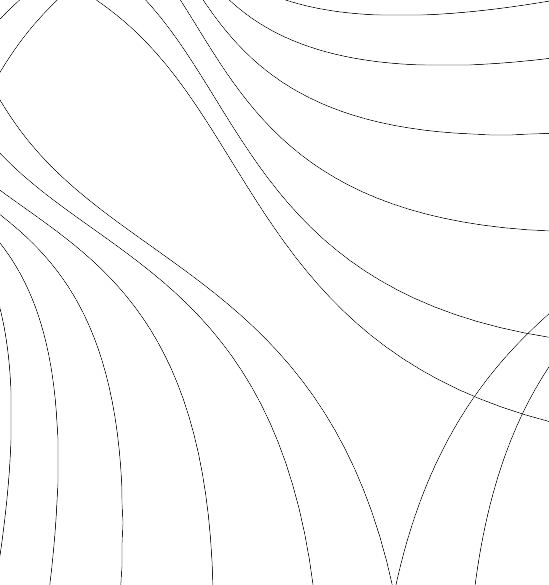
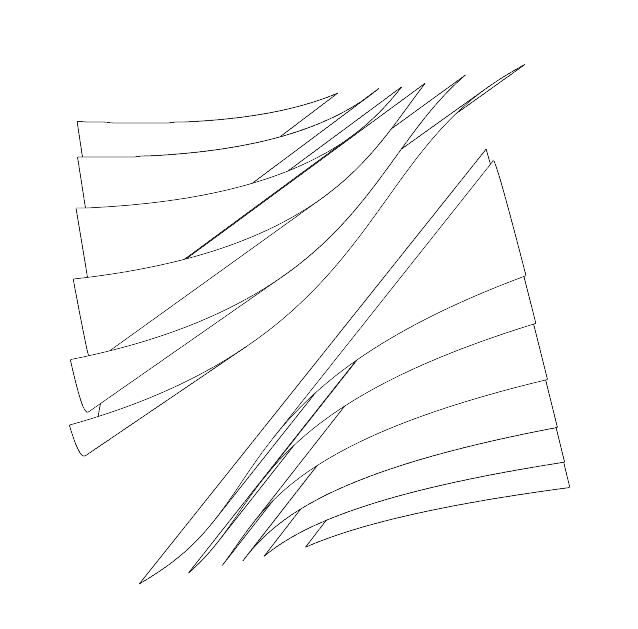

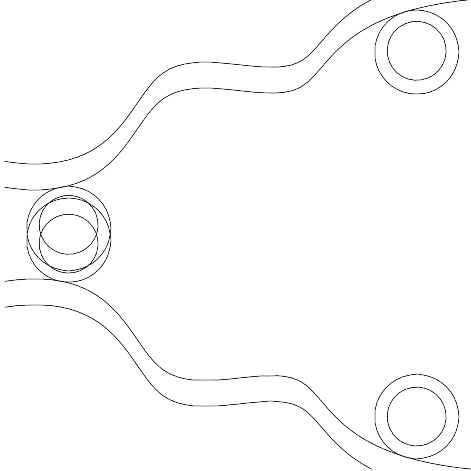
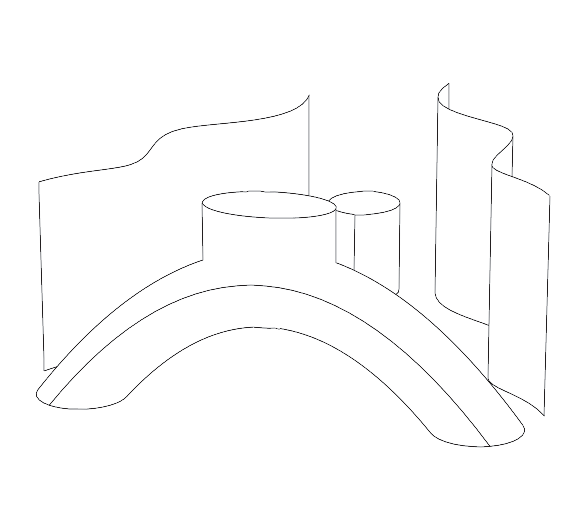
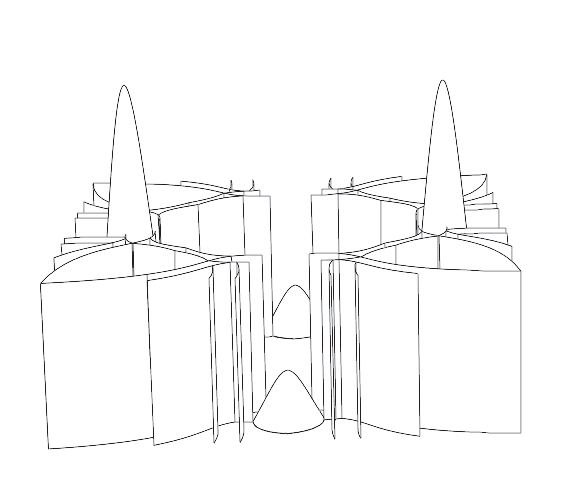
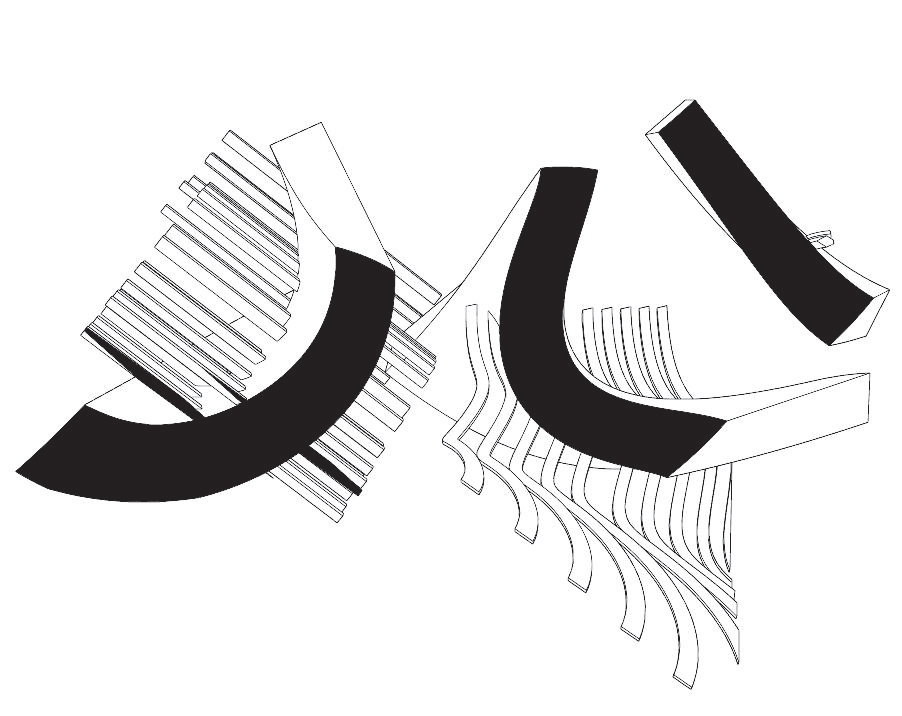

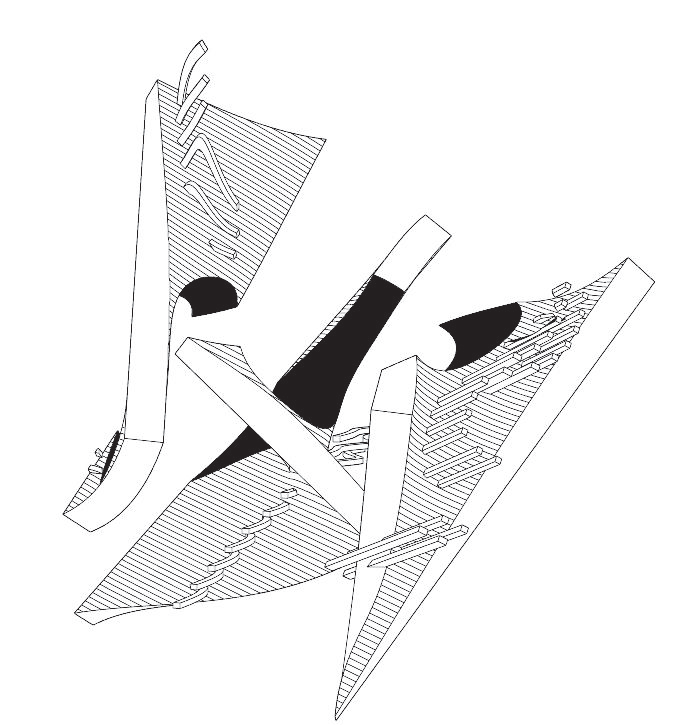
"Rotate, Offset", ⓒJiwon So, 23, ⓒJiyoon Jung, 21, Digital
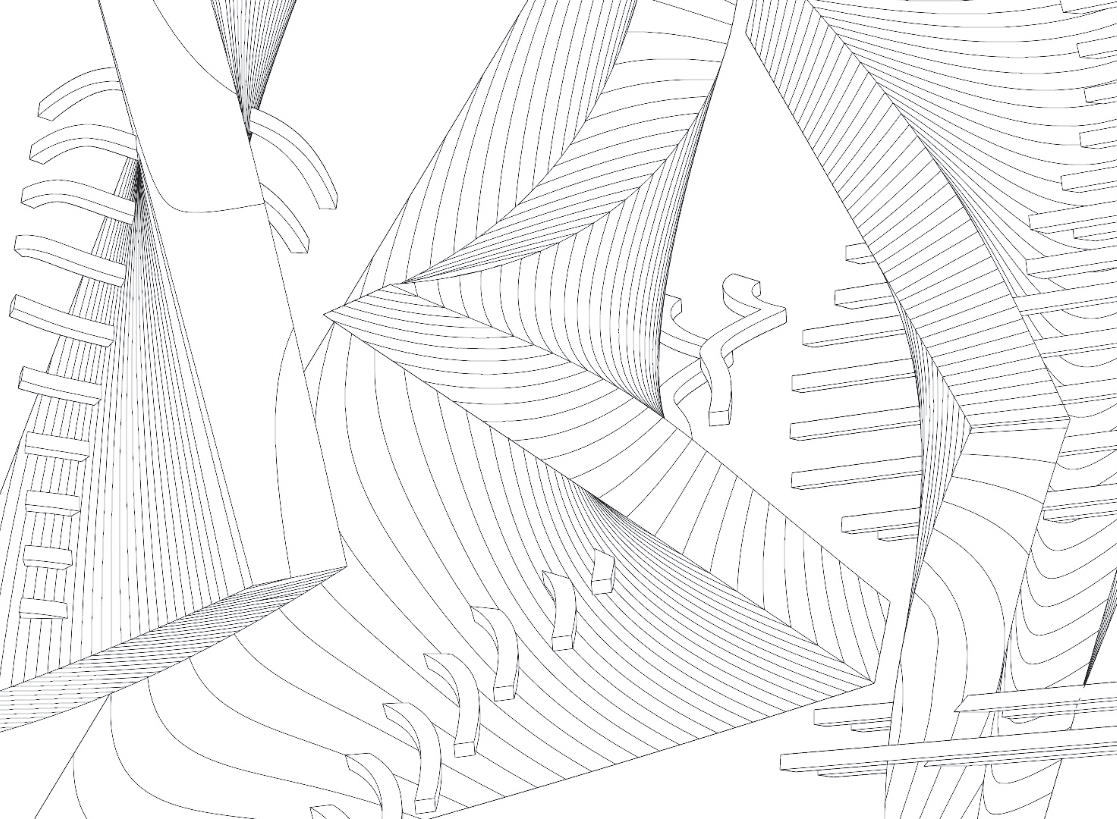
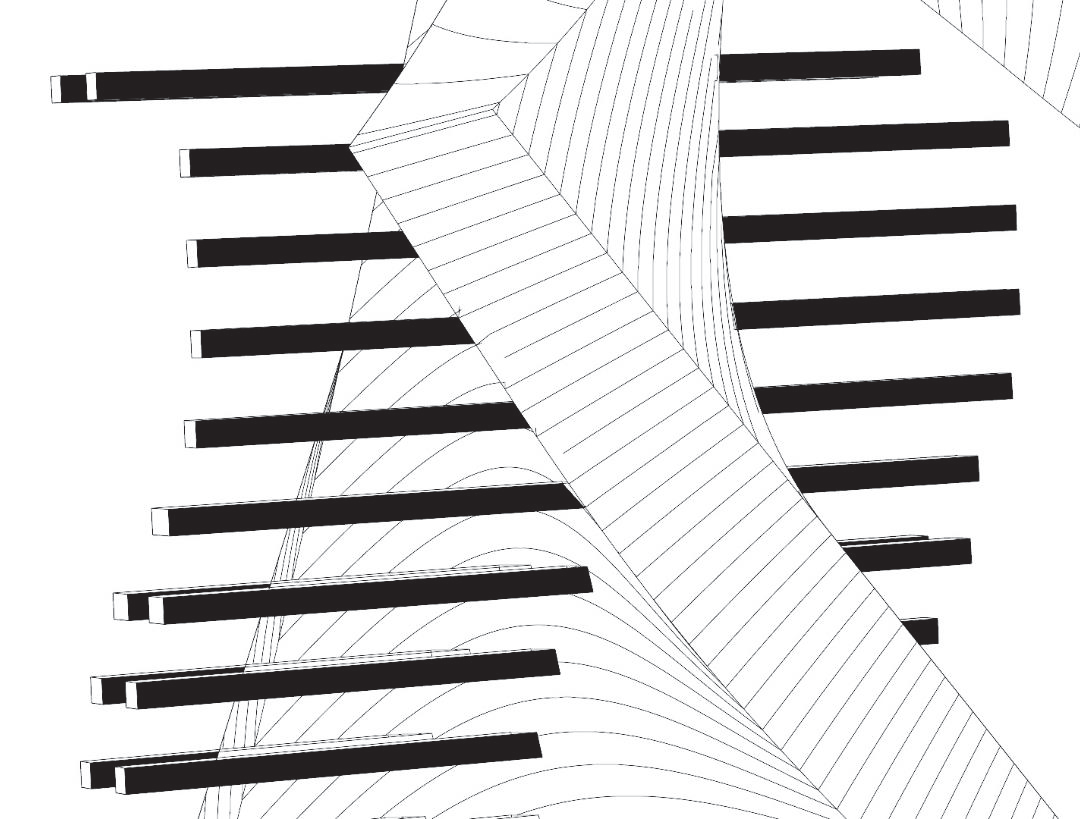

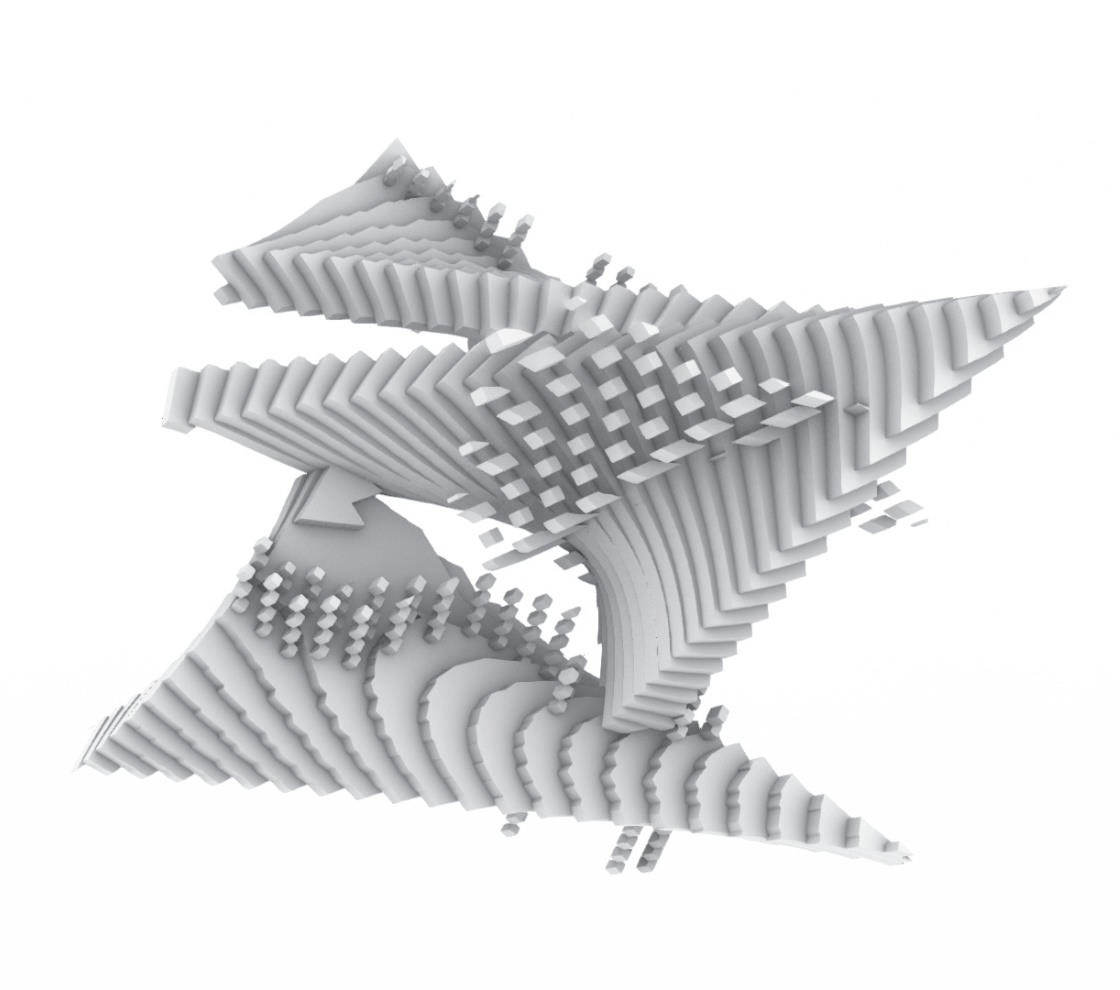
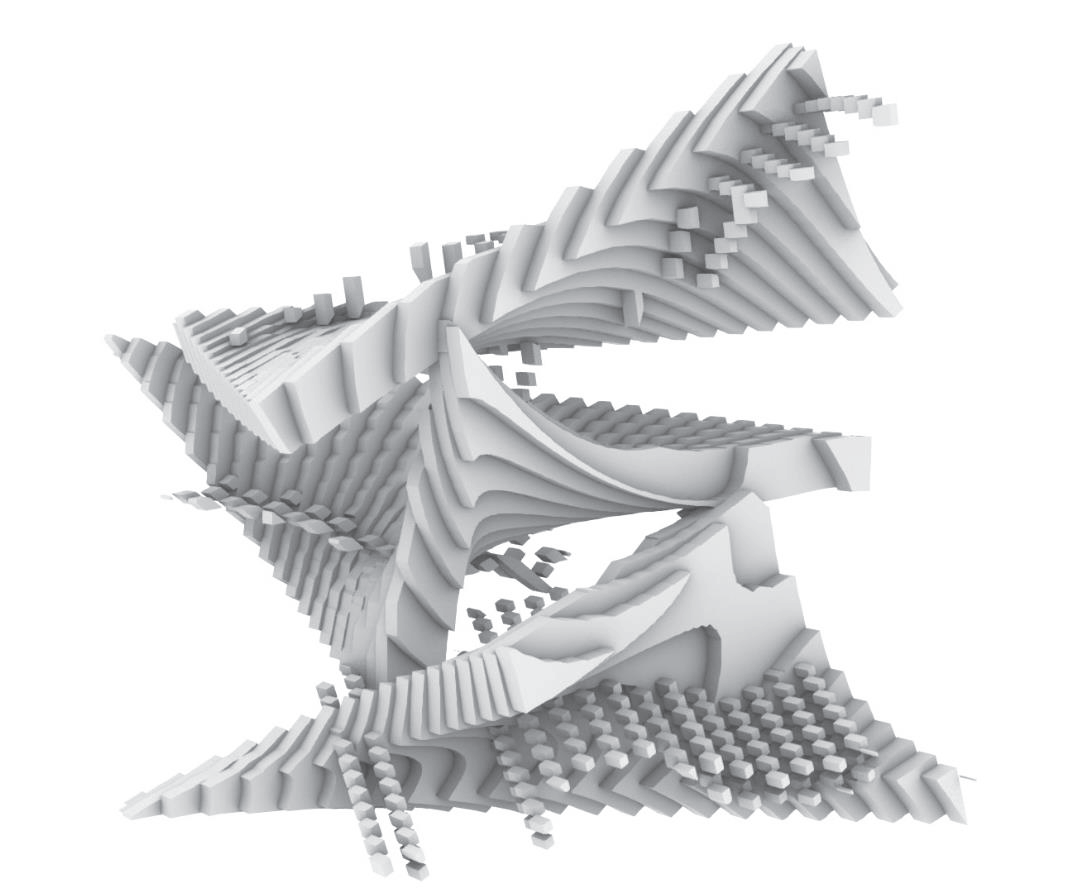
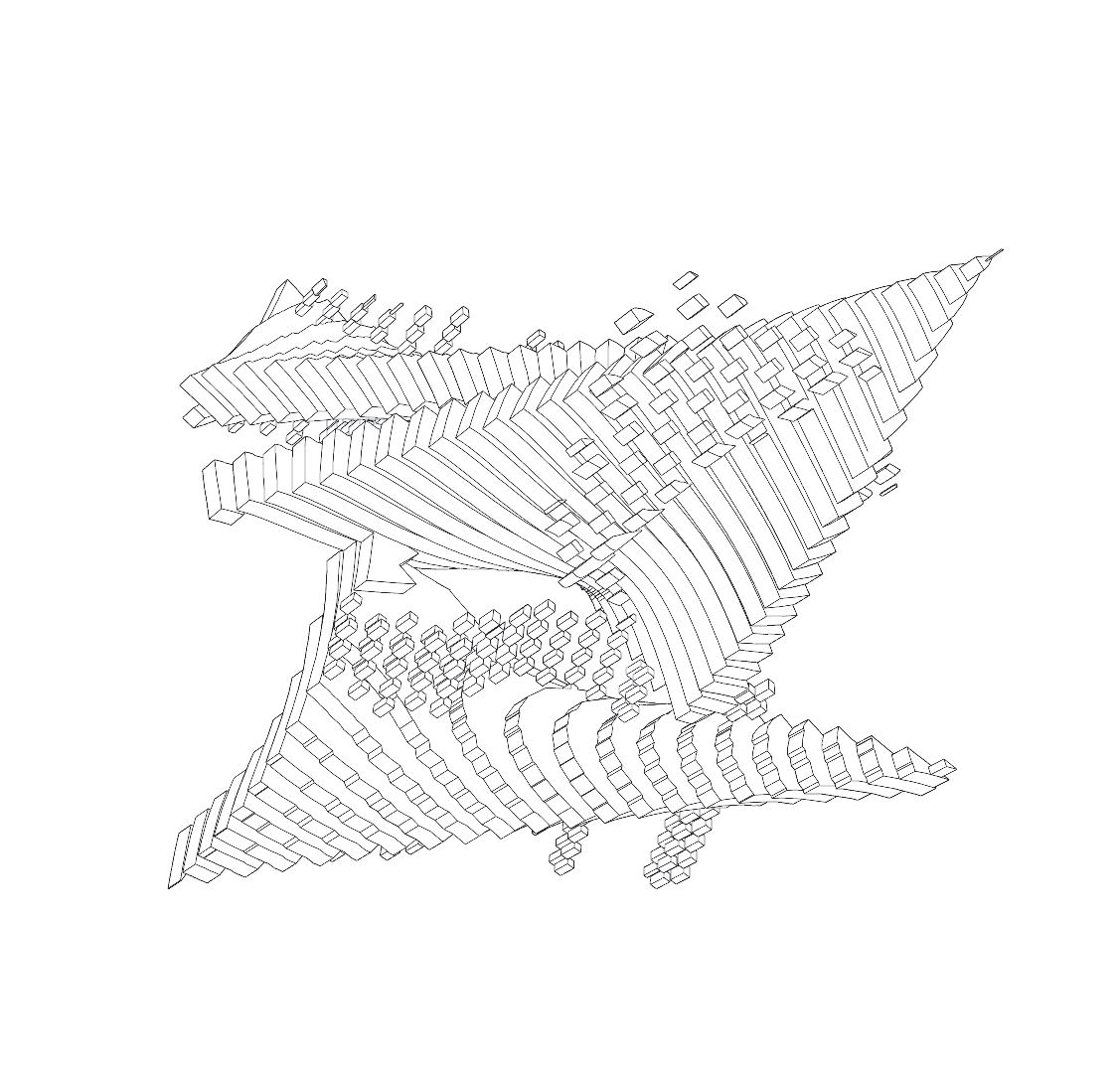
"Rotate, Offset", ⓒJiwon So, 23, ⓒJiyoon Jung, 21, Digital
Rotate, Offset
Primary gesture (design language):
- A radial fan stabilized by concentric steps — “spin + terraces.”
Starting sources (2D command drawings):
- A — Rotate (#1): polar sweep with a clear pivot; spokes/arc segments show centrifugal drift.
- B — Offset (#4): parallel/concentric bands with even spacing; a stepped edge implies a datum.
Early gesture development (2D → 3D):
- A (#2–#3): the fan thickens into vaulted ribs around a hub; span count varies while the spin axis holds.
- B (#5–#6): offsets lift into ringed terraces; step height/interval adjust without losing the band logic.
Composite drawing (#7+):
- Fan ribs perch on stepped bands; overlays mark pivot, ring joints, and the terrace datum.
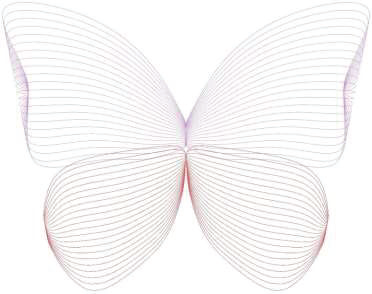
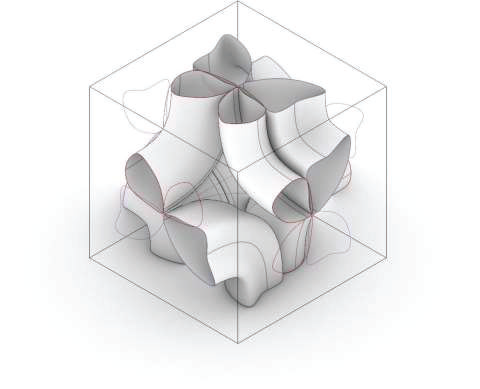
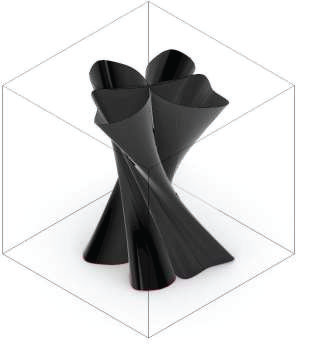
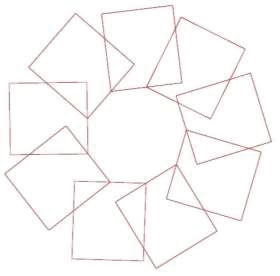
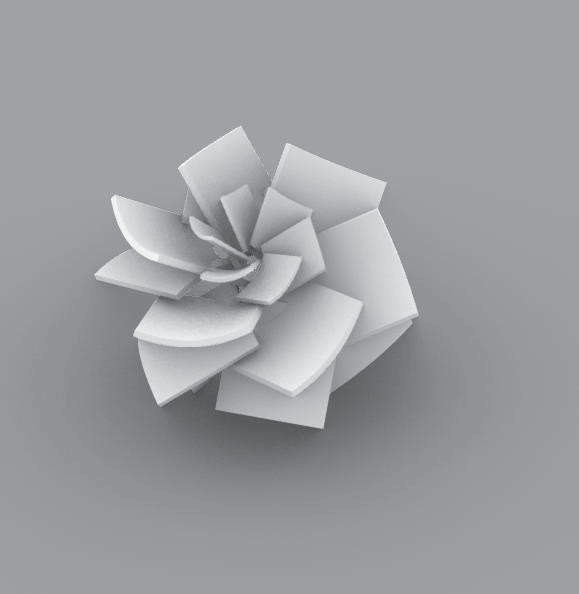
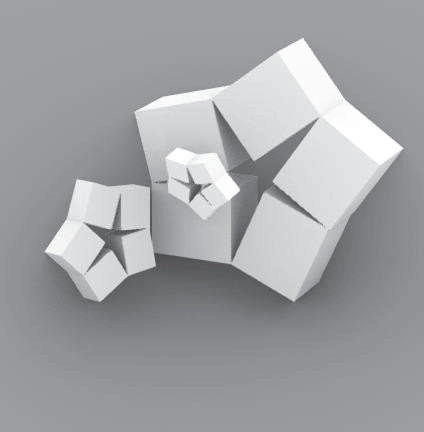
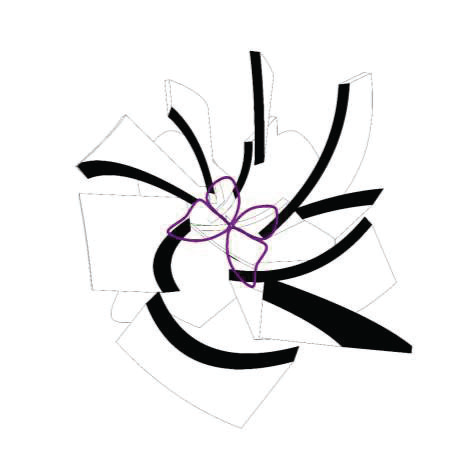

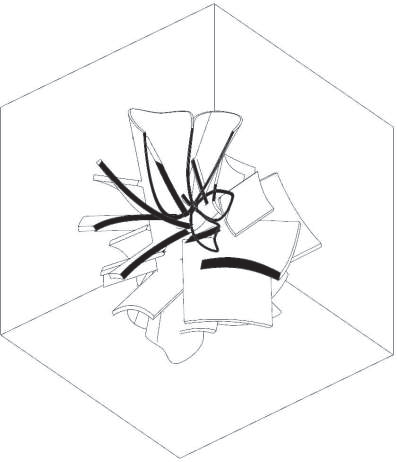
"Mirror, Rotate", ⓒYeonhee Seo, 23, ⓒEunseo Jang, 23, Digital
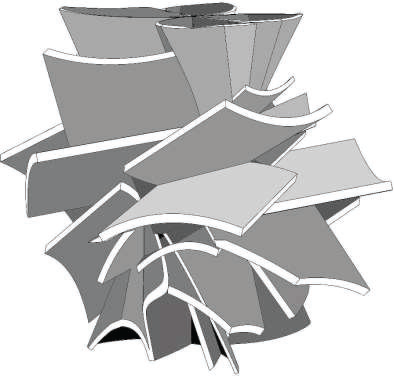

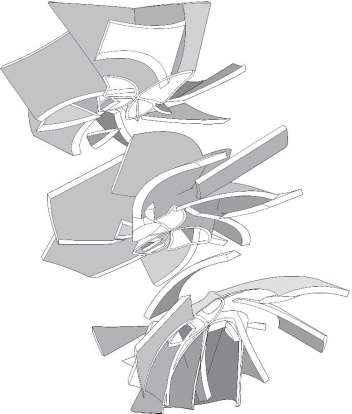
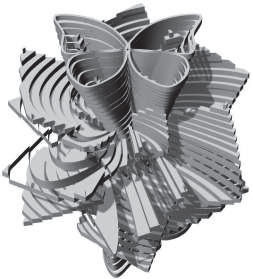

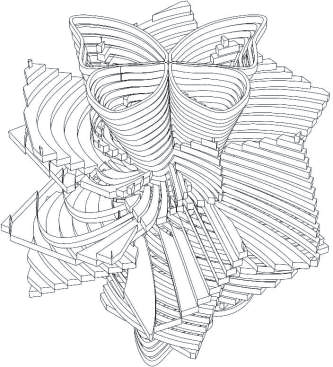
"Mirror, Rotate", ⓒYeonhee Seo, 23, ⓒEunseo Jang, 23, Digital
Mirror, Rotate
Primary gesture (design language):
- Bilateral spine wrapped by a soft rotational bloom — “axis + fan.”
Starting sources (2D command drawings):
- A — Mirror (#1): strong midline; paired lobes and a keyed slit.
- B — Rotate (#4): fanned arcs about a center; phase offsets suggest a gentle swirl.
Early gesture development (2D → 3D):
- A (#2–#3): mirrored shells rise from the seam; thickness accents the spine.
- B (#5–#6): the fan becomes shallow petals; rib count and flare vary around the hub.
Composite drawing (#7+):
- Petals wrap the mirrored torso; seam and pivot remain the primary read.
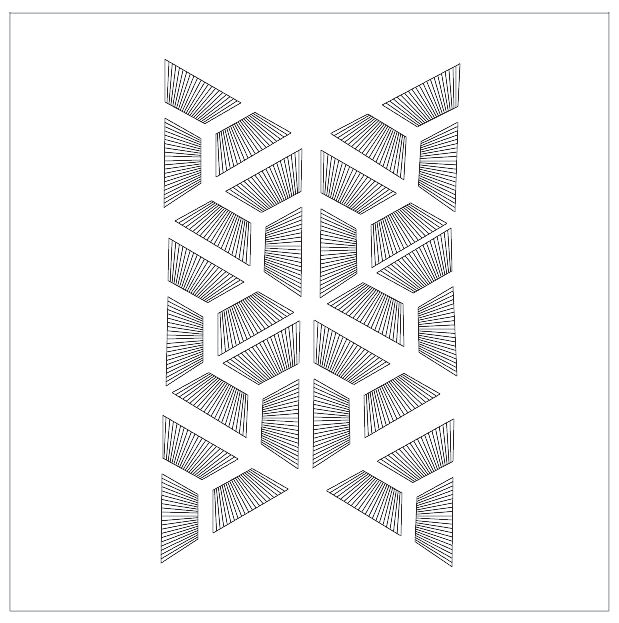
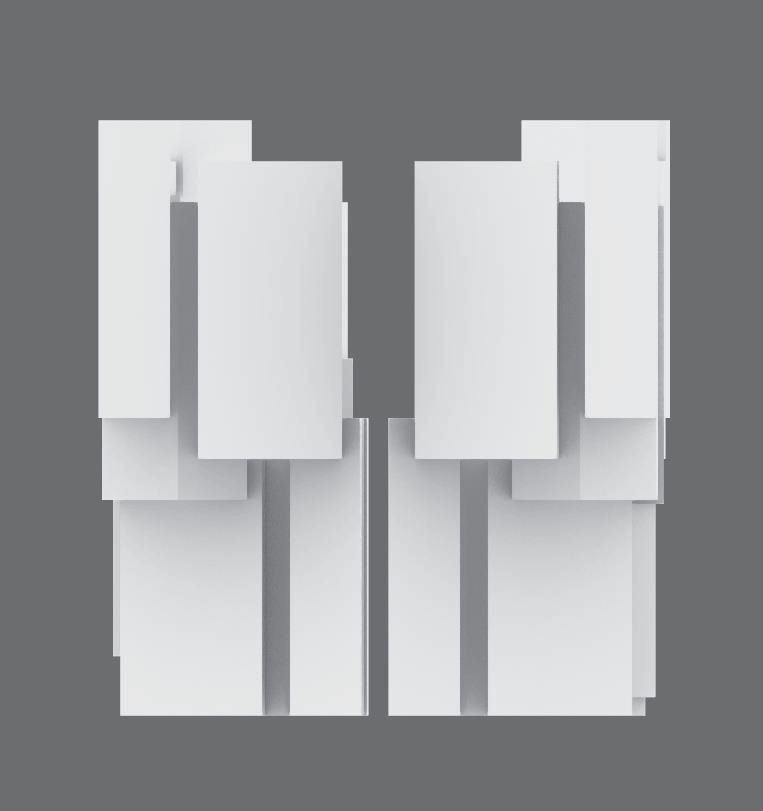

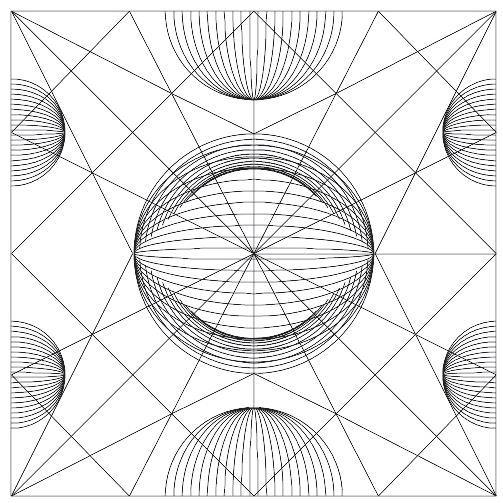
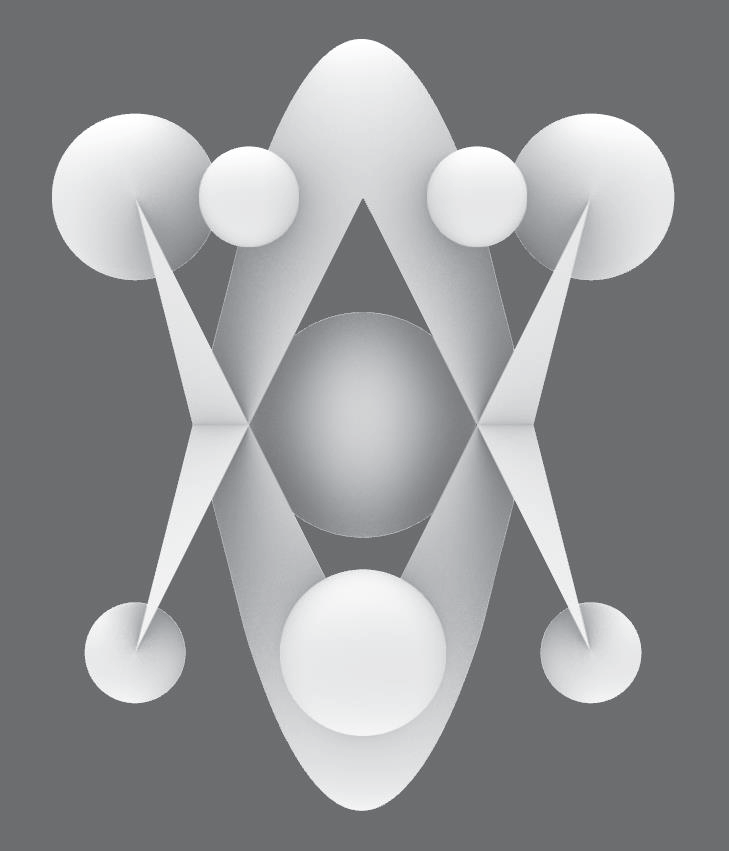
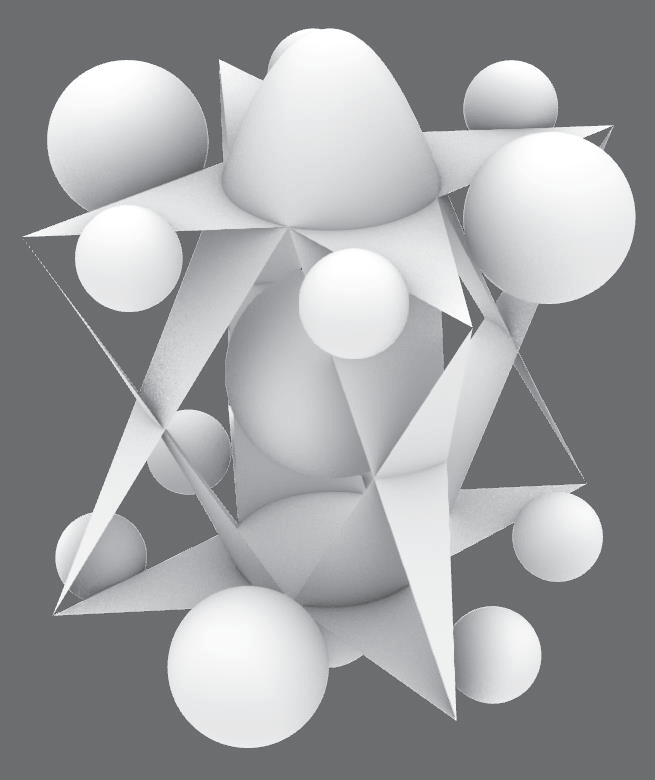
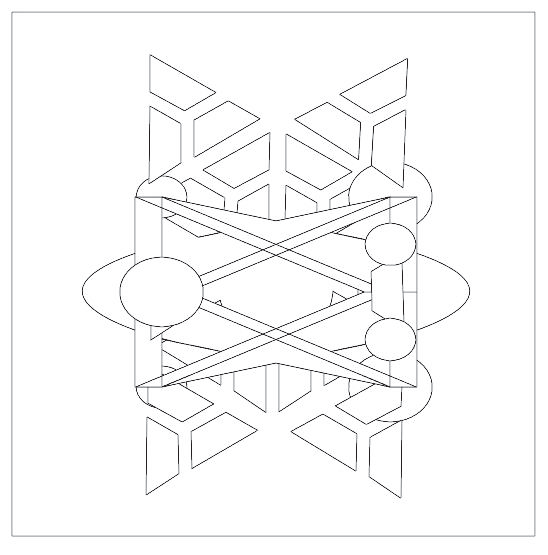
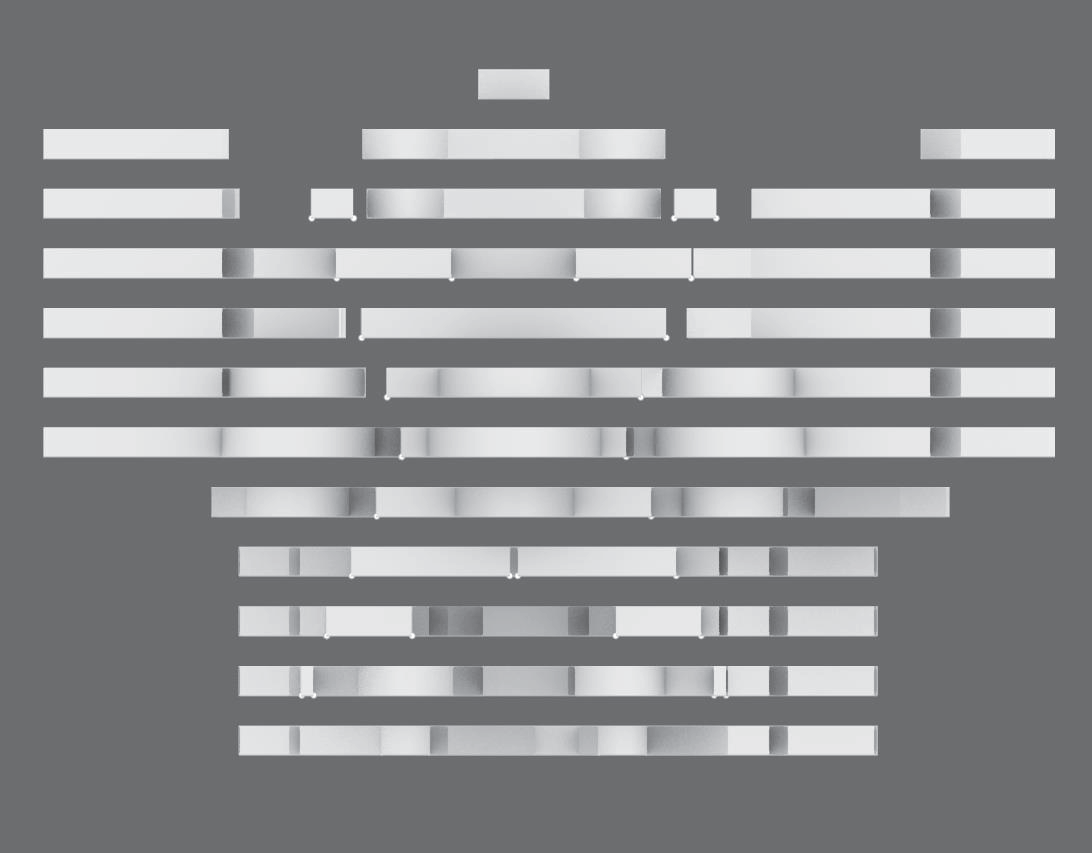
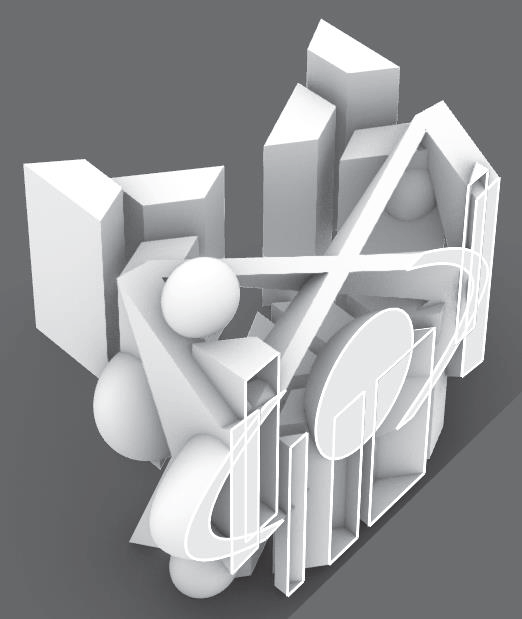
"Offset, Mirror", ⓒSehwan Park, 23, ⓒHyunseo Park, 23, Digital
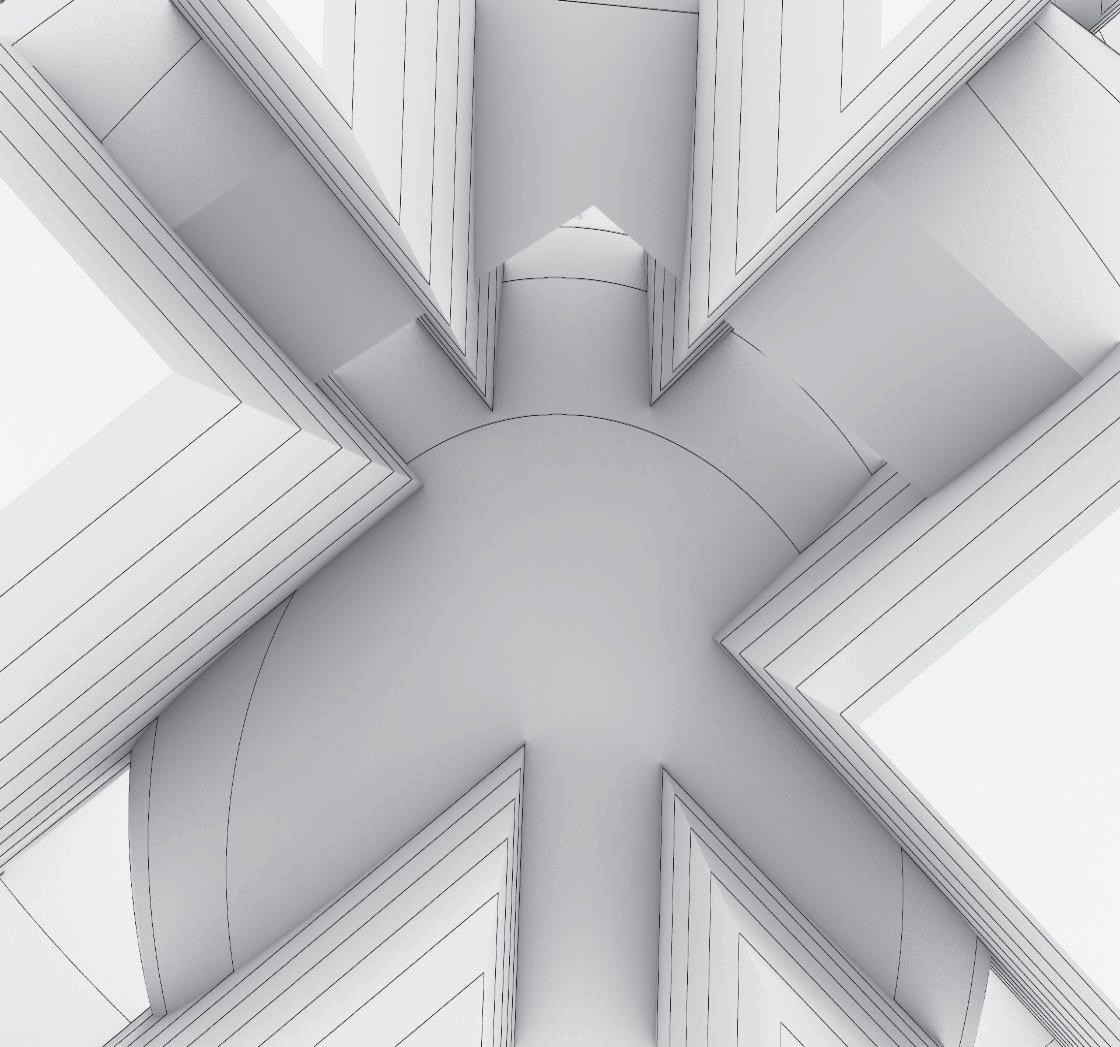

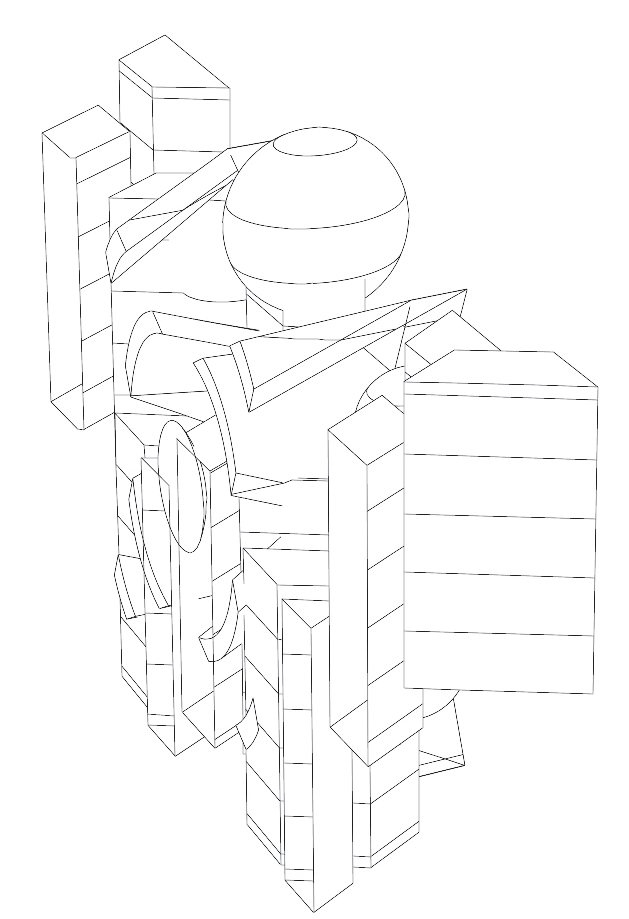
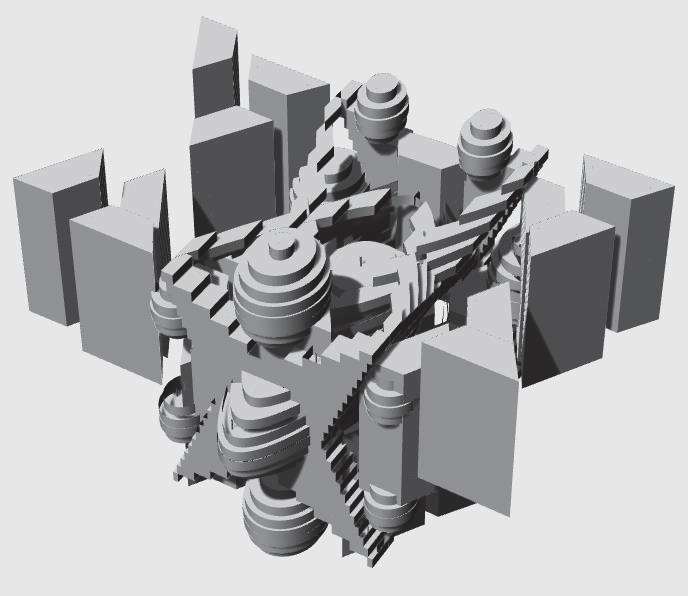
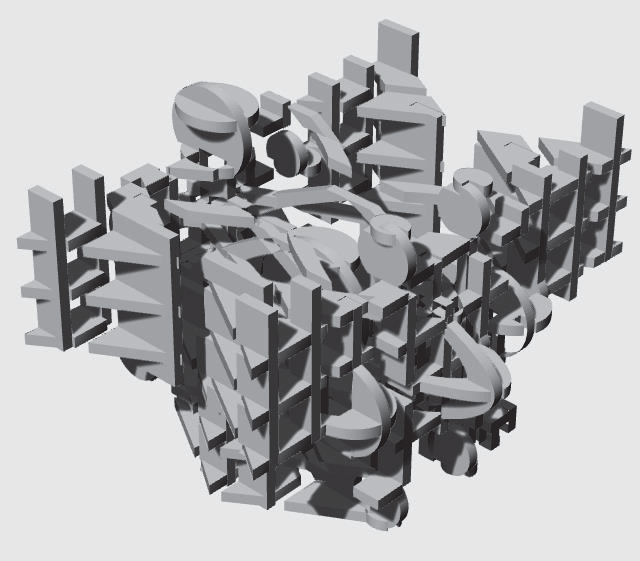
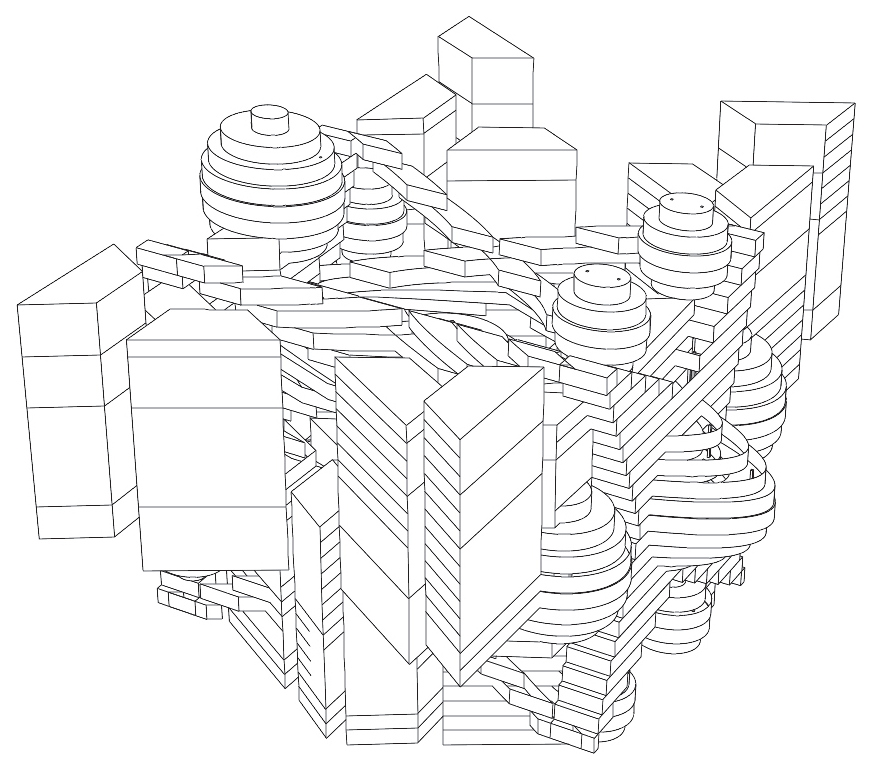
"Offset, Mirror", ⓒSehwan Park, 23, ⓒHyunseo Park, 23, Digital
Offset, Mirror
Primary gesture (design language):
- Offset bands crossing a mirror seam — “steps + slit.”
Starting sources (2D command drawings):
- A — Offset (#1): nested bands with constant interval; clear perimeter rule.
- B — Mirror (#4): bilateral layout with a centered axis and balance points.
Early gesture development (2D → 3D):
- A (#2–#3): bands terrace upward; spacing rules survive thickness changes.
- B (#5–#6): mirrored cavities form paired inlets; seam stays crisp in ortho views.
Composite drawing (#7+):
- Terraces pinch at the seam to register the mirrored opening.
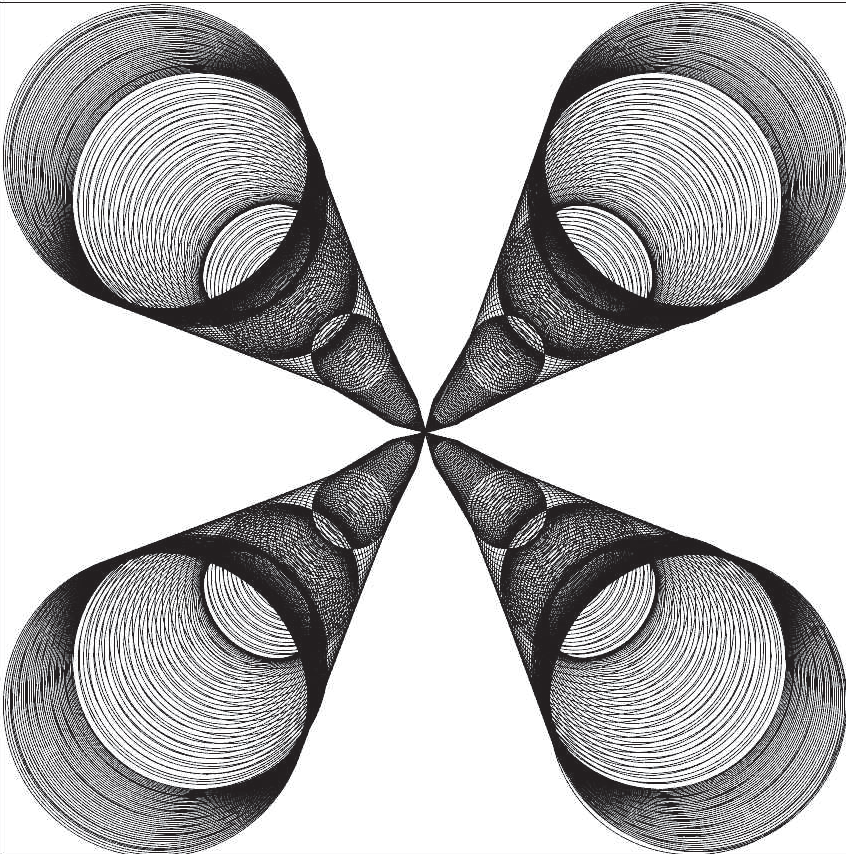
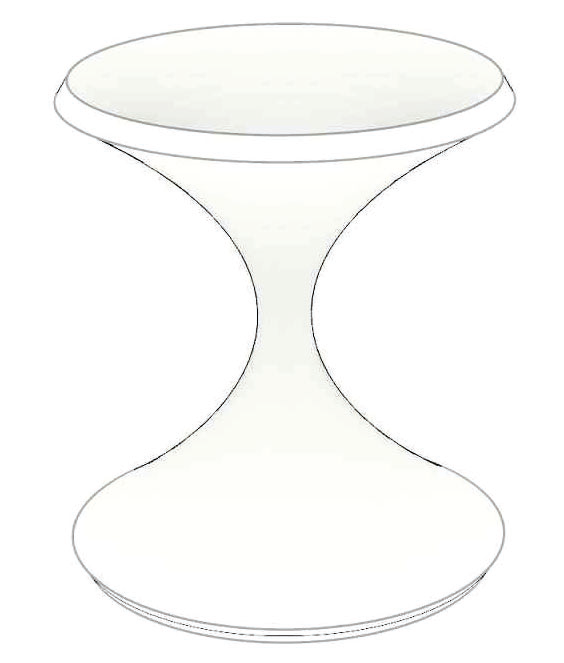
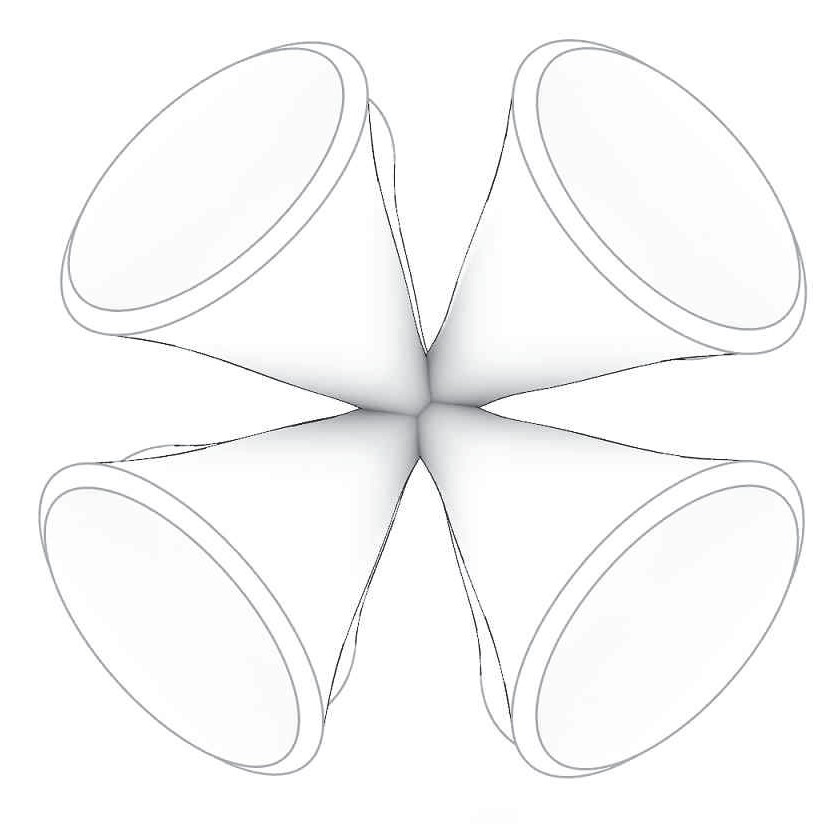
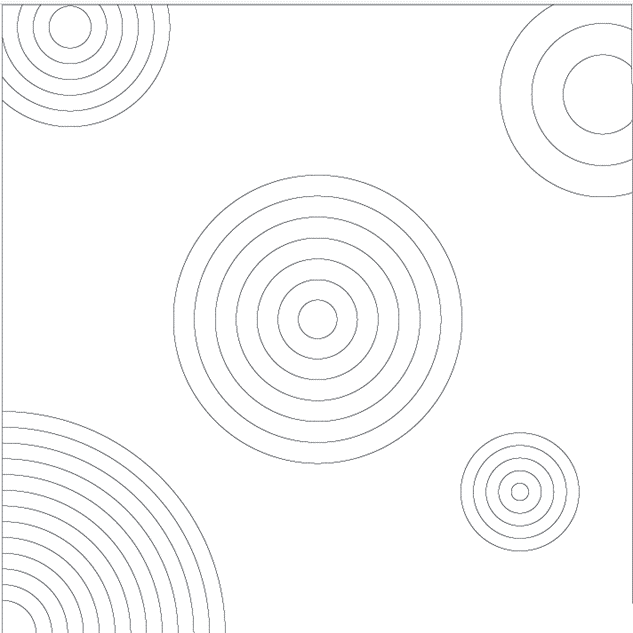
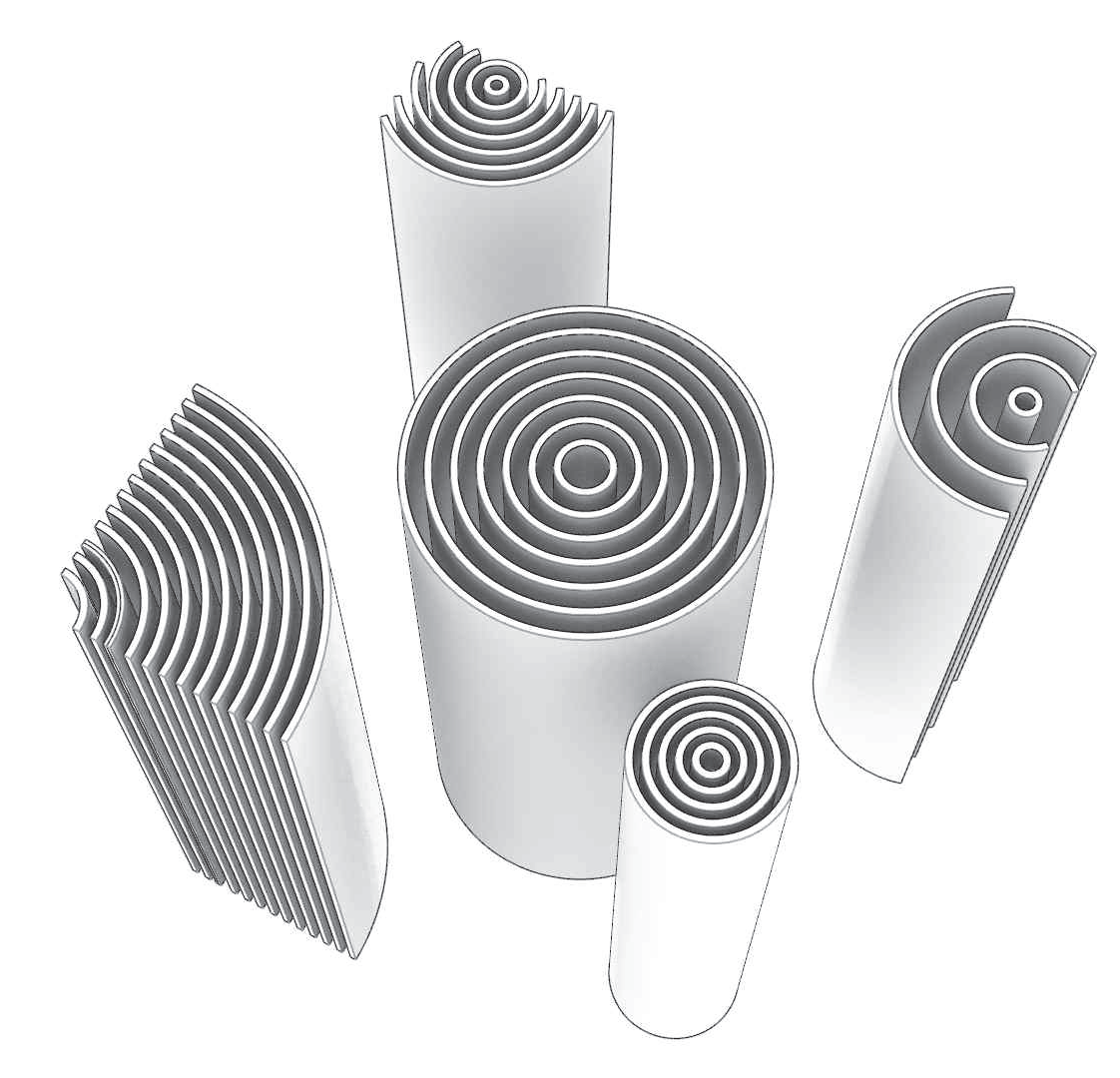
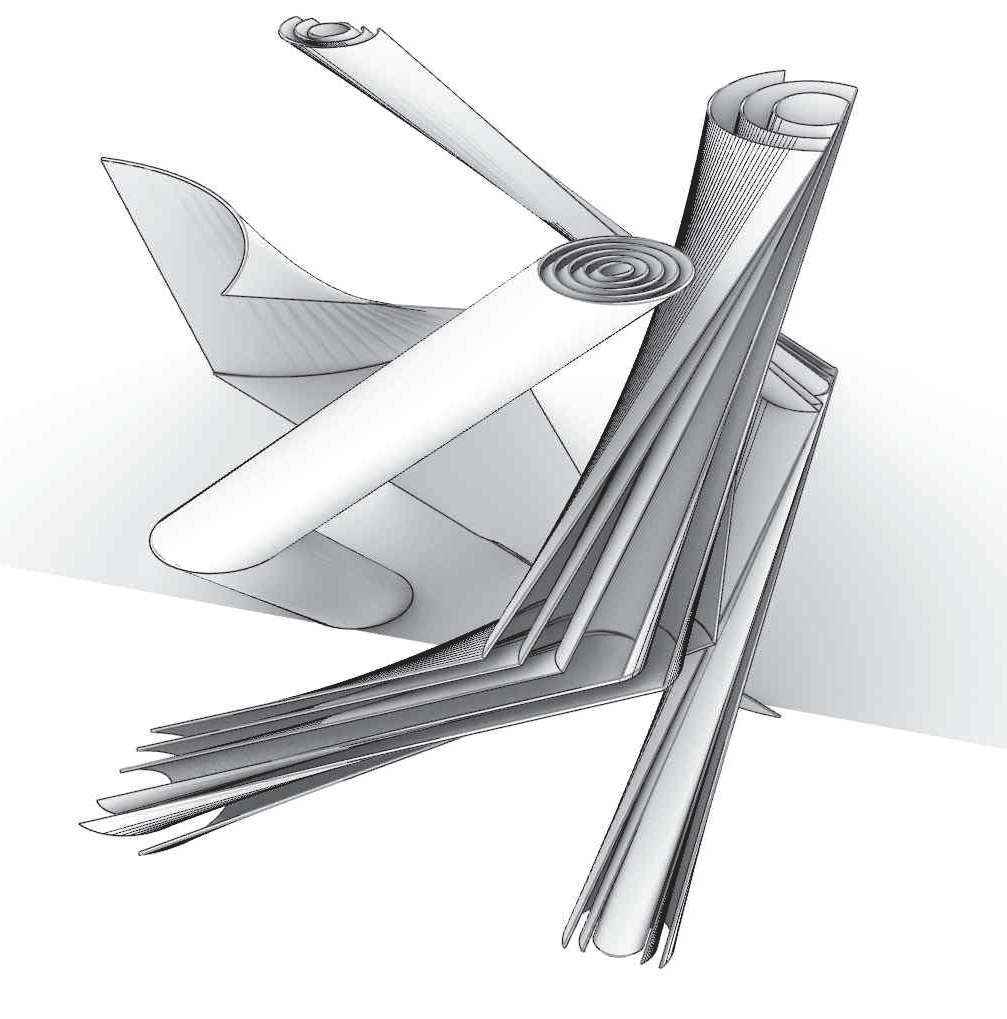
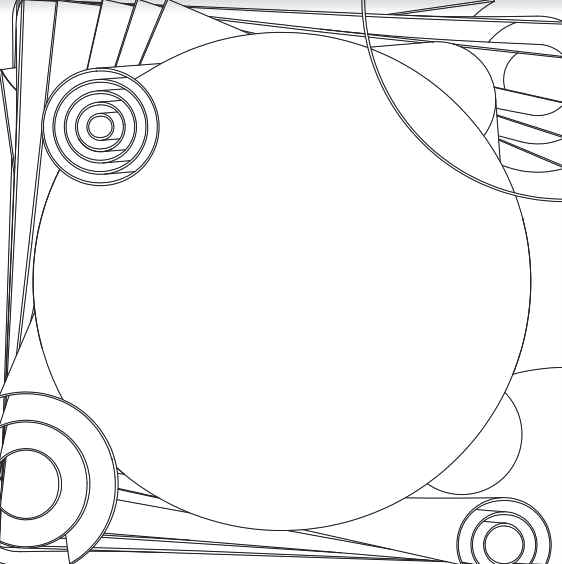
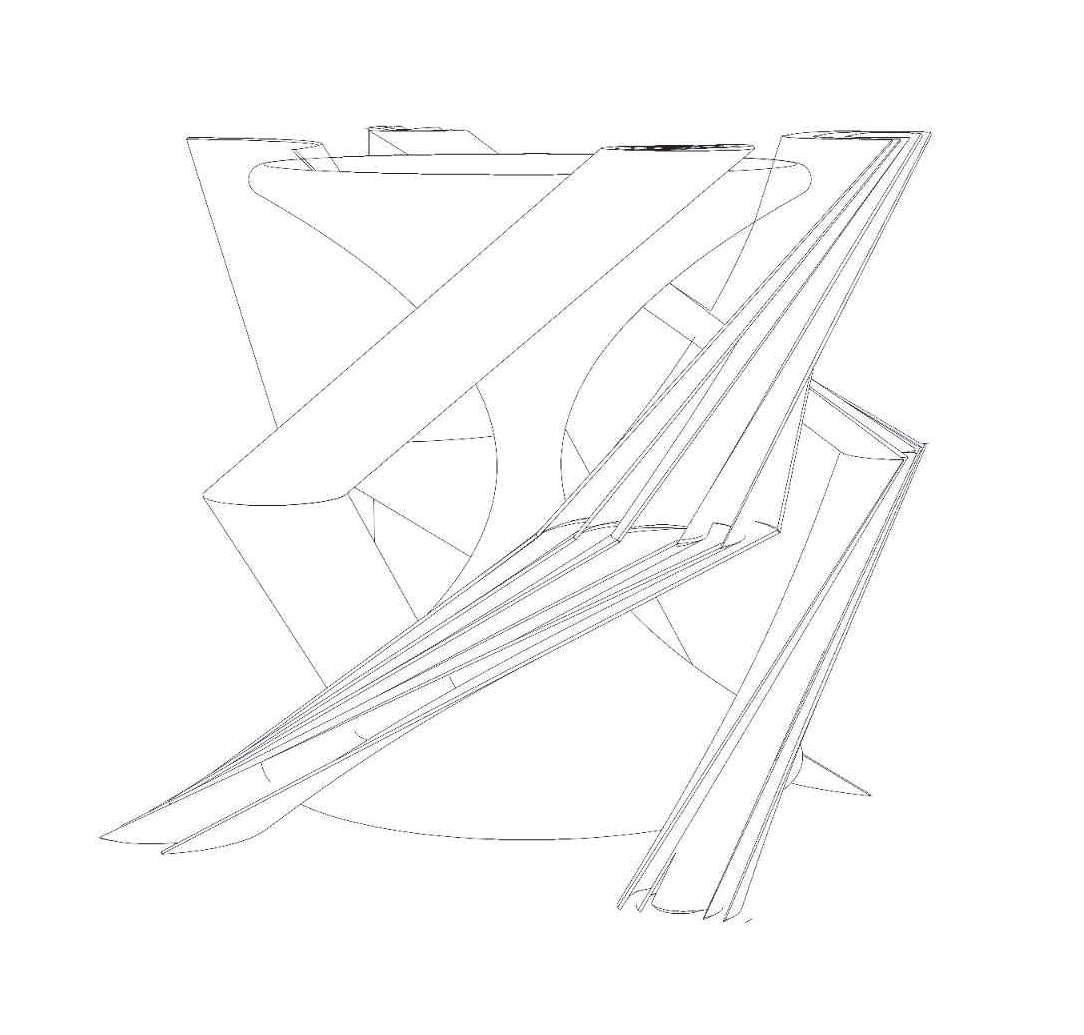
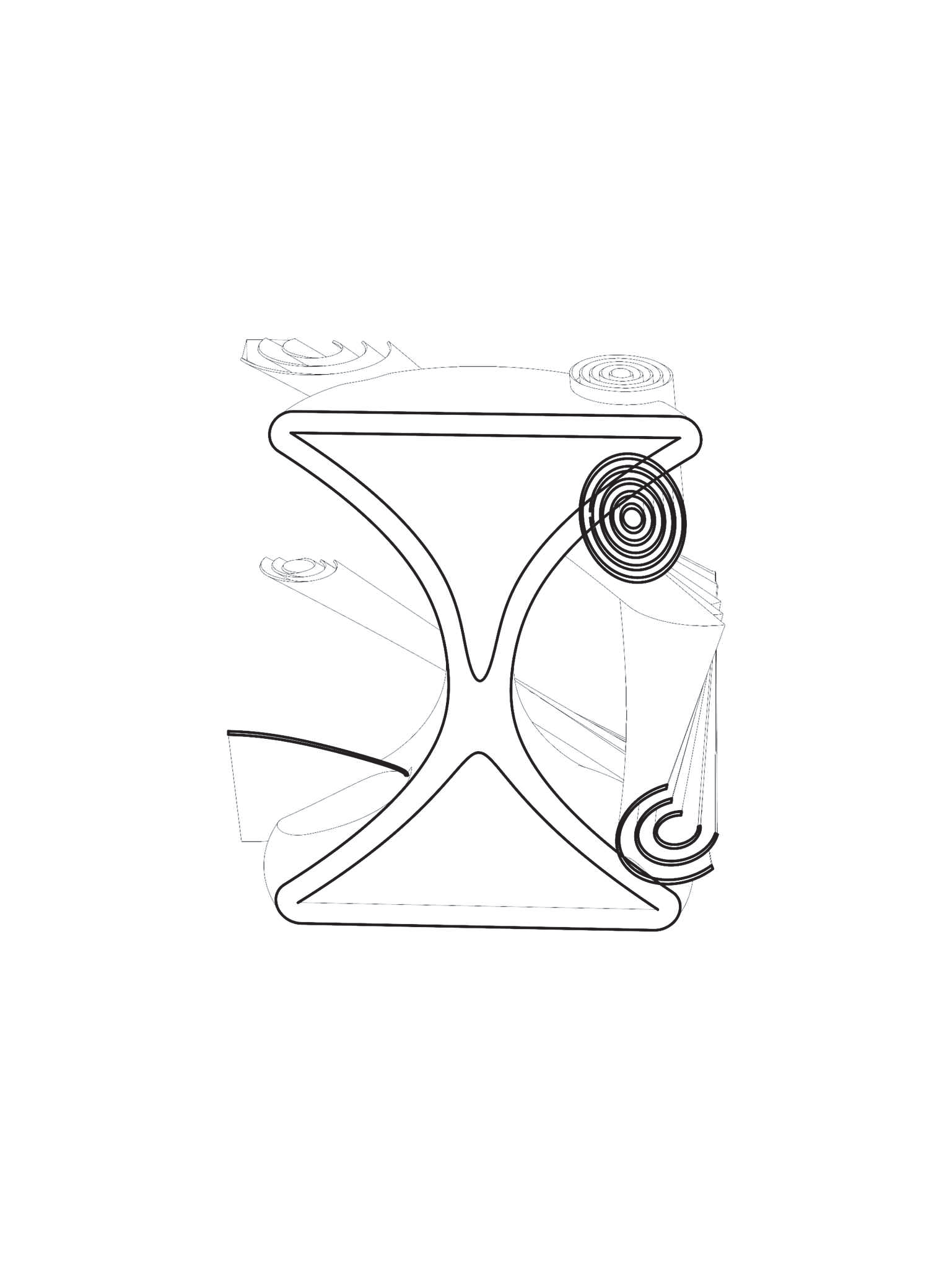
"Scale, Offset", ⓒGeonwoo Park, 21, ⓒSeokho Ko, 23, Digital
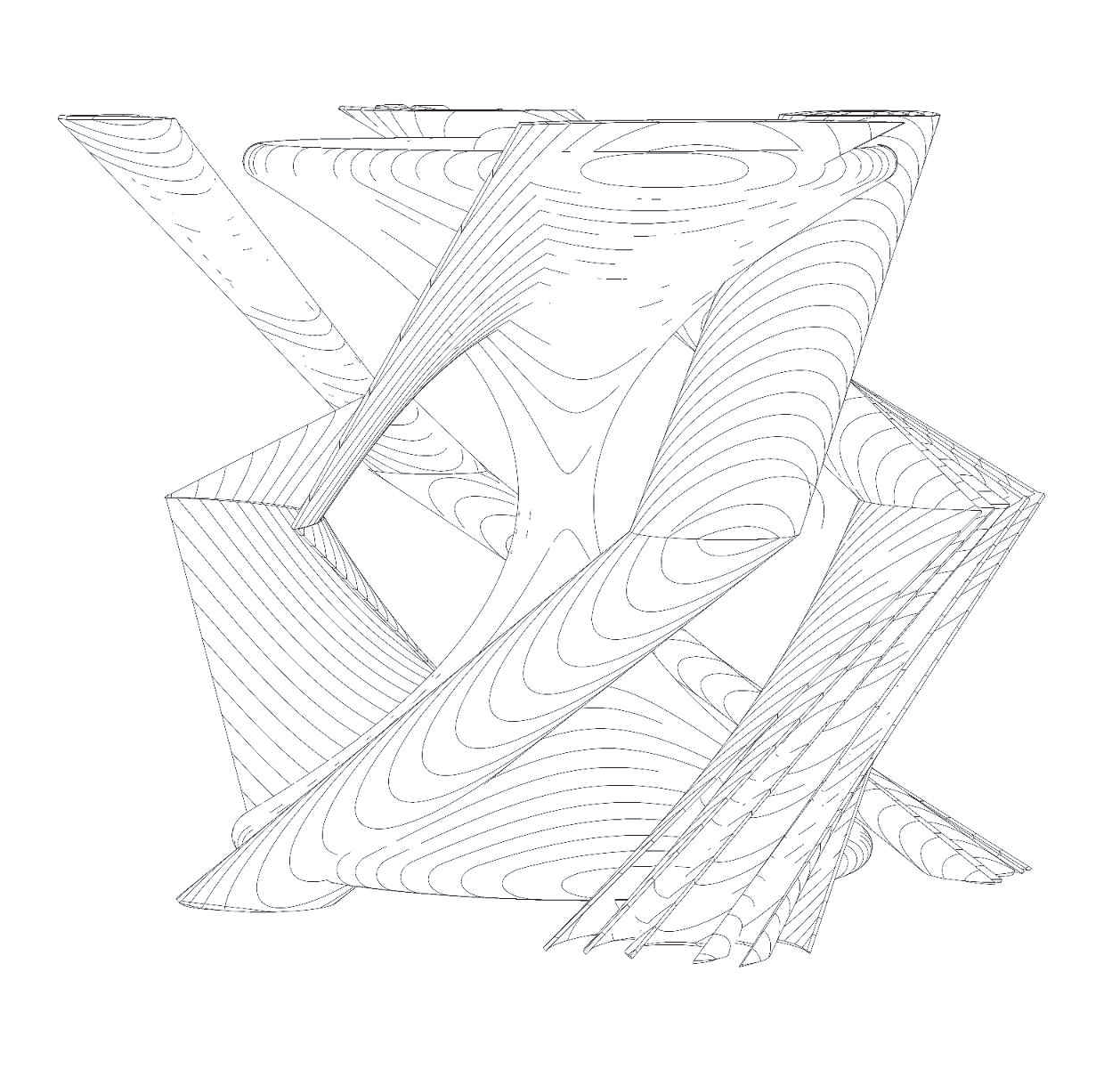
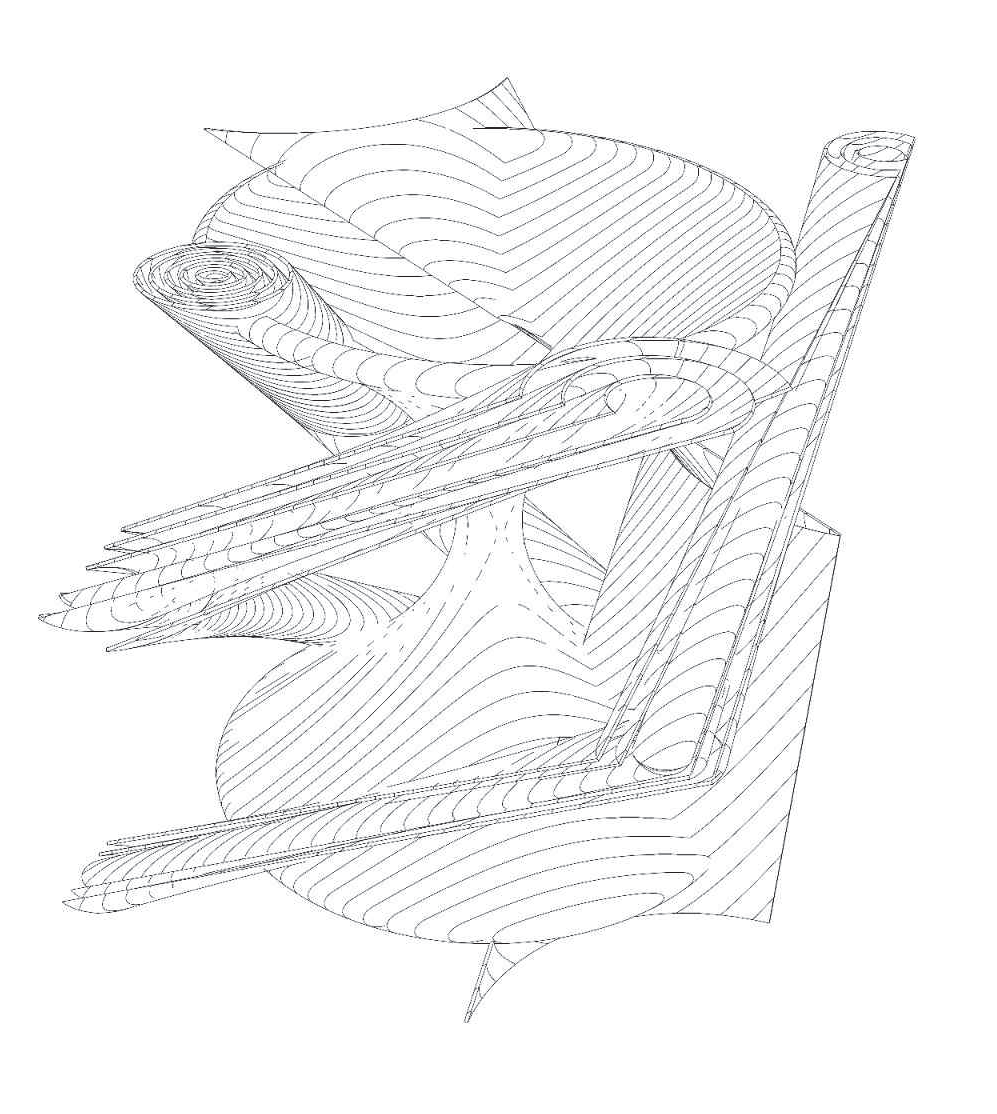
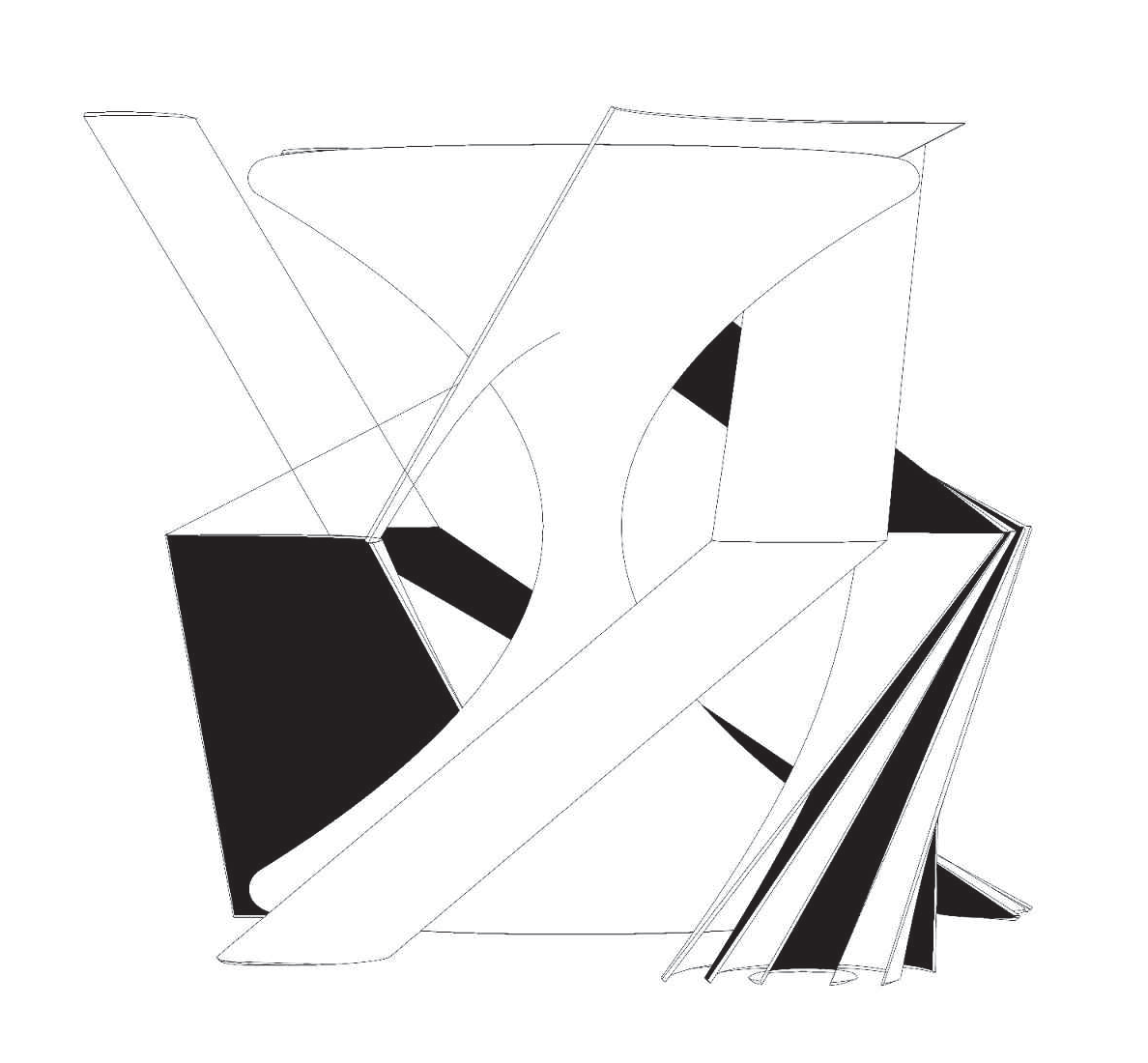
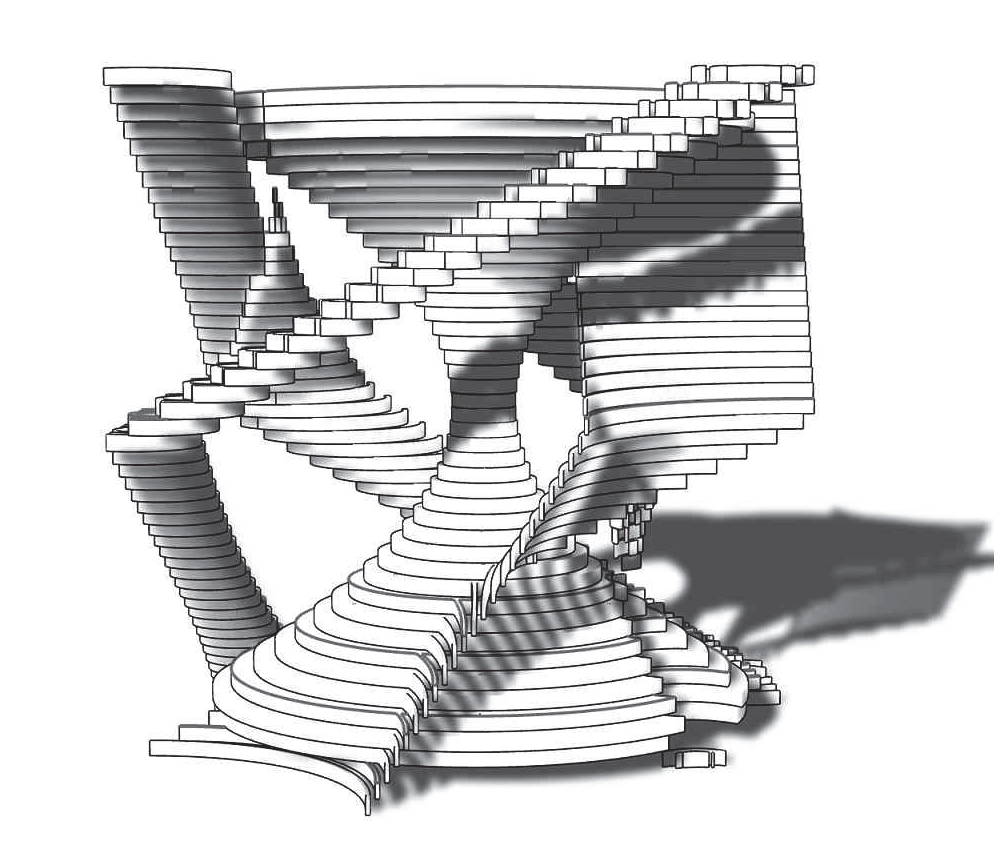
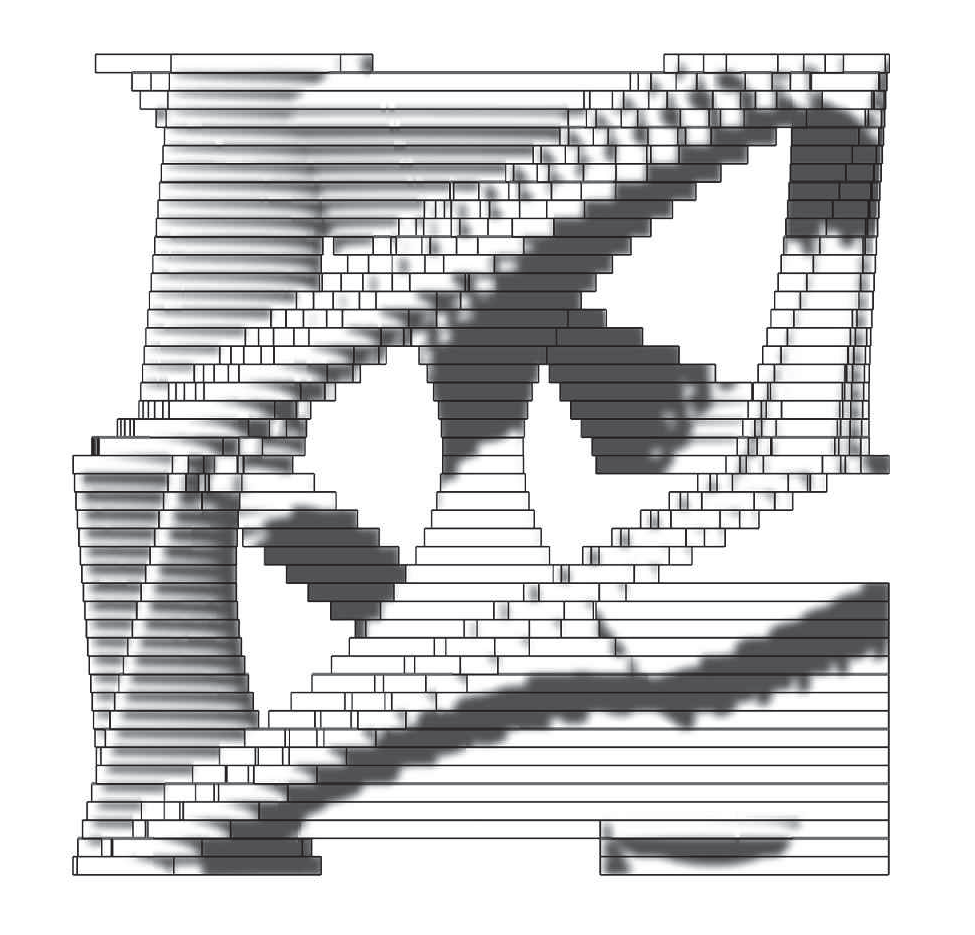
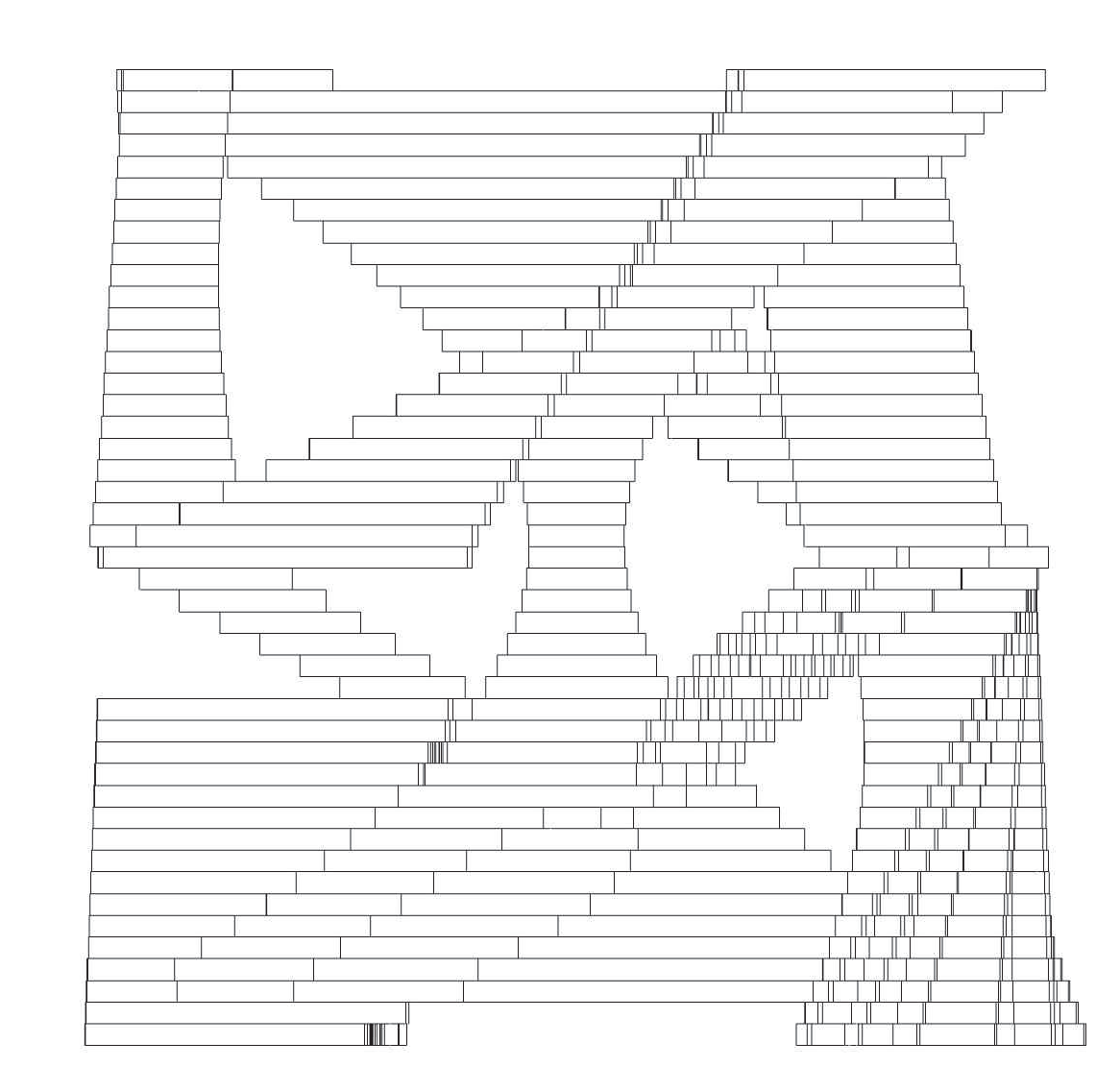
"Scale, Offset", ⓒGeonwoo Park, 21, ⓒSeokho Ko, 23, Digital
Scale, Offset
Primary gesture (design language):
- Graded stack coupled with step-bands — “size gradient + terraces.”
Starting sources (2D command drawings):
- A — Scale (#1): module sizes increase/decrease along a path; emphasis gradient.
- B — Offset (#4): concentric/parallel increments with regular spacing.
Early gesture development (2D → 3D):
- A (#2–#3): scaled modules extrude into a tiered cone/basin; gradient reads in silhouette.
- B (#5–#6): offsets become ring plates; interval tuning separates primary vs. secondary rings.
Composite drawing (#7+):
- Gradient tiers align with offset plates for a legible crown-and-base.
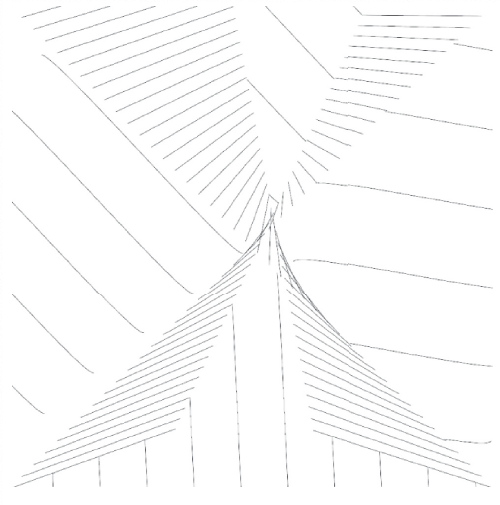
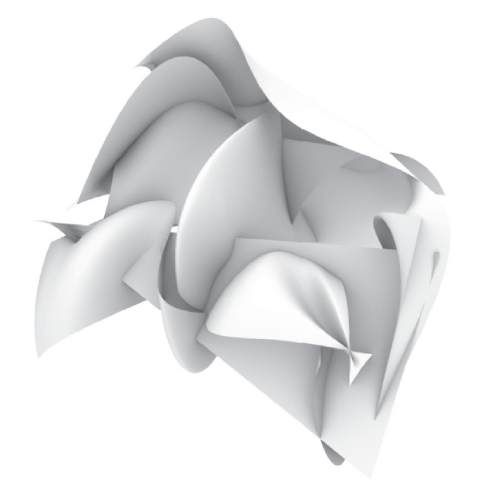
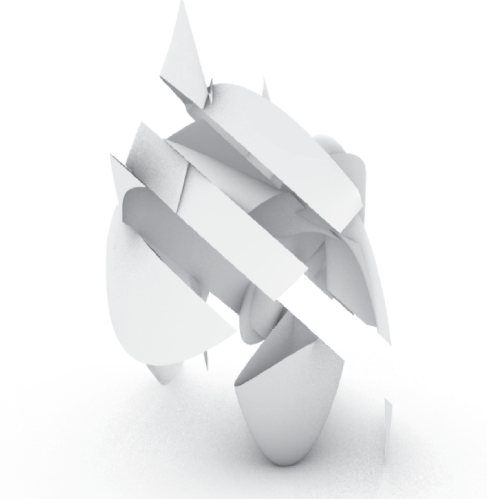
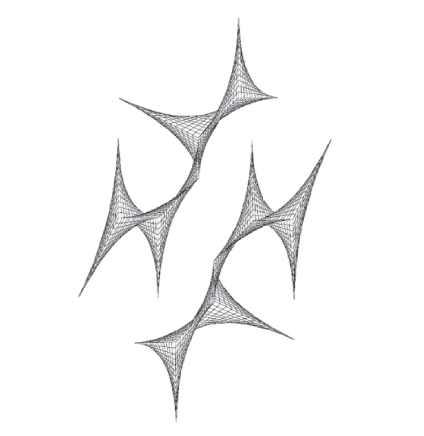
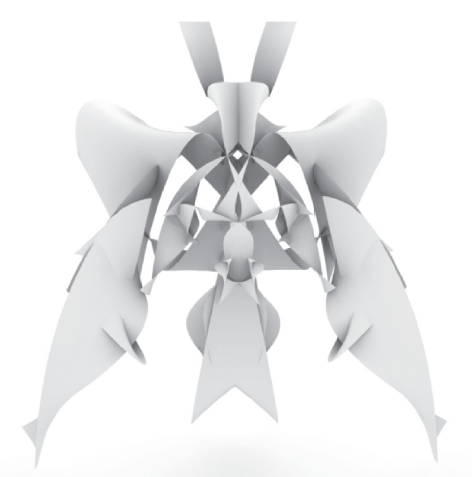
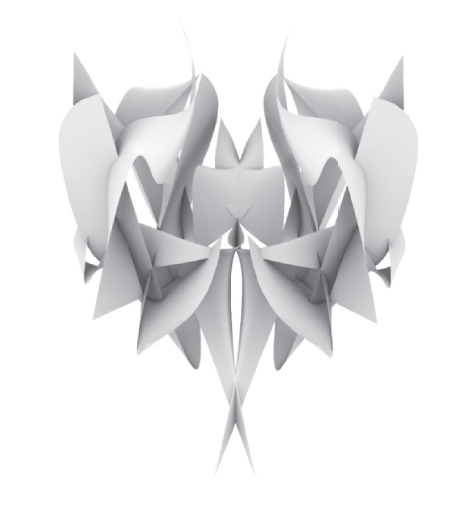
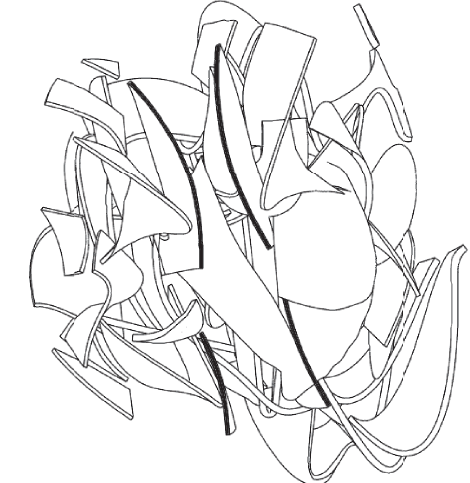
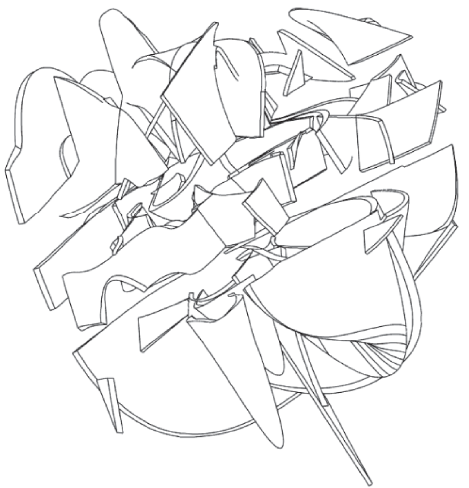
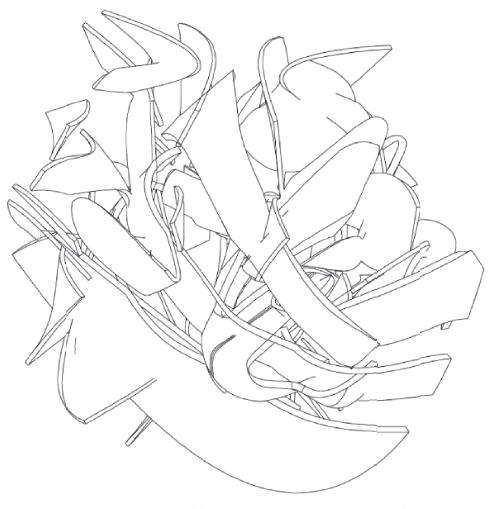
"Trim, Mirror", ⓒJihyun Kang, 23, ⓒHw, 22, Digital

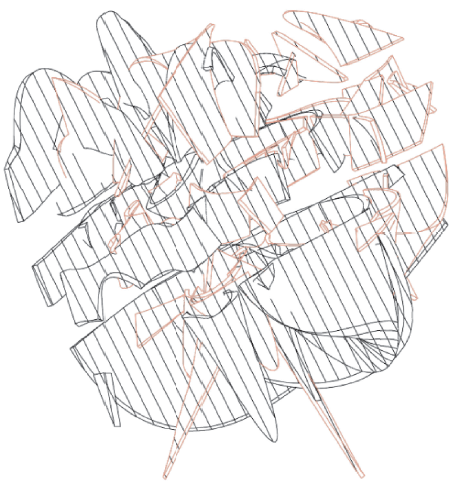
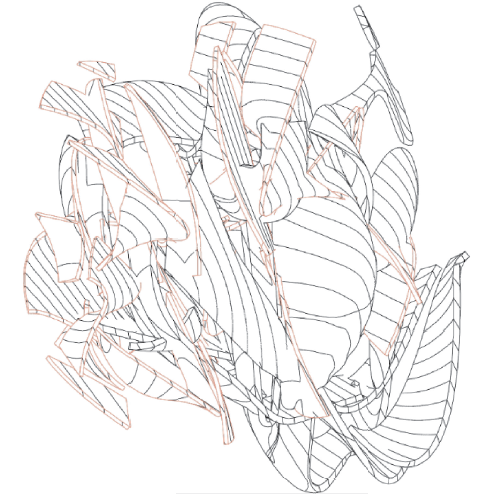
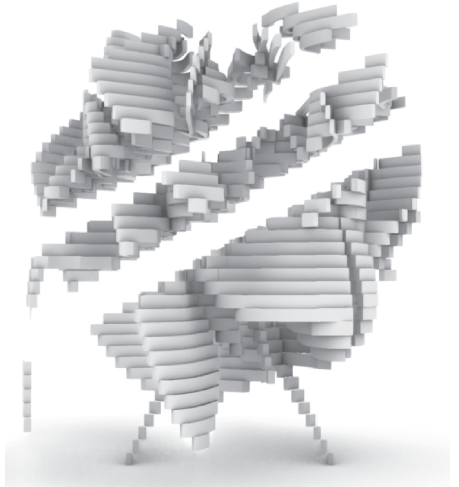
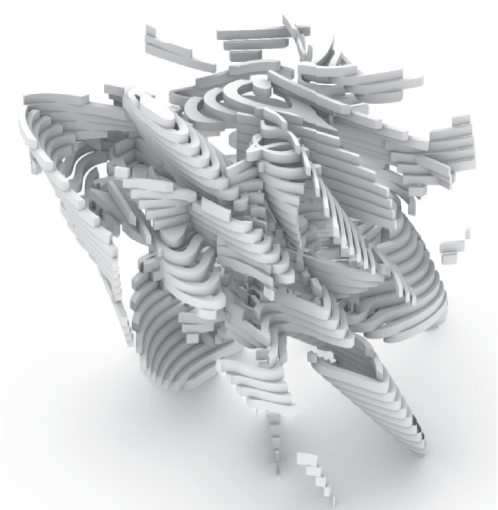
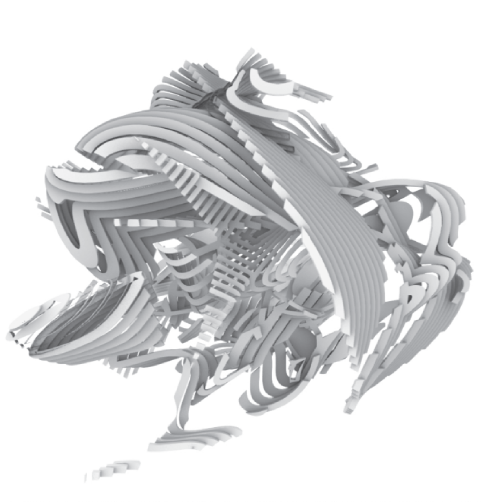
"Trim, Mirror", ⓒJihyun Kang, 23, ⓒHwiseung Kim, 22, Digital
Trim, Mirror
Primary gesture (design language):
- Mirrored notch cavities organize the mass — “paired cuts.”
Starting sources (2D command drawings):
- A — Trim (#1): subtracted wedges; chamfered thresholds and void edges.
- B — Mirror (#4): bilateral balance with a hinge-like axis.
Early gesture development (2D → 3D):
- A (#2–#3): cuts deepen into V-notches; chamfers steer flow.
- B (#5–#6): mirrored hollows with equal span; seam reads as a joint.
Composite drawing (#7+):
- Twin cavities align across the axis; keys/tabs articulate the joint.
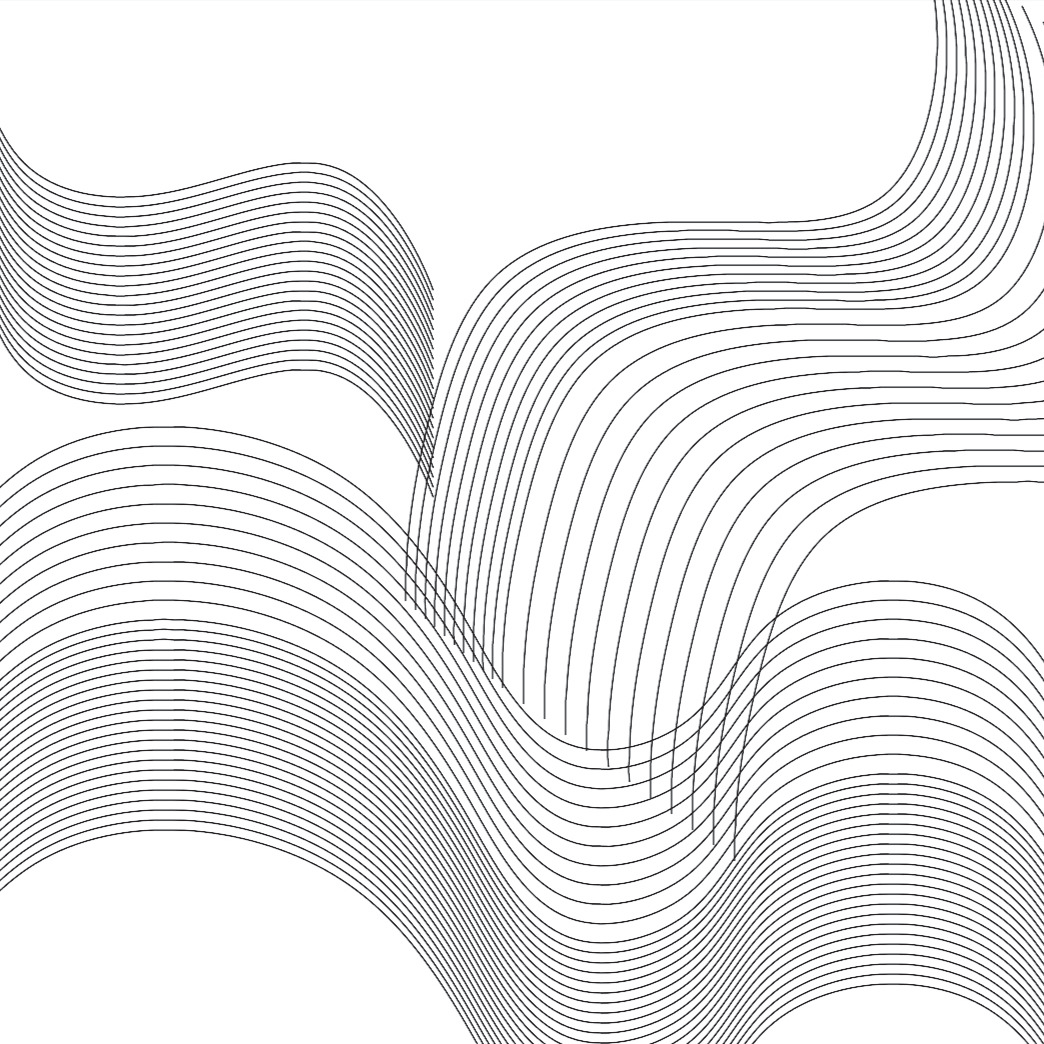
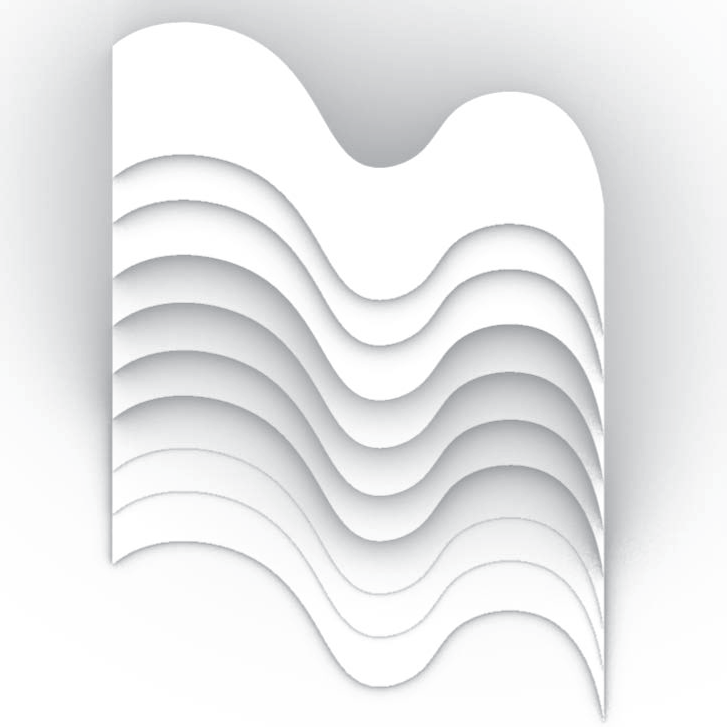
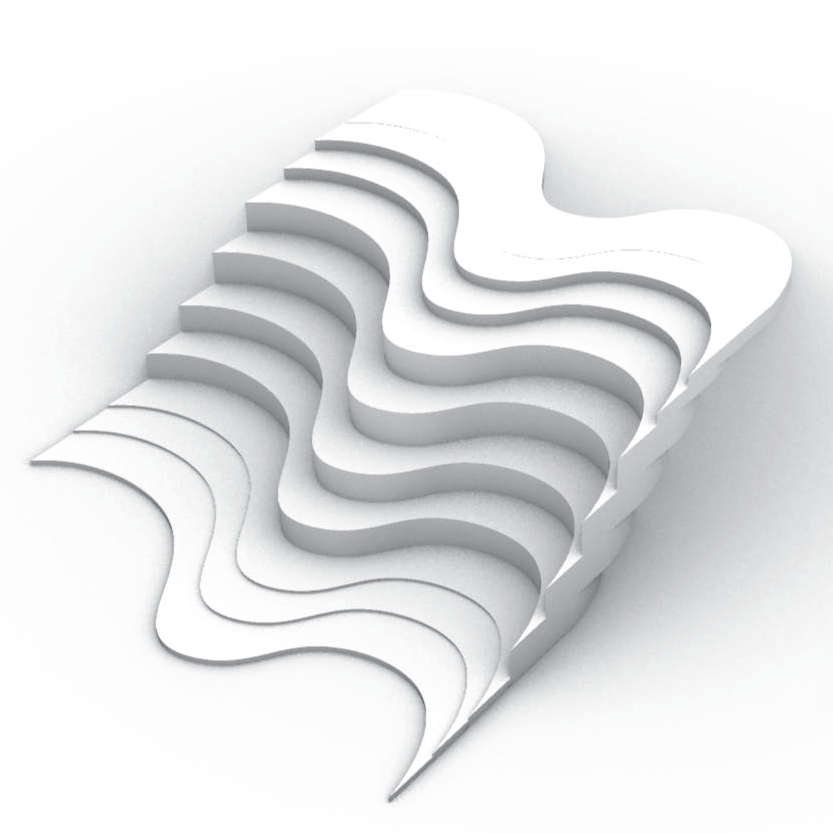
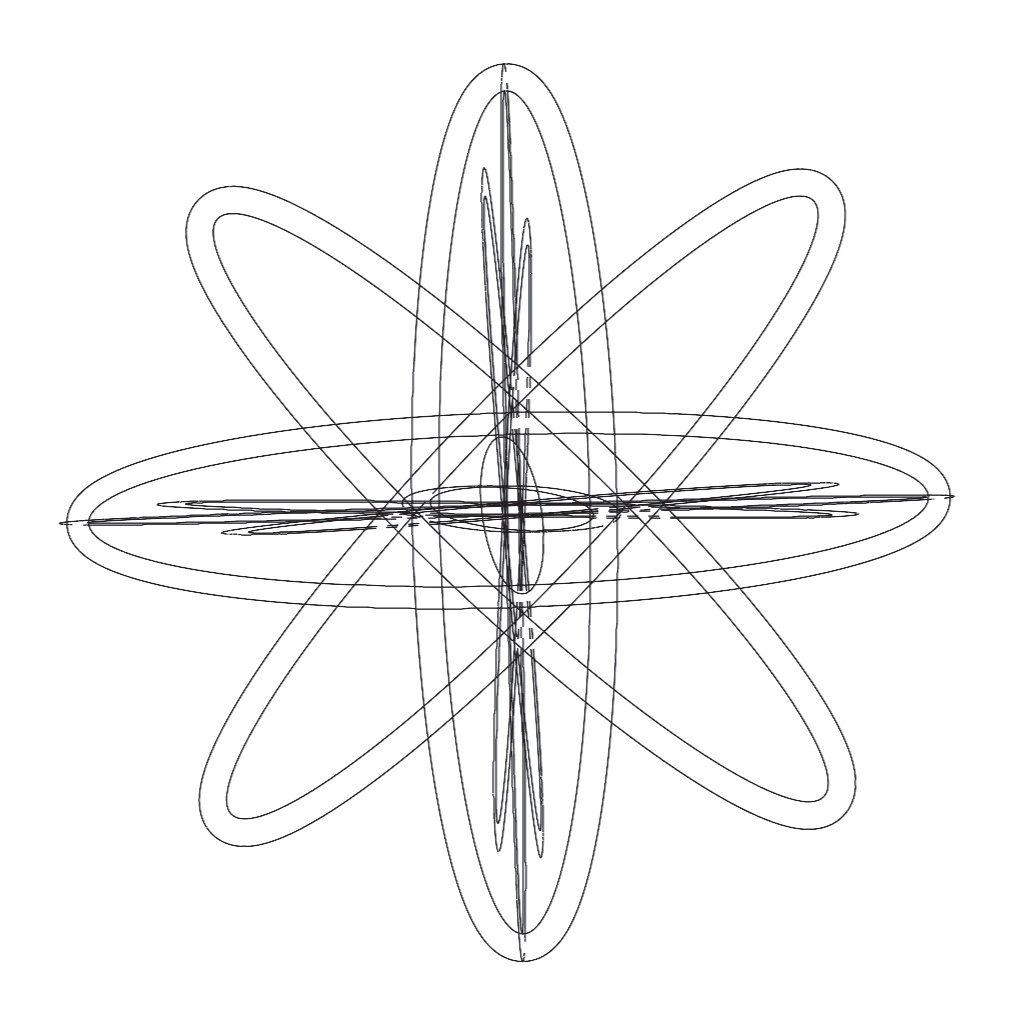
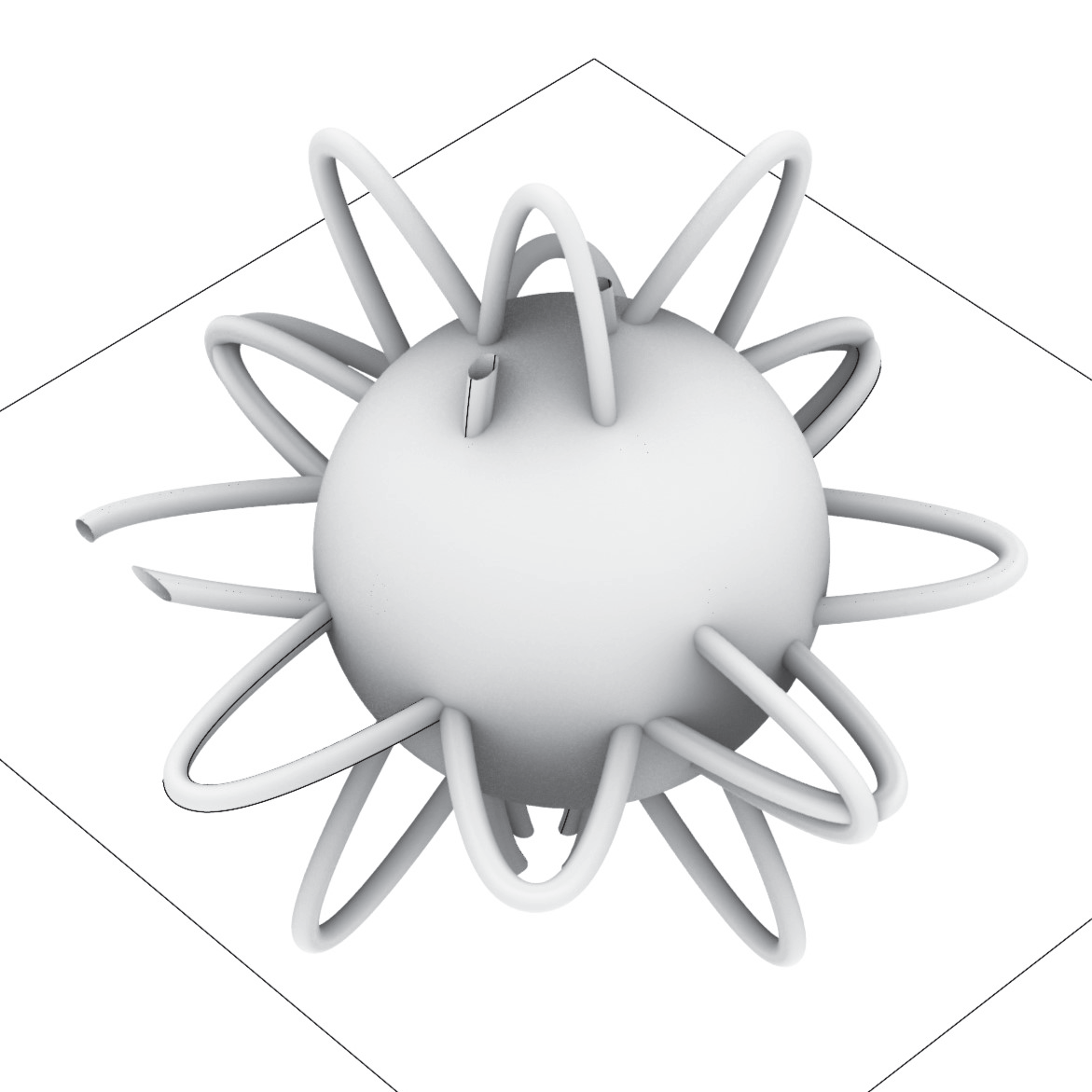
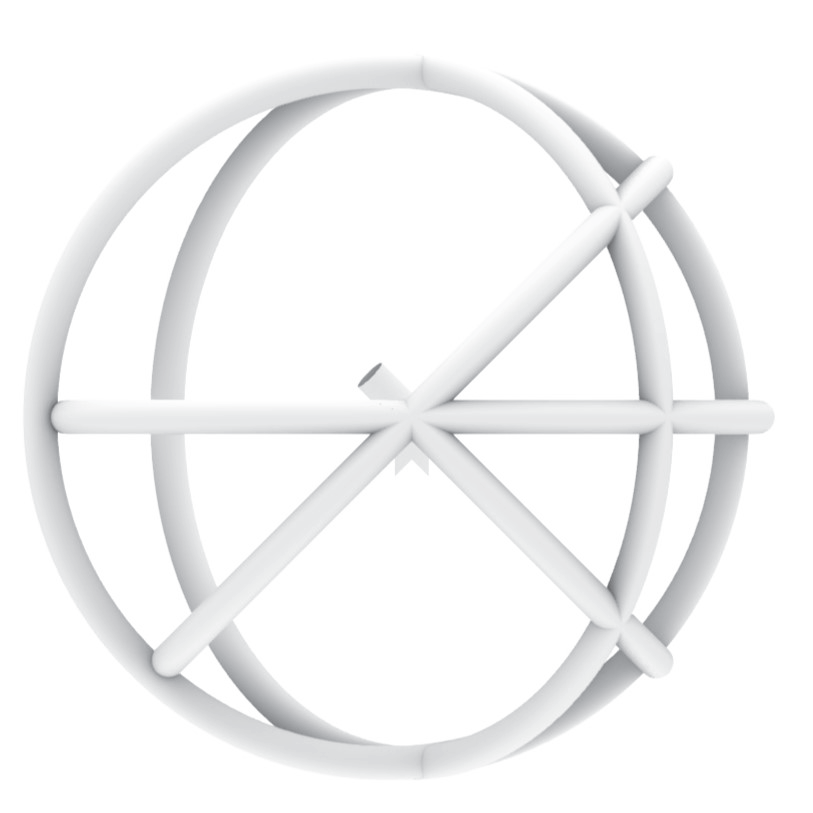
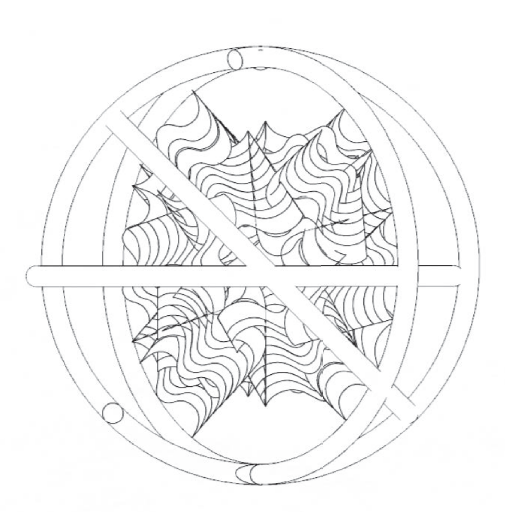
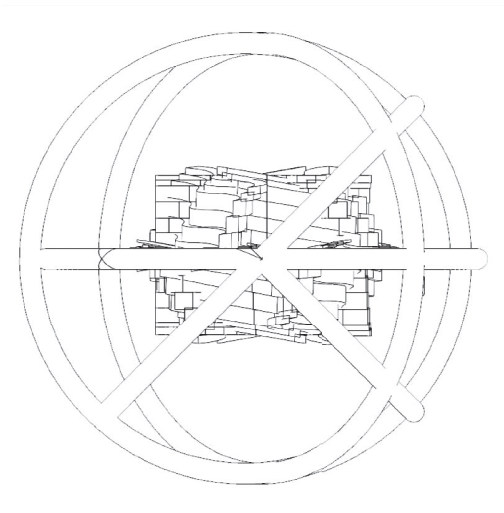
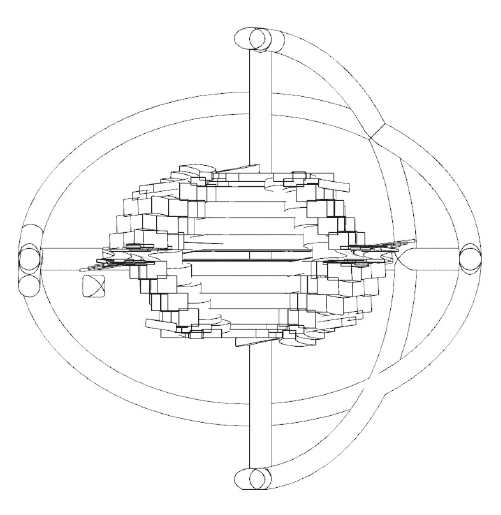
"Offset, Trim", ⓒSeyeon Oh, 23, ⓒHyunjin Park, 23, Digital
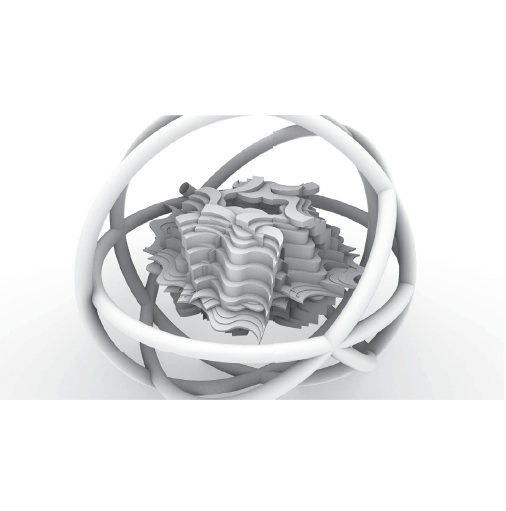
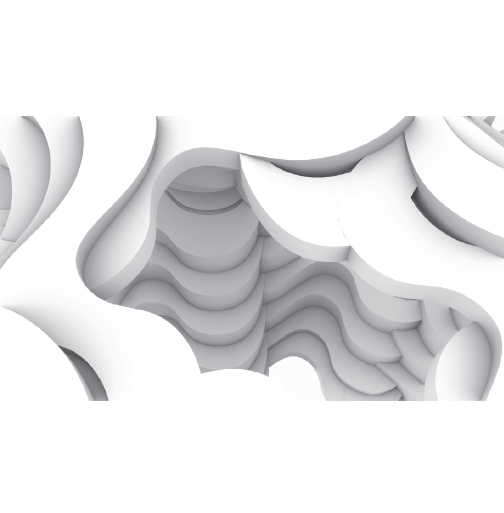

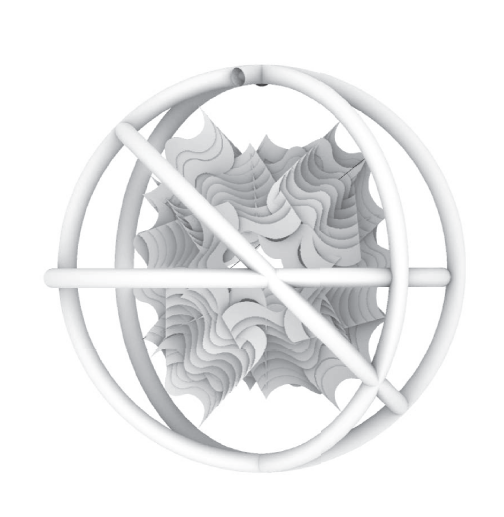
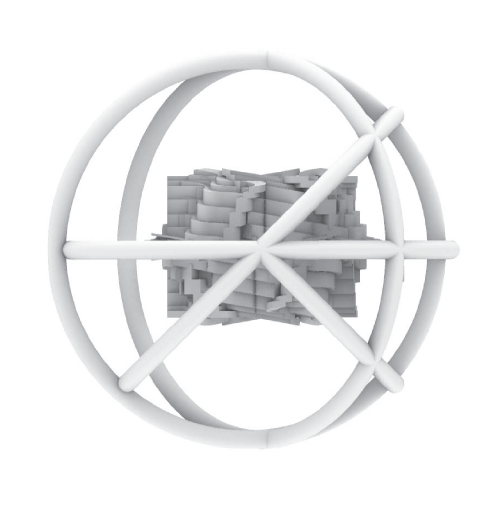
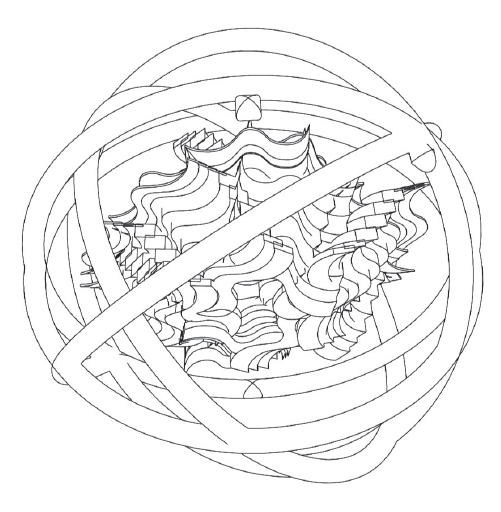
"Offset, Trim", ⓒSeyeon Oh, 23, ⓒHyunjin Park, 23, Digital
Offset, Trim
Primary gesture (design language):
- Layered contours selectively cropped — “steps + cut.”
Starting sources (2D command drawings):
- A — Offset (#1): band field with ticked intervals.
- B — Trim (#4): decisive cut planes; openings define thresholds.
Early gesture development (2D → 3D):
- A (#2–#3): offsets thicken into lamina; gutters appear between bands.
- B (#5–#6): trims pierce the lamina to expose keyed slits.
Composite drawing (#7+):
- Cropped terraces register a through-cut without losing the step rhythm.

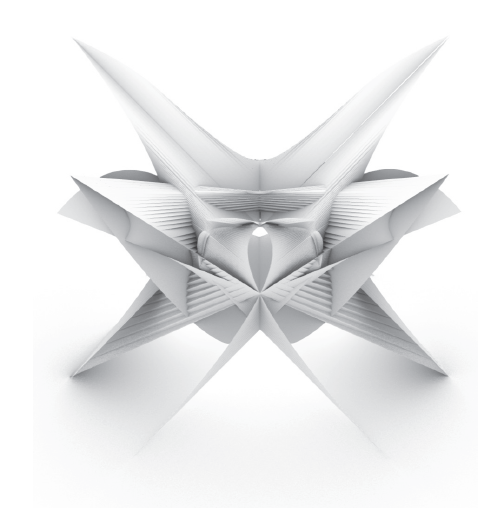
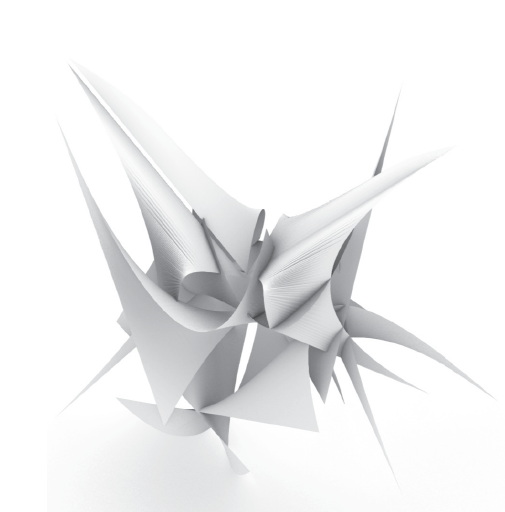
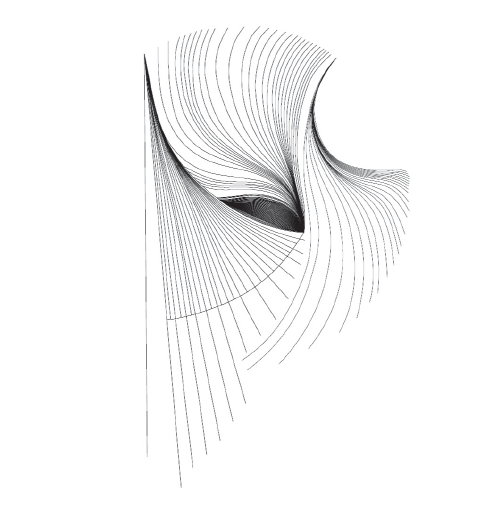
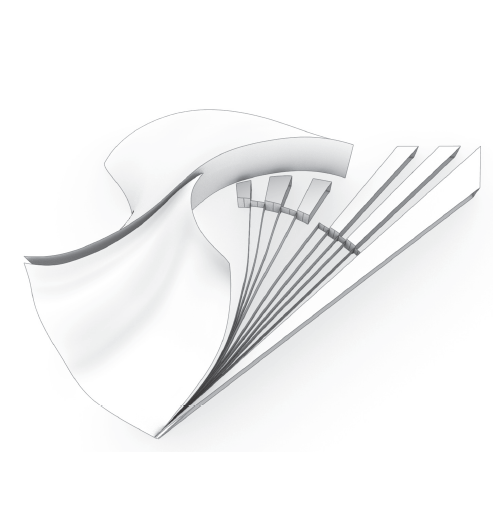
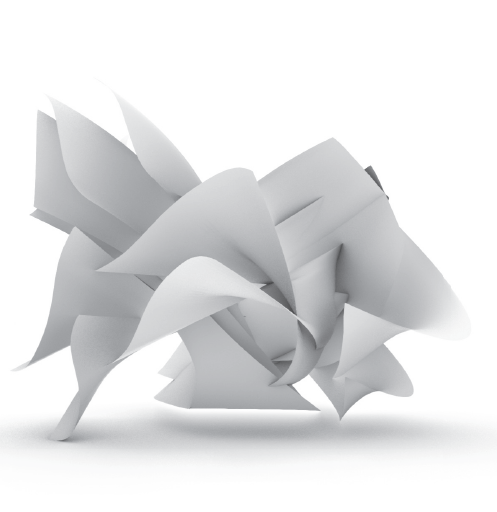
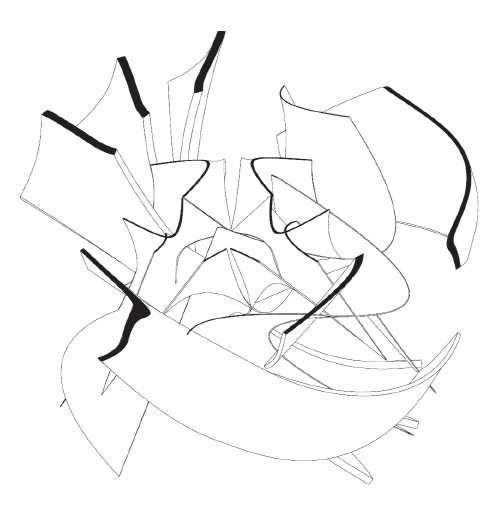
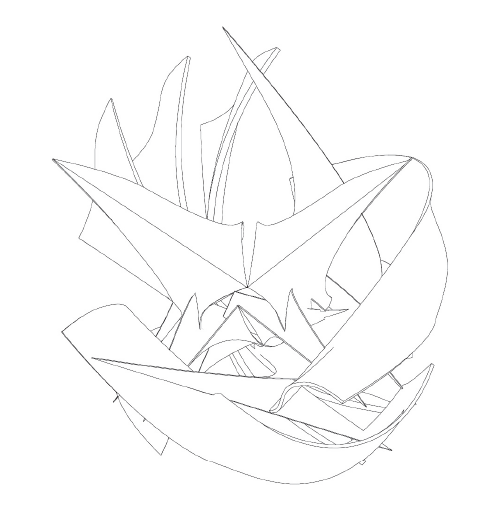
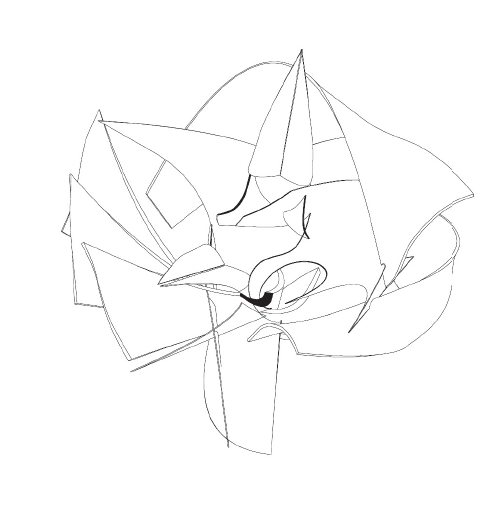
"Mirror, Rotate", ⓒYoojin Jeon, 23, ⓒSuhyun Lee, 23, Digital
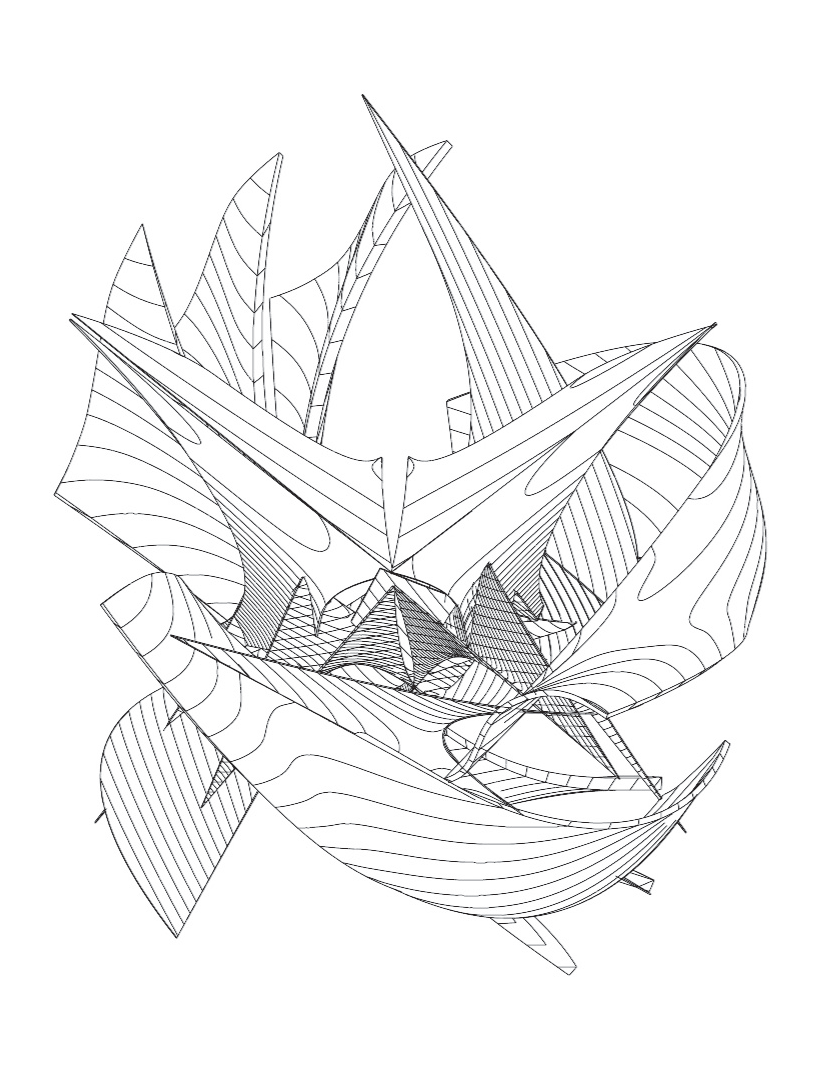
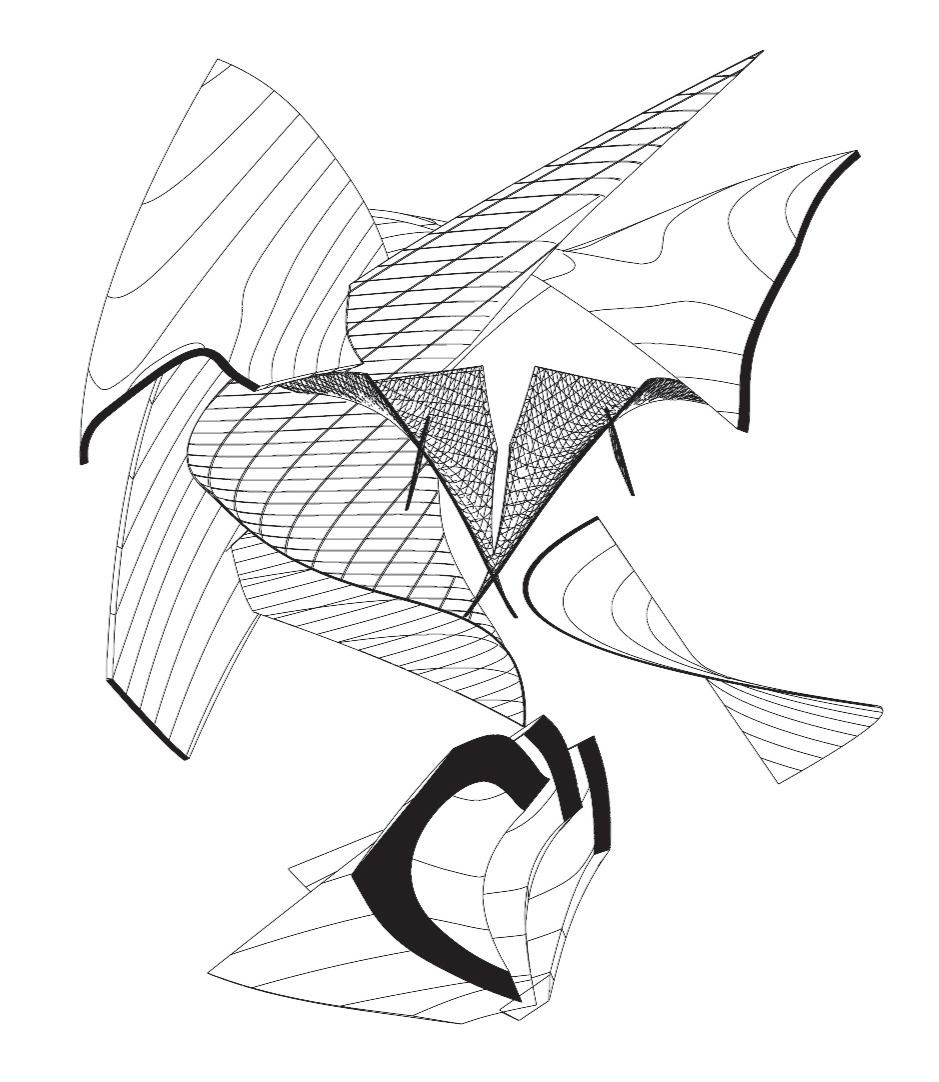
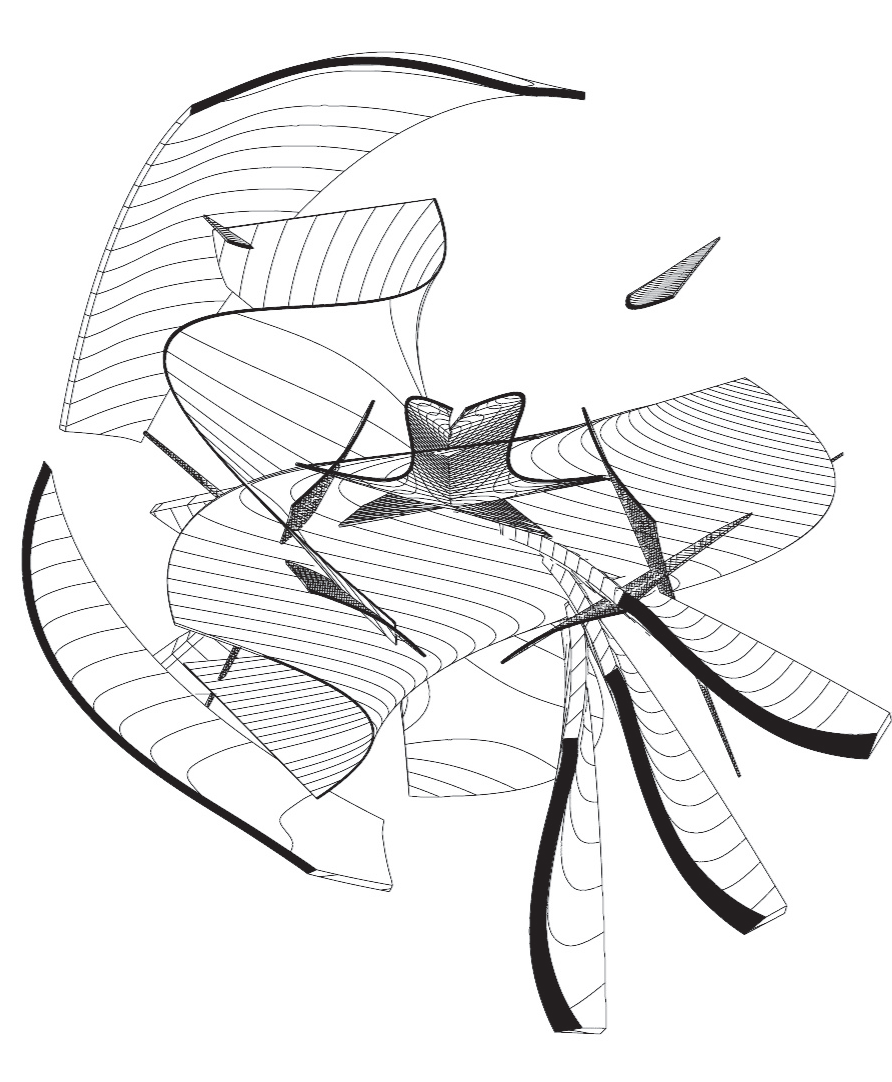
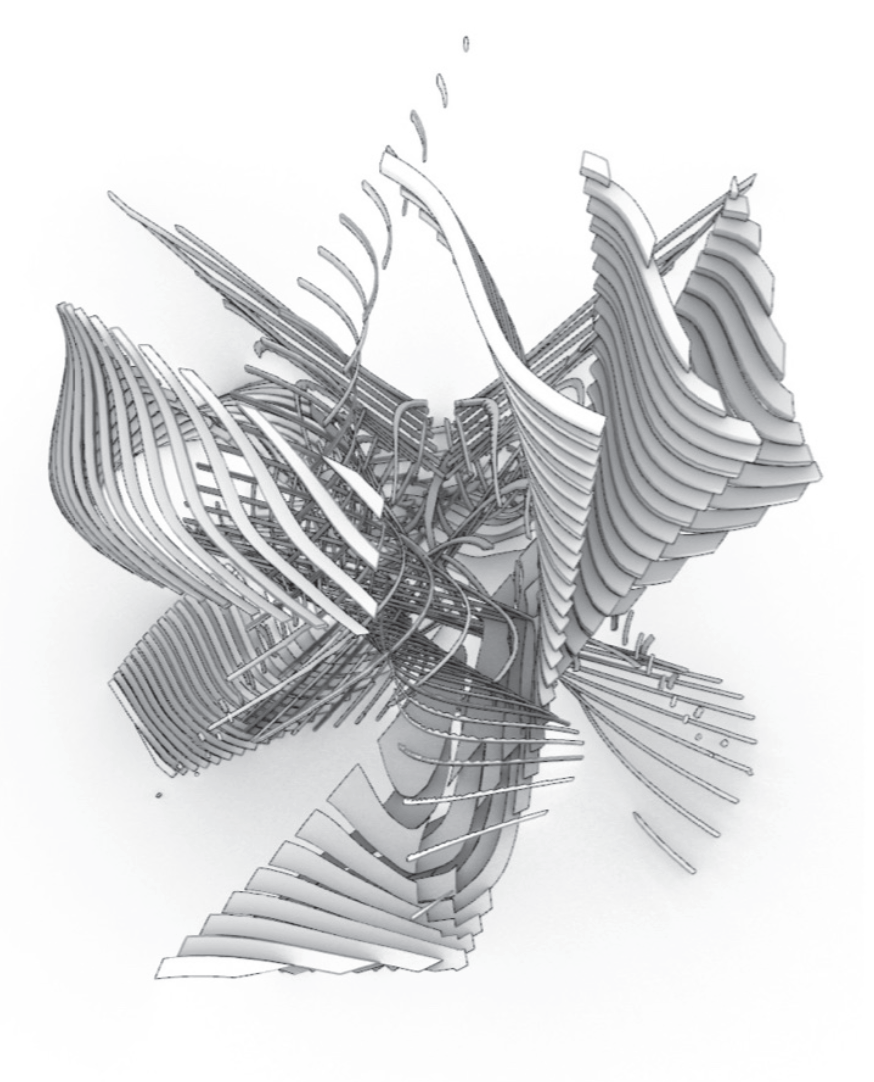
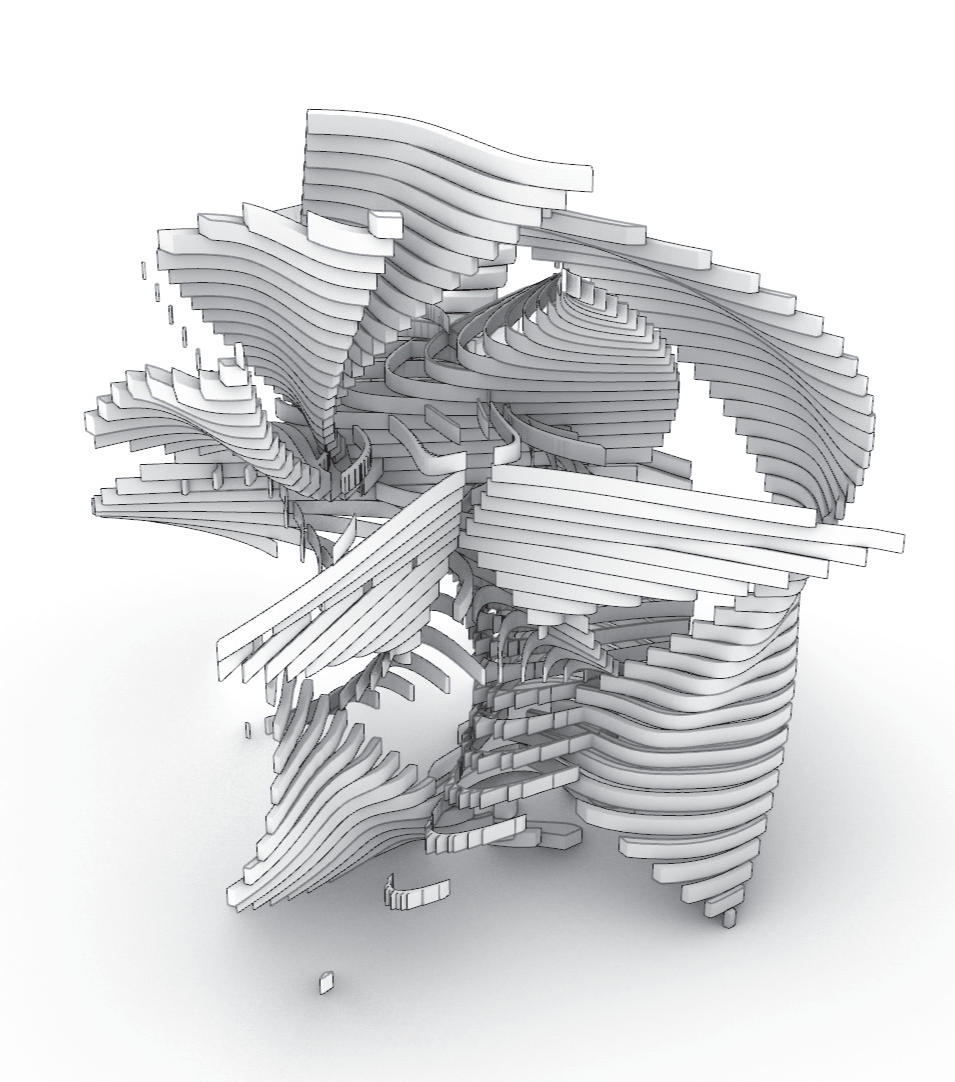
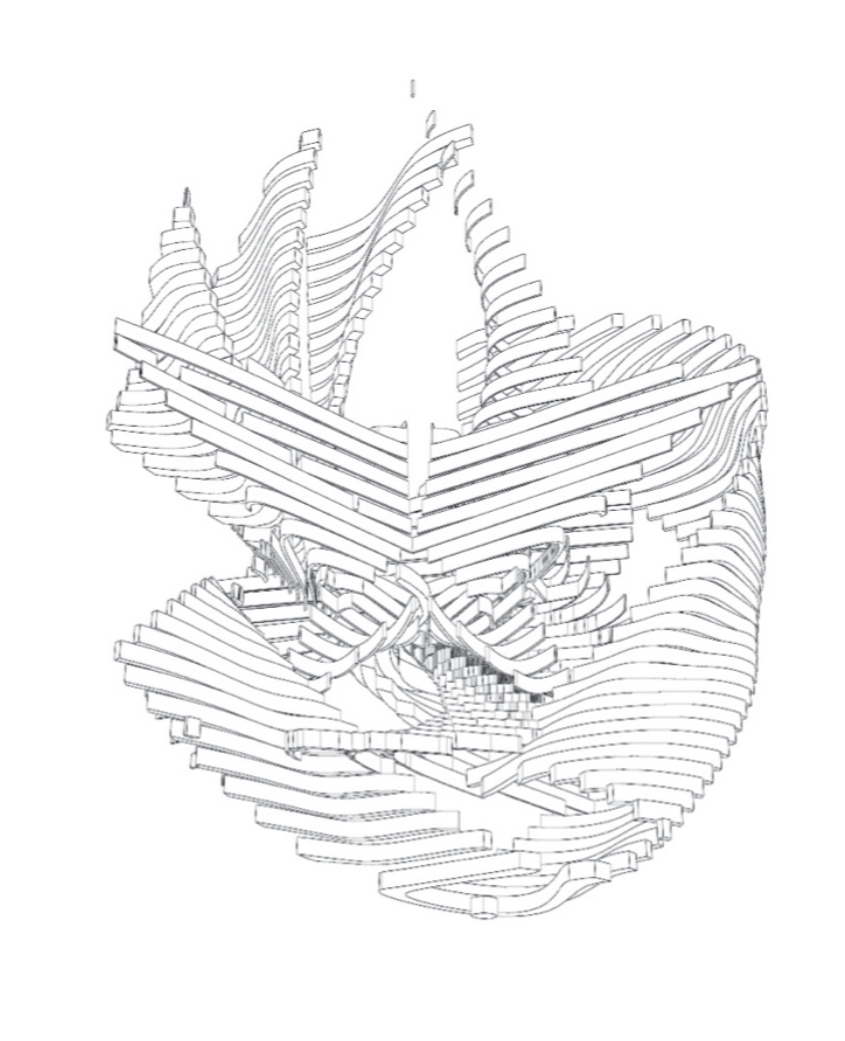
"Mirror, Rotate", ⓒYoojin Jeon, 23, ⓒSuhyun Lee, 23, Digital
Mirror, Rotate (Team 2)
Primary gesture (design language):
- Upright seam with a surrounding fan — “spine + bloom.”
Starting sources (2D command drawings):
- A — Mirror (#1): axial pair with narrow waist; crisp seam.
- B — Rotate (#4): petal-like rotation around a hub; light phase drift.
Early gesture development (2D → 3D):
- A (#2–#3): mirrored shells step out from the seam; seam remains the anchor.
- B (#5–#6): petals/ribs gain depth; hub stays central under density changes.
Composite drawing (#7+):
- Petal field nests into the mirrored torso; seam and hub co-exist without conflict.
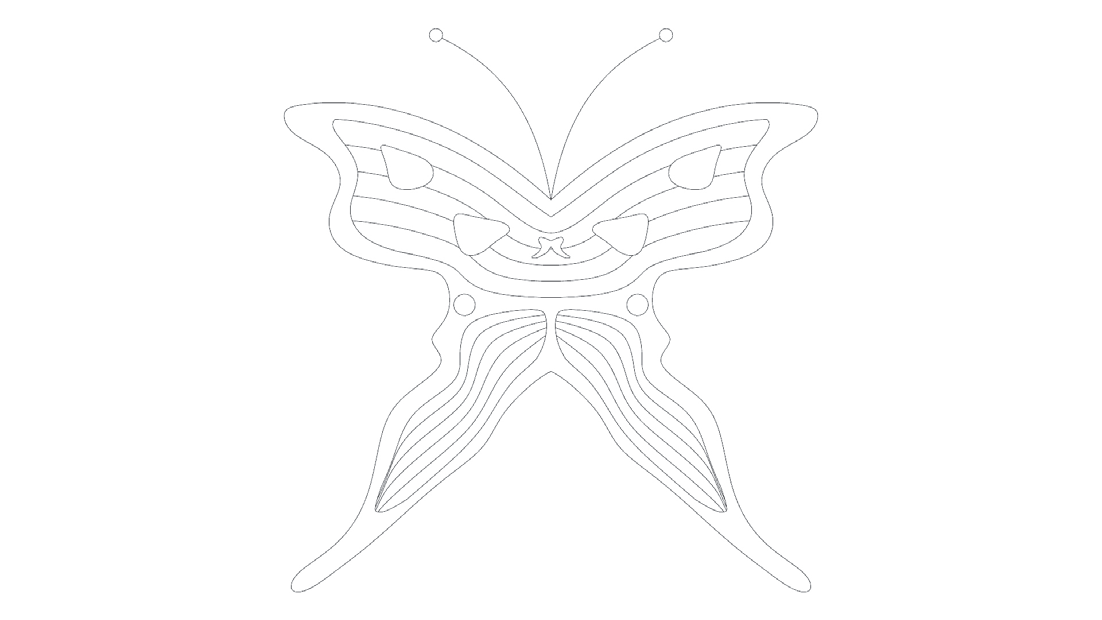
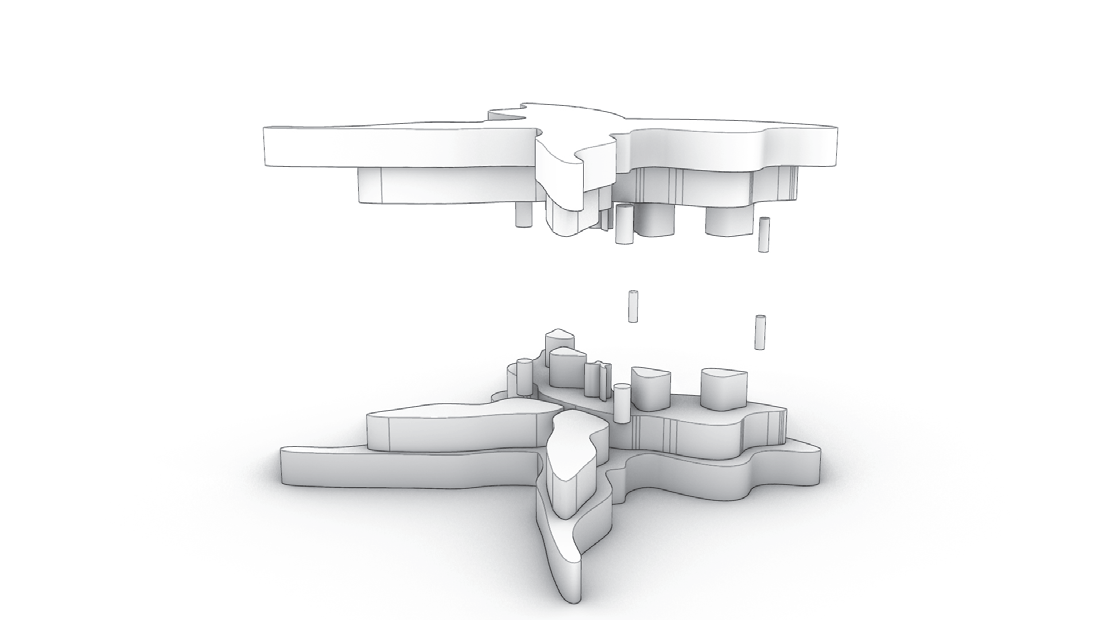
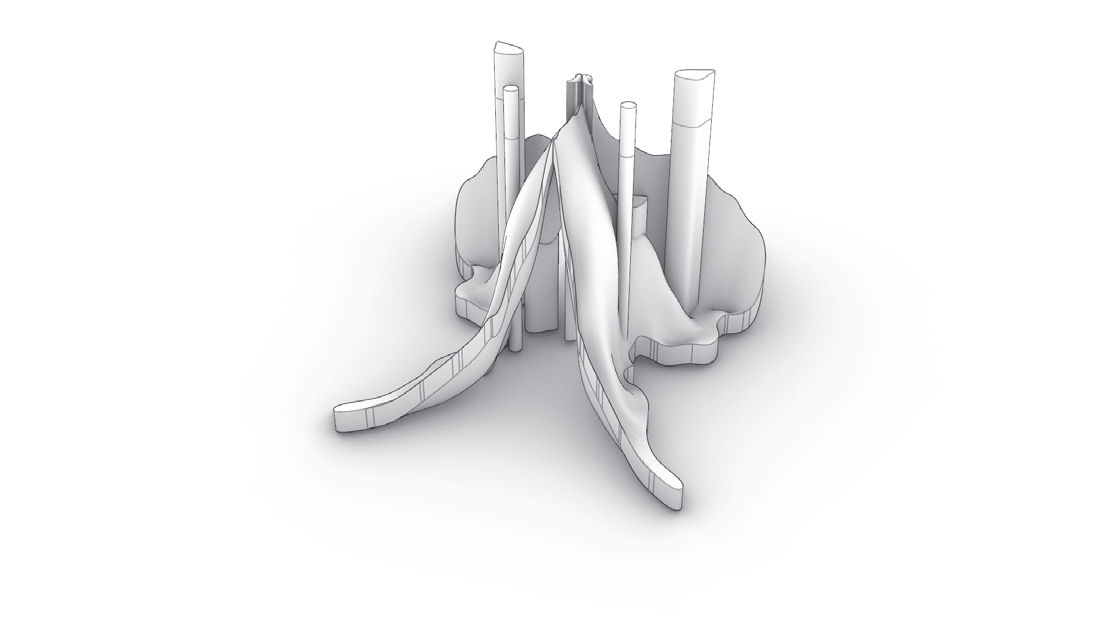

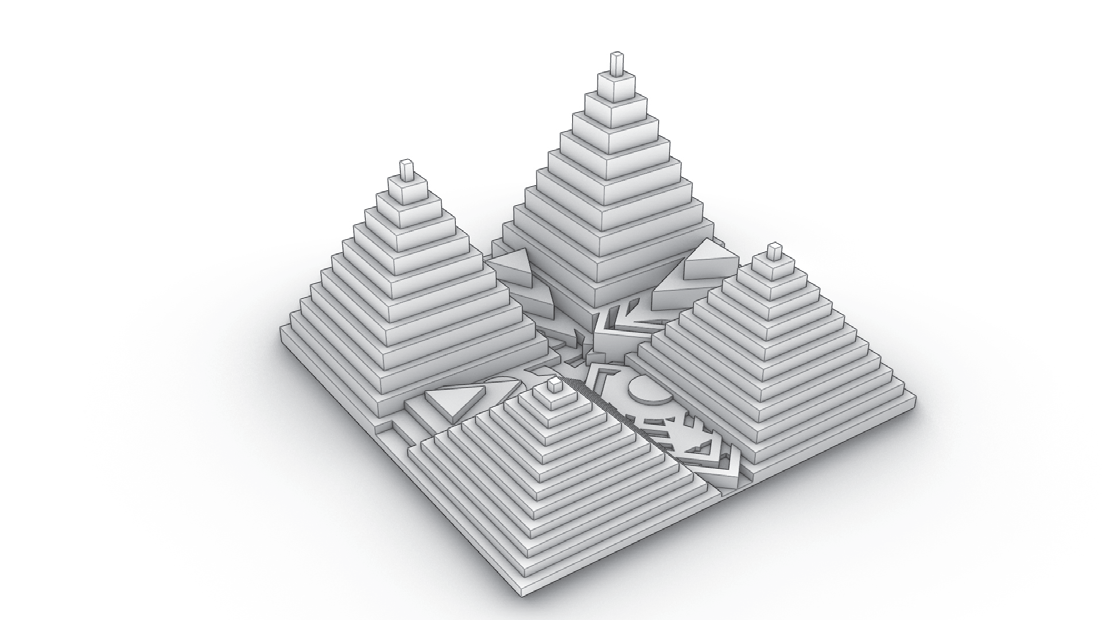
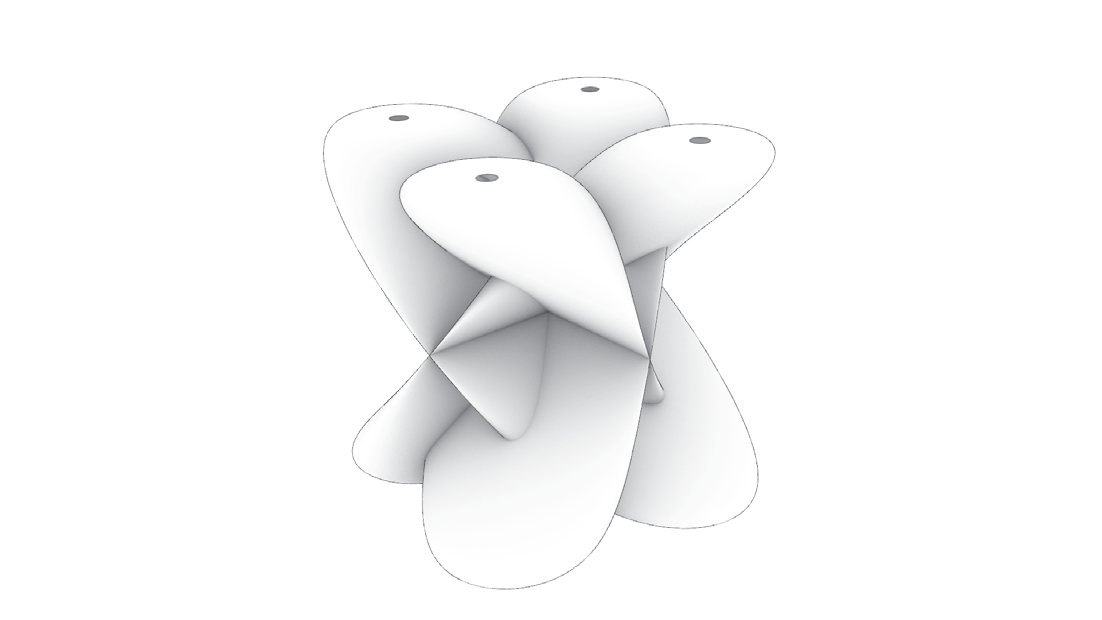
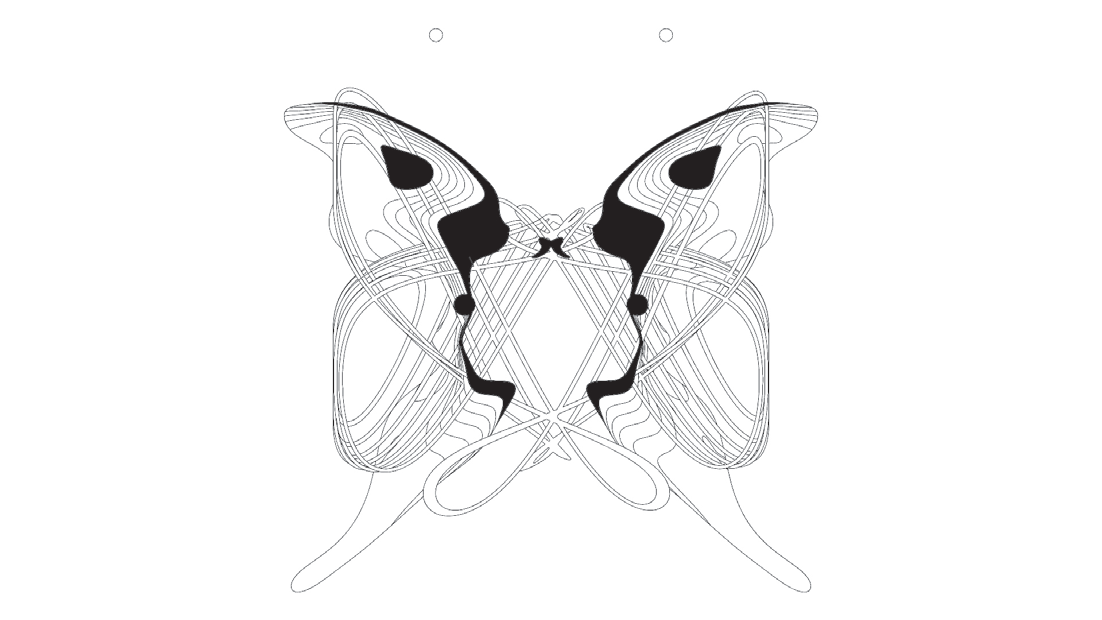
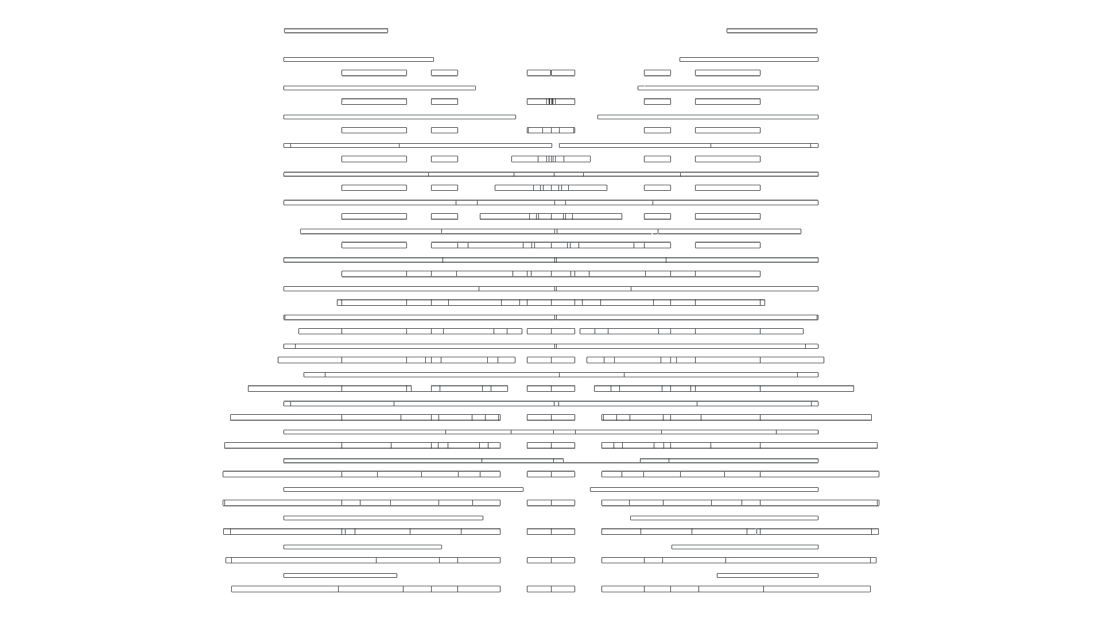

"Mirror, Offset", ⓒShinhye Kang, 23, ⓒSeokhan Yoon, 22, Digital
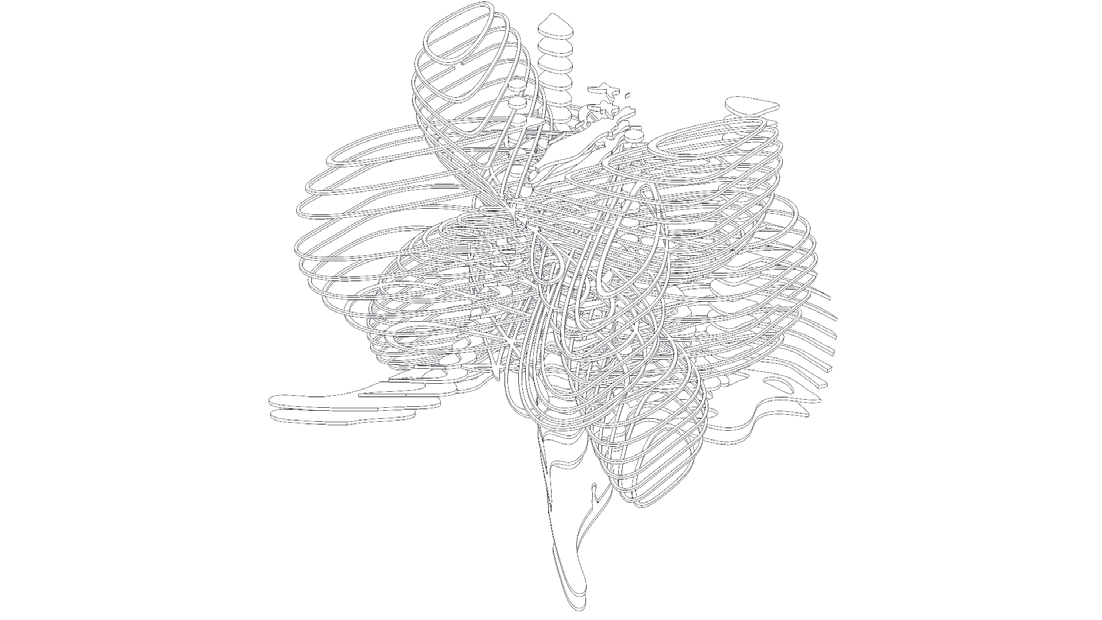
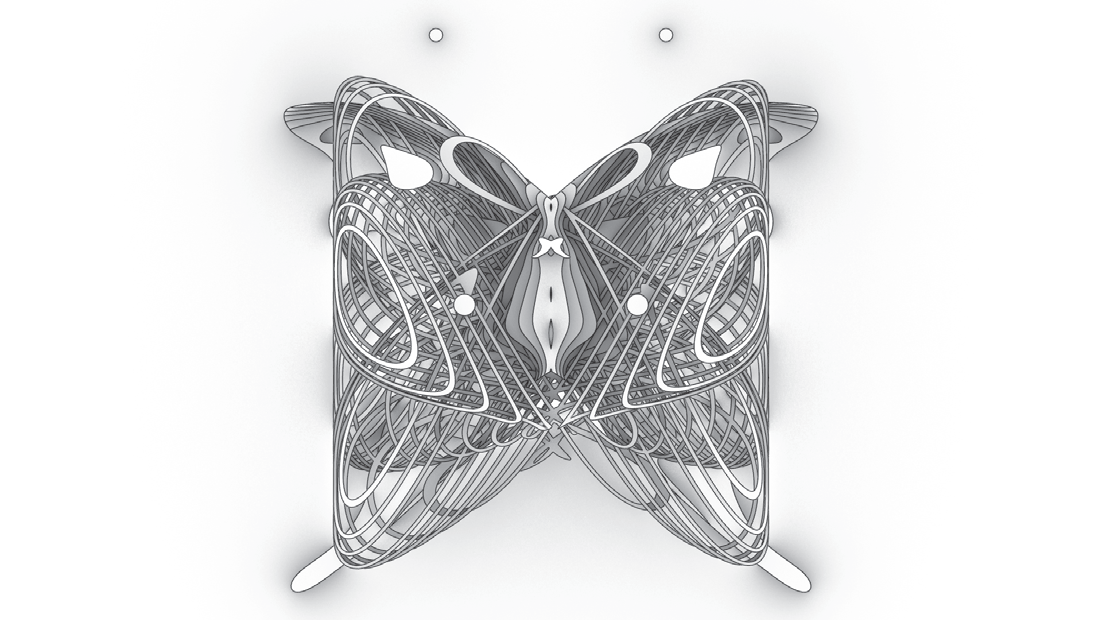
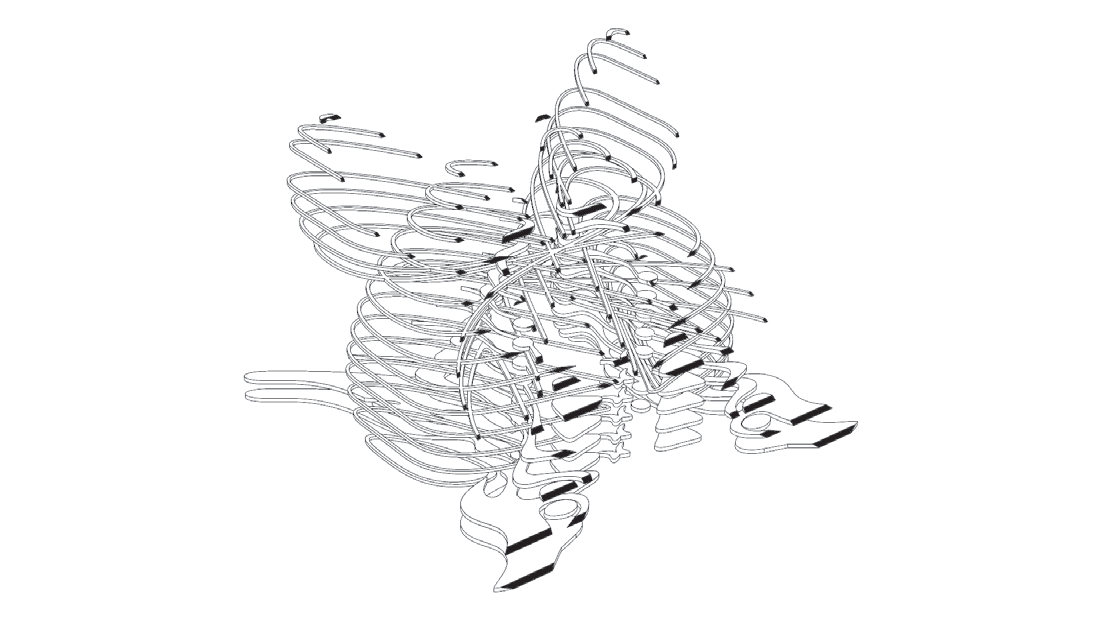
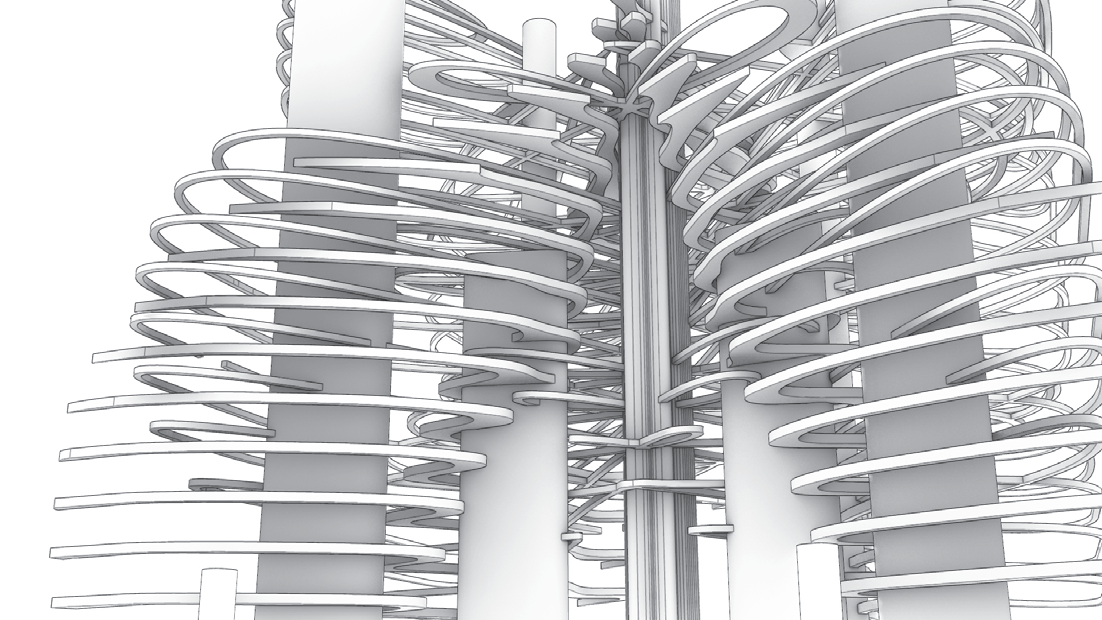
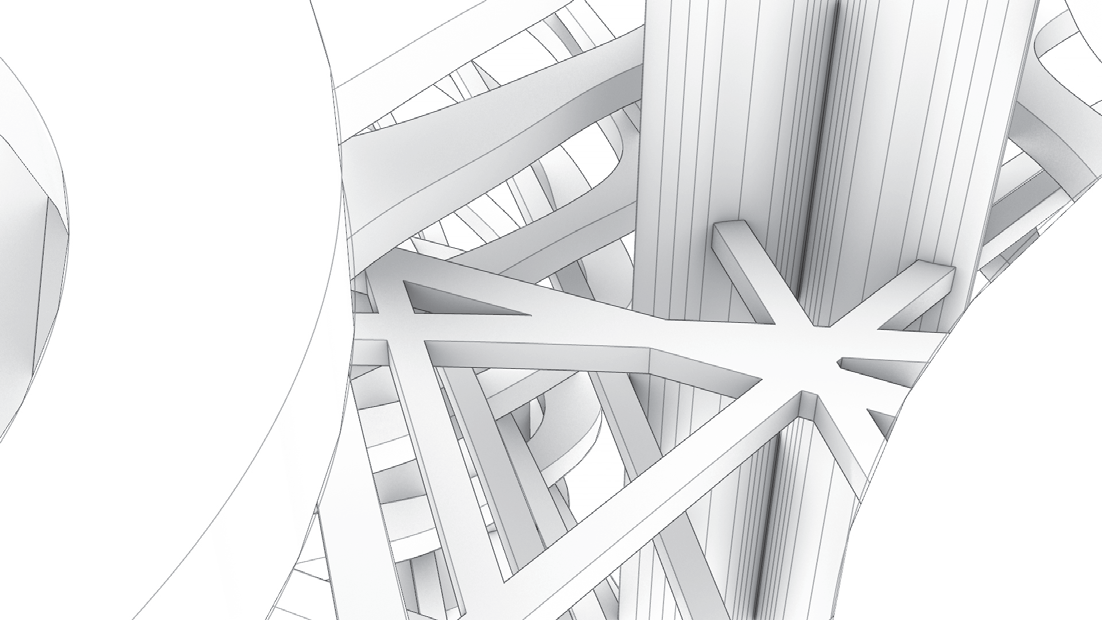
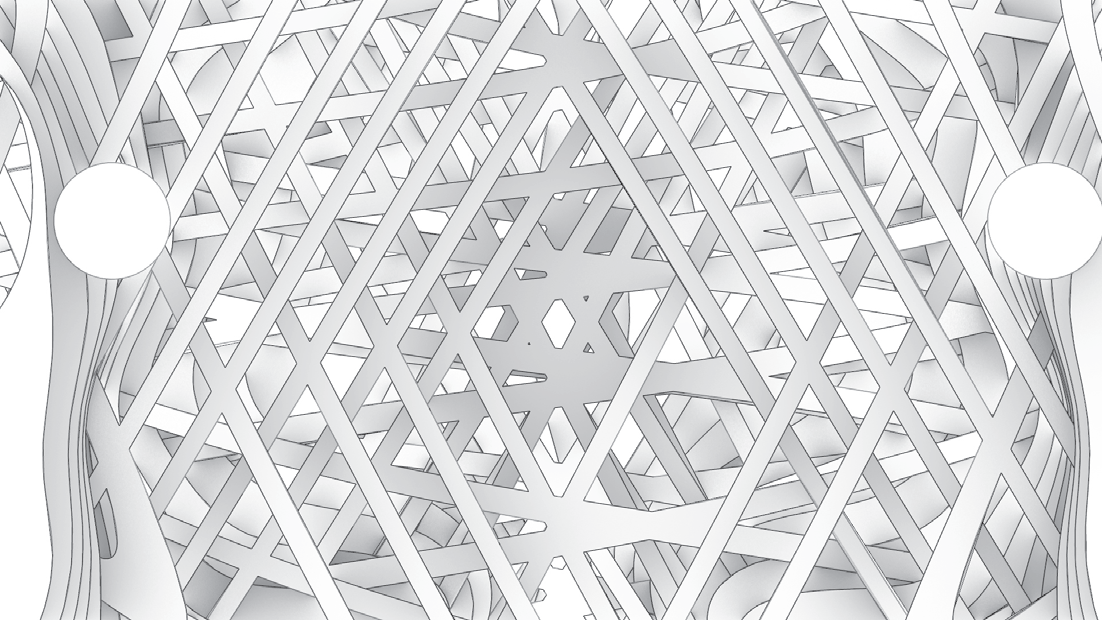
"Mirror, Offset", ⓒShinhye Kang, 23, ⓒSeokhan Yoon, 22, Digital
Mirror, Offset
Primary gesture (design language):
- Paired shells split by a seam; offset gutters run along the flanks.
Starting sources (2D command drawings):
- A — Mirror (#1): symmetric hulls with a central gap.
- B — Offset (#4): parallel bands that define gutters/datum.
Early gesture development (2D → 3D):
- A (#2–#3): shells loft from the seam; bilateral mass stays legible.
- B (#5–#6): offsets become step gutters; spacing modulates hierarchy.
Composite drawing (#7+):
- Gutters track the seam, clarifying primary (seam) vs. secondary (bands).
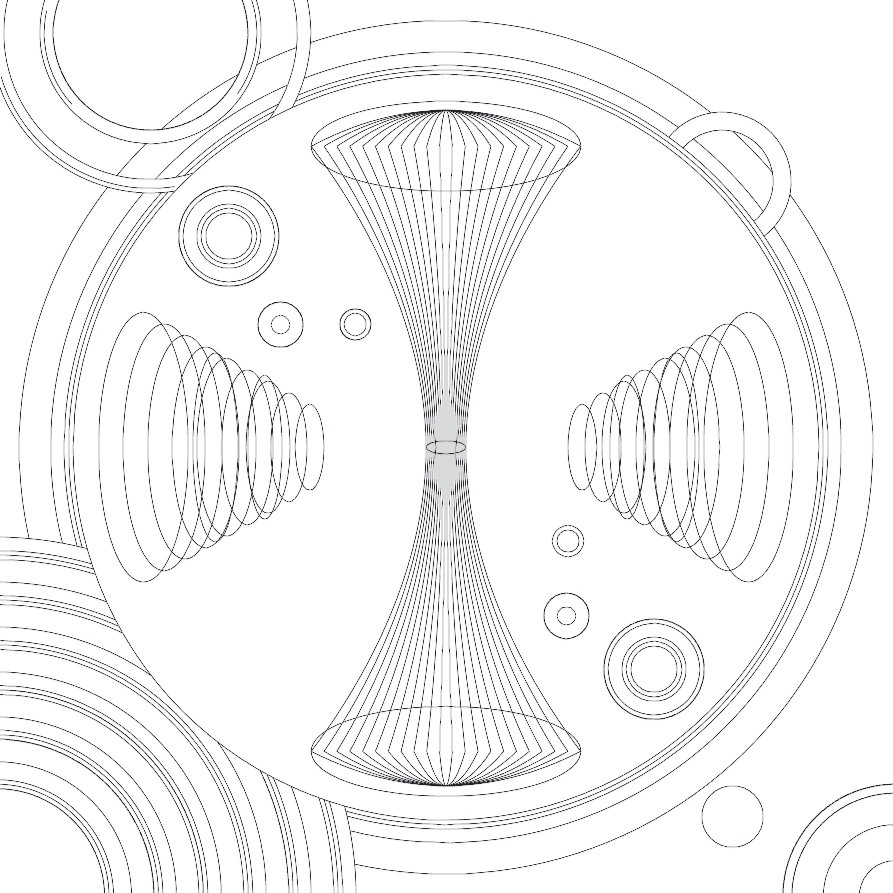
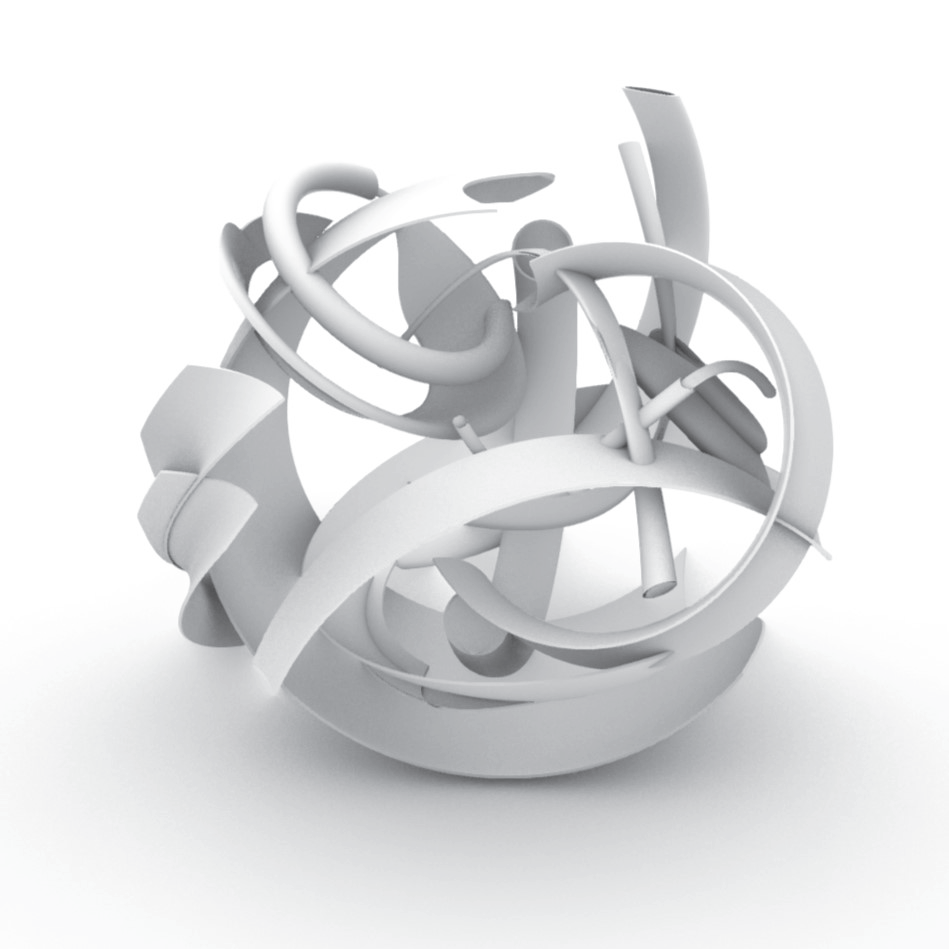
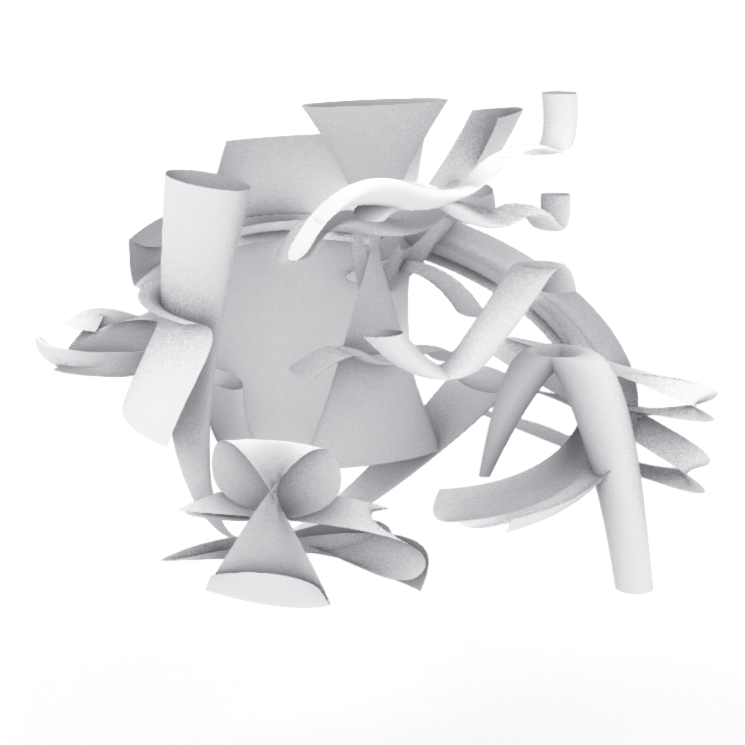

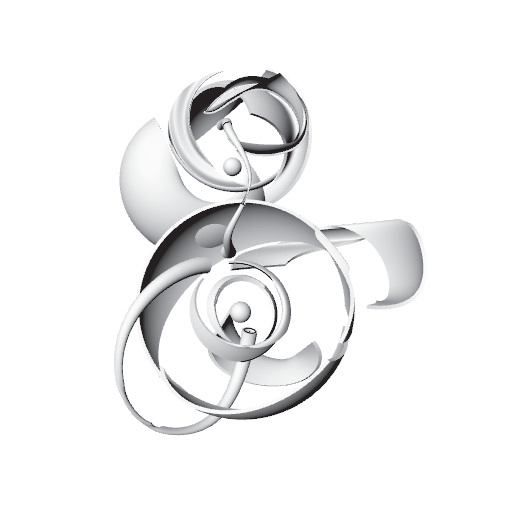
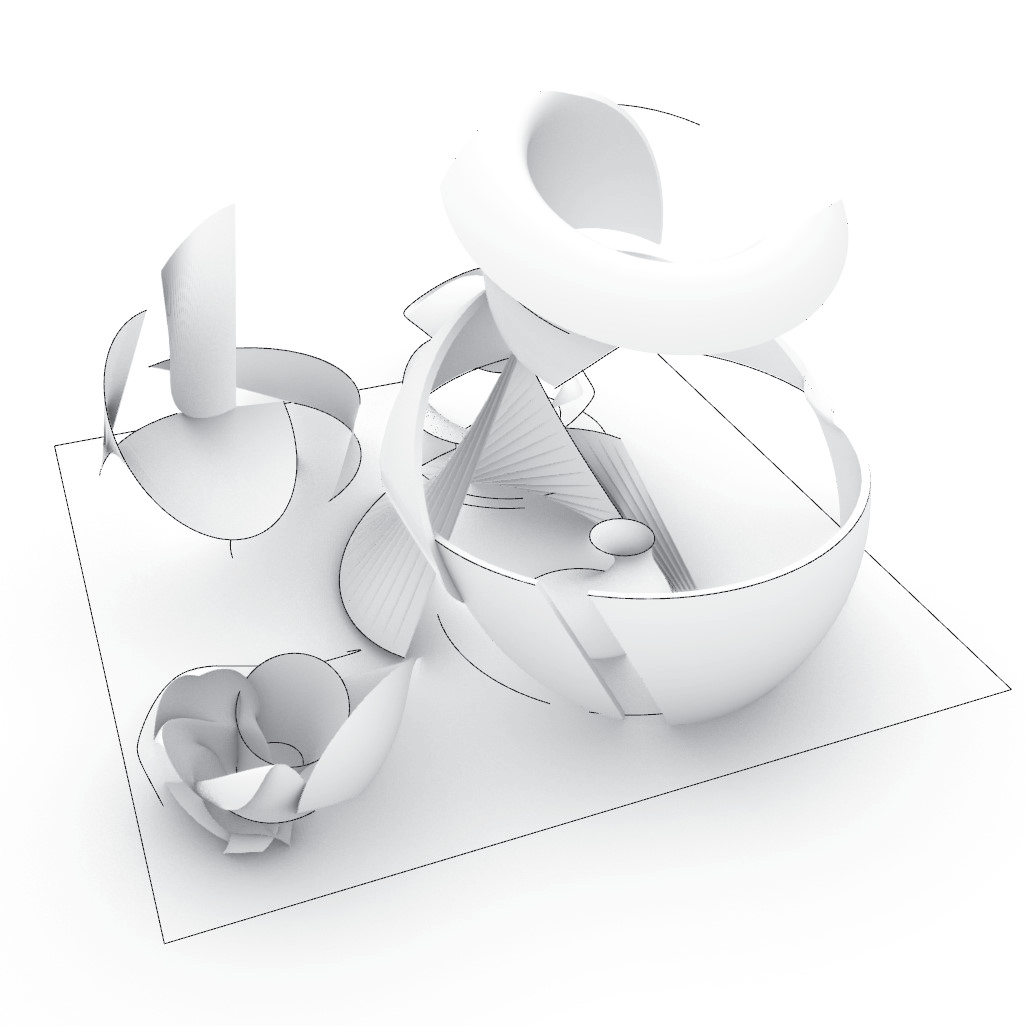
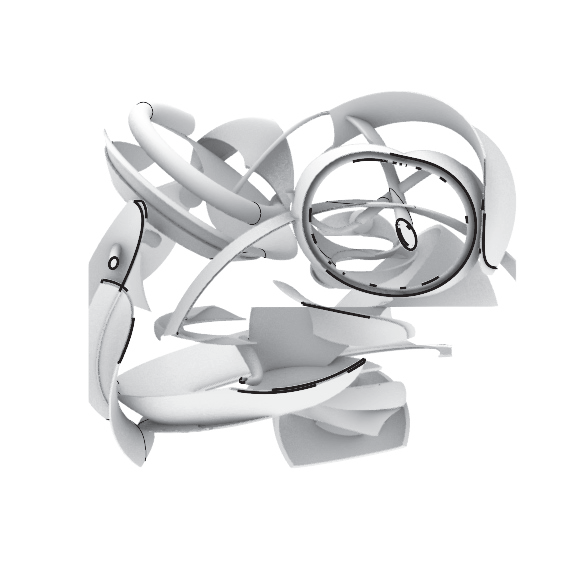
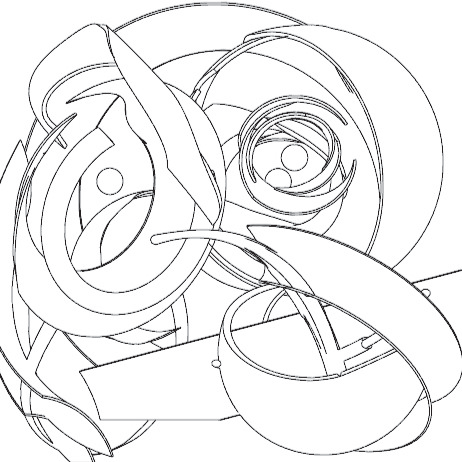
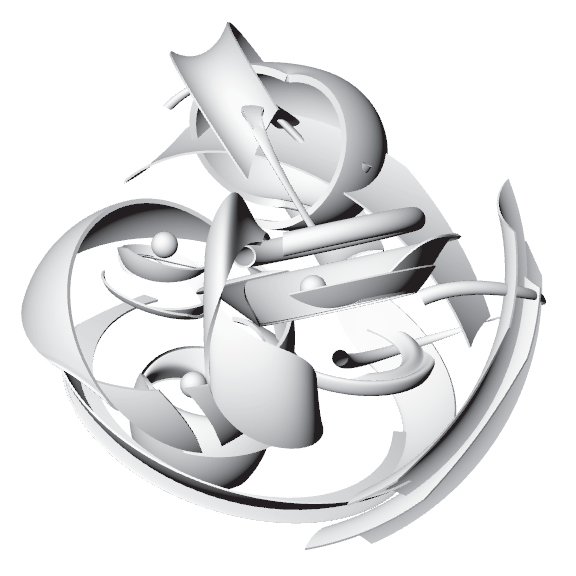
"Circle, Offset", ⓒDahee Geum, 23, ⓒMinseo Jang, 23, Digital



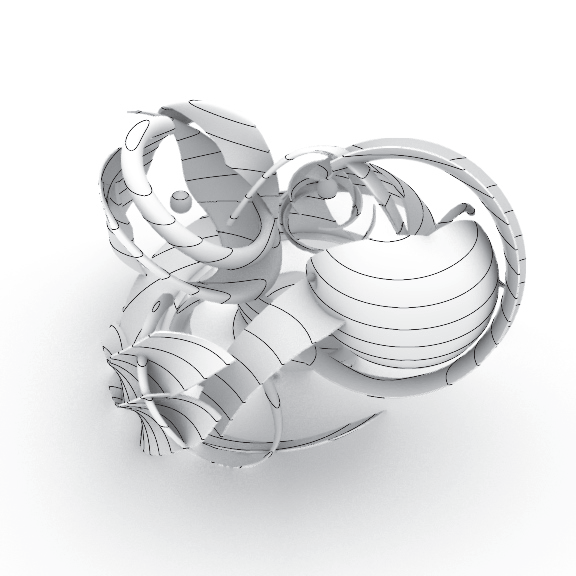
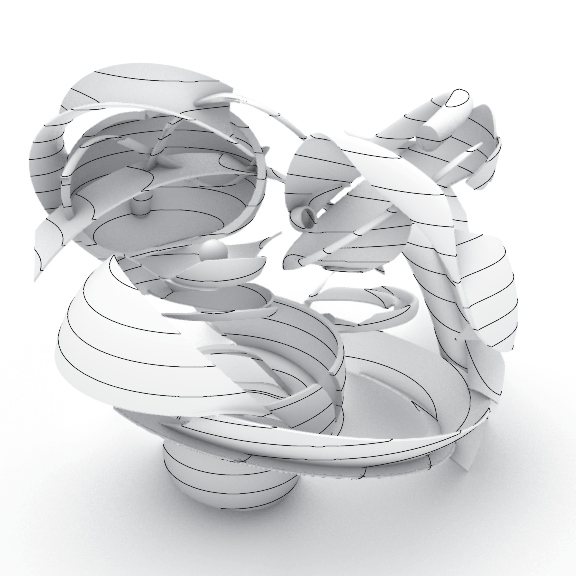
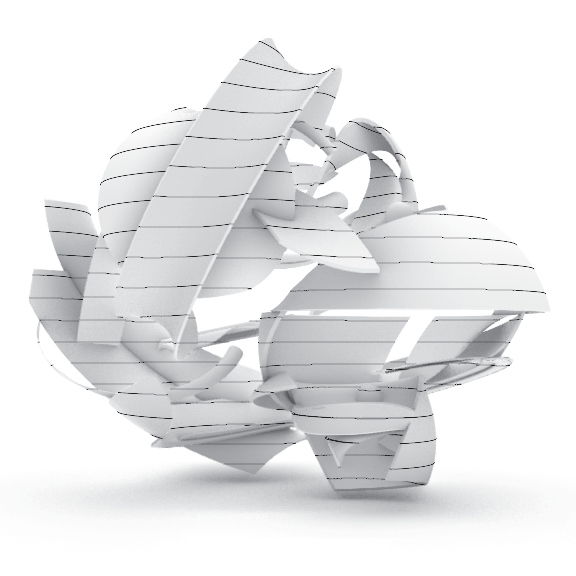
"Circle, Offset", ⓒDahee Geum, 23, ⓒMinseo Jang, 23, Digital
Circle, Offset
Primary gesture (design language):
- Incomplete ring with concentric steps — “crown + terraces.”
Starting sources (2D command drawings):
- A — Circle (#1): ring/halo with a potential keyed breach.
- B — Offset (#4): concentric bands grading outward.
Early gesture development (2D → 3D):
- A (#2–#3): ring segments thicken; the breach reads as a joint/key.
- B (#5–#6): step-bands lift into plates; interval sets primary vs. infill rings.
Composite drawing (#7+):
- Crown sits on stepped plates; key registers alignment across views.
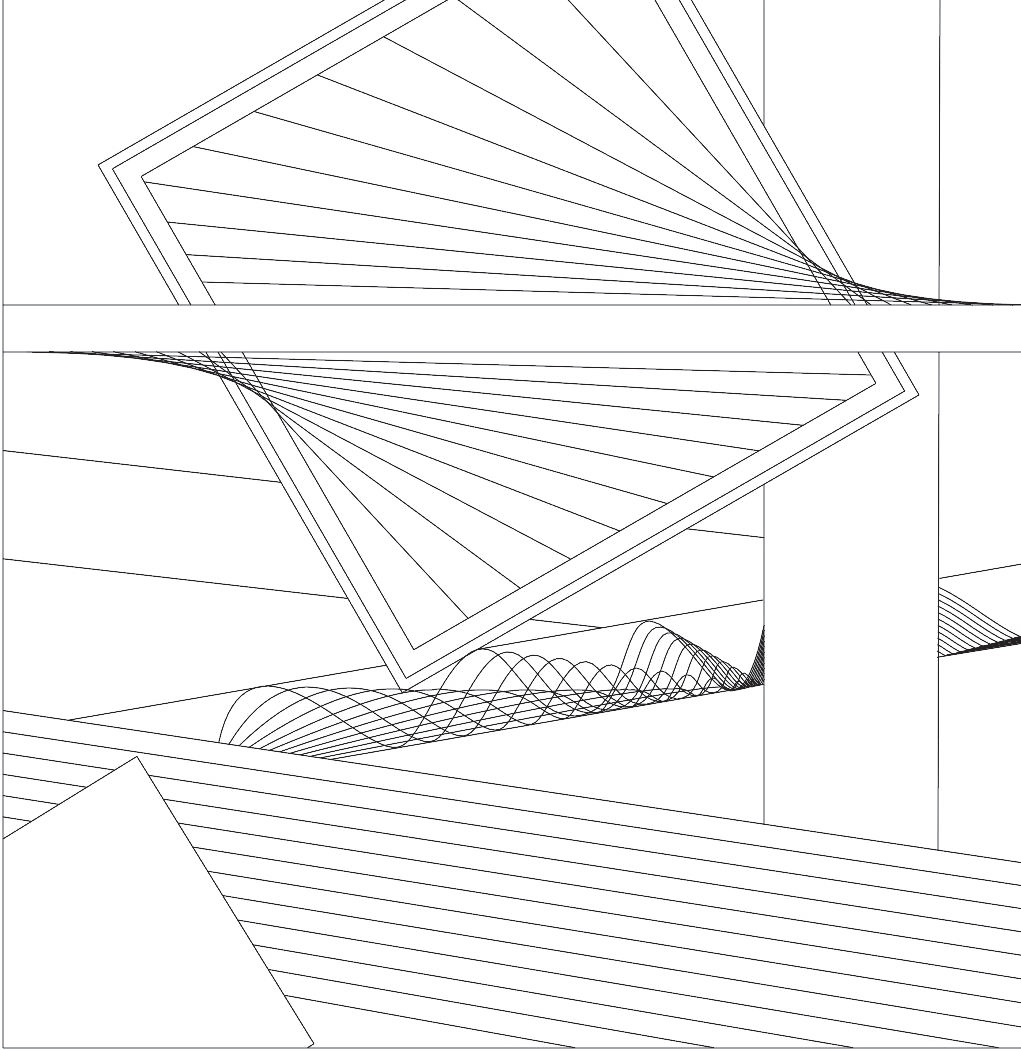
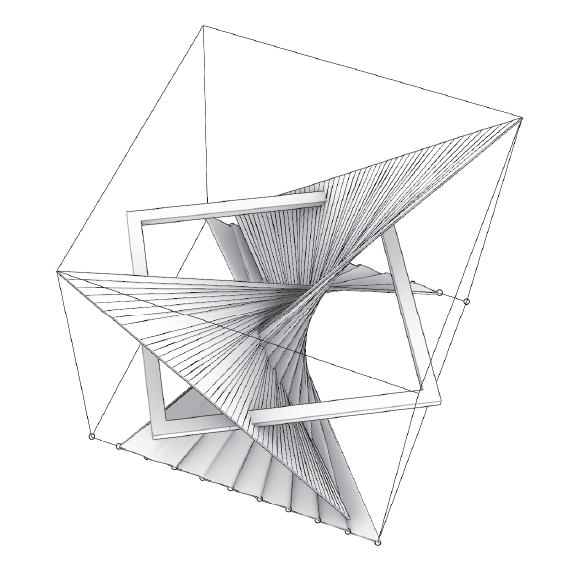
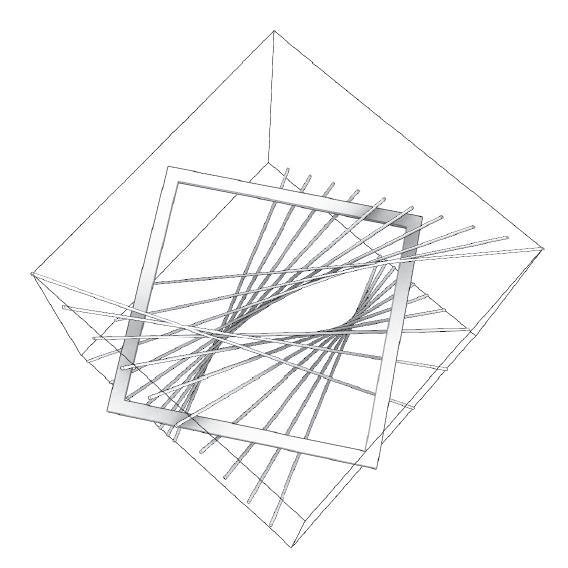

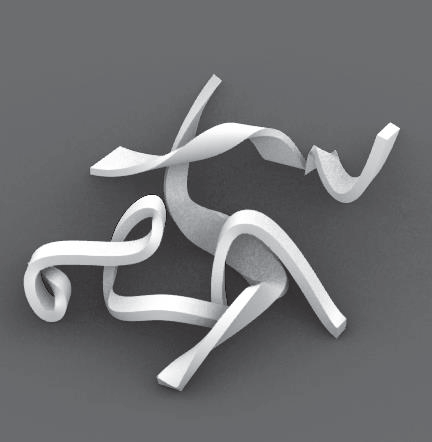
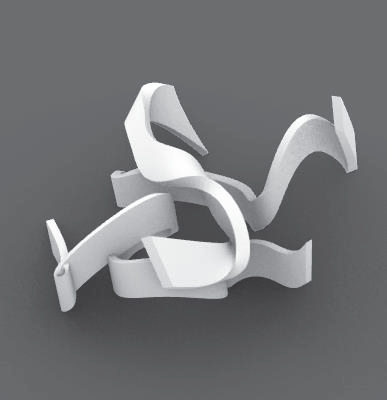
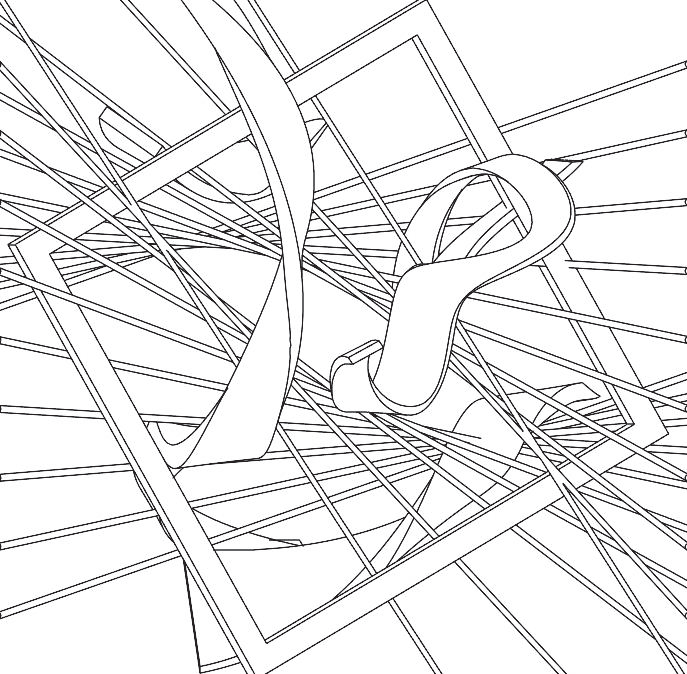
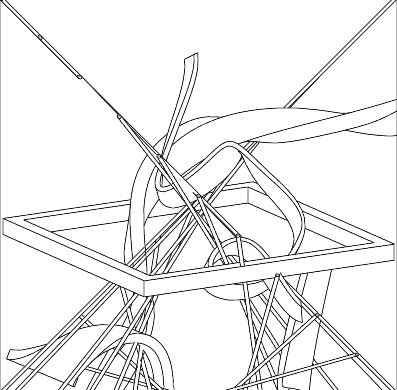
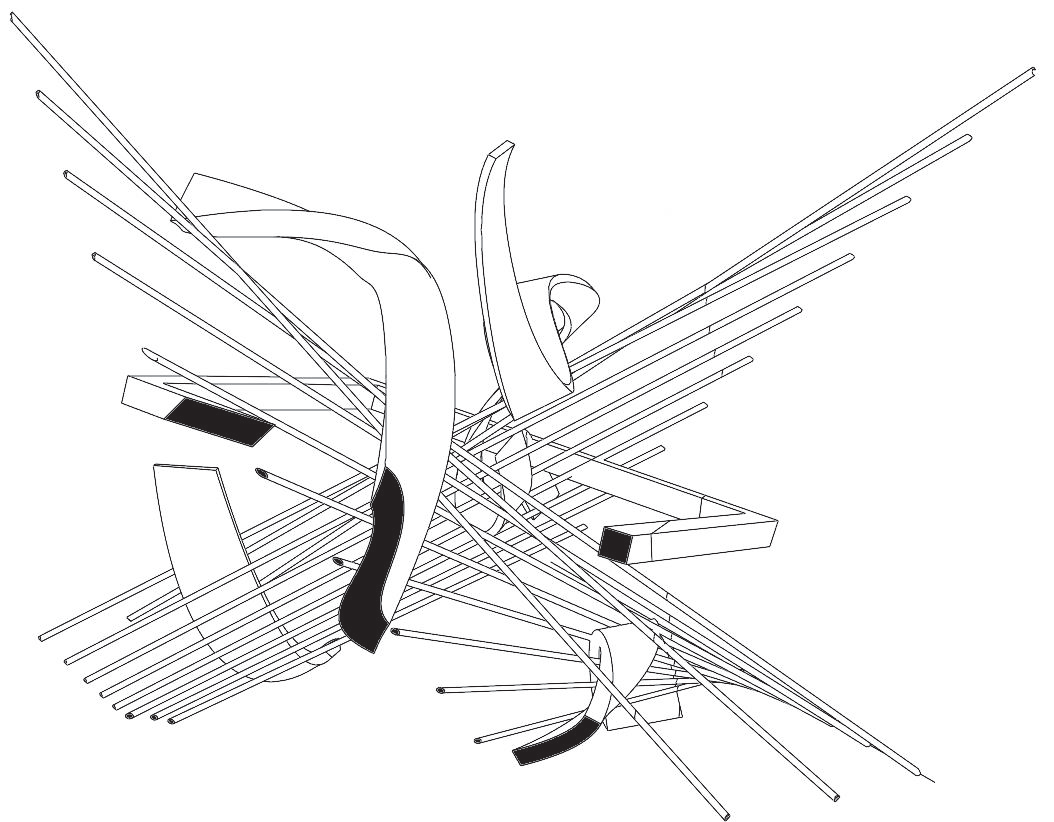
"DrawOrder, Spline", ⓒDoyeon Kim, 23, ⓒSeojin Lee, 23, Digital
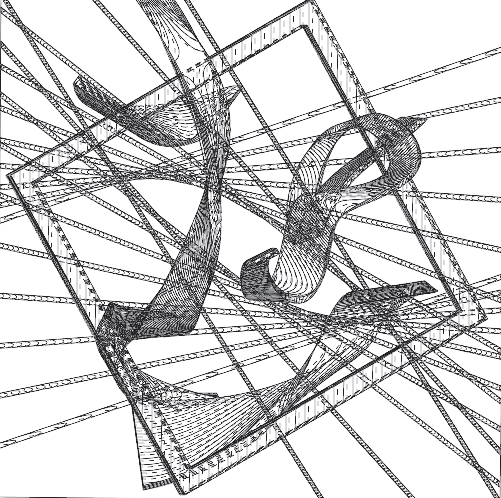
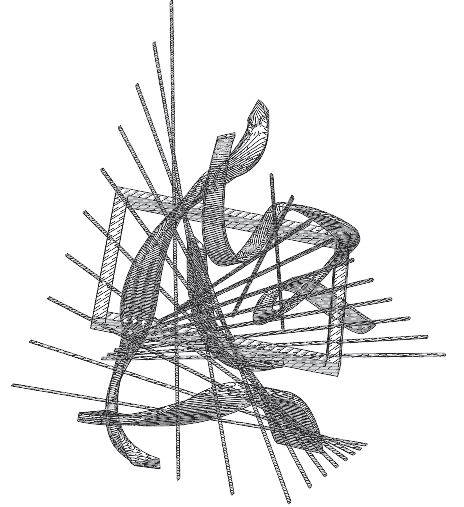
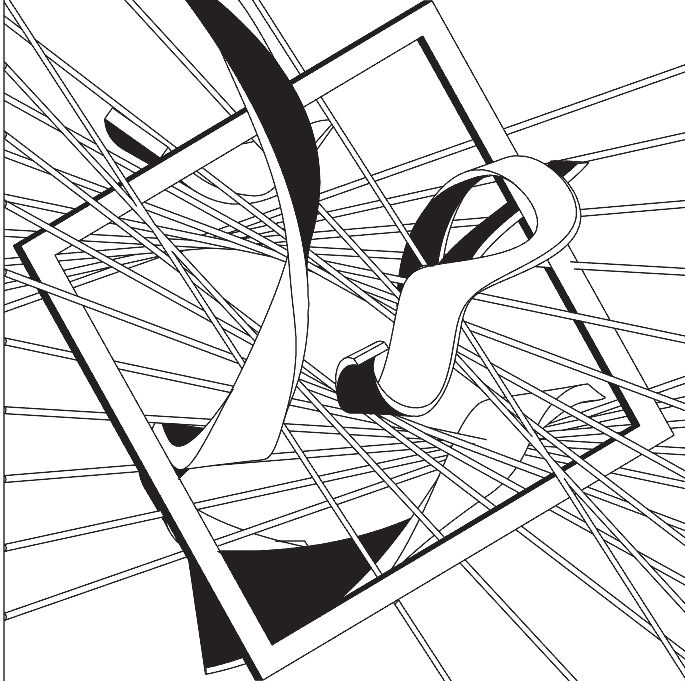
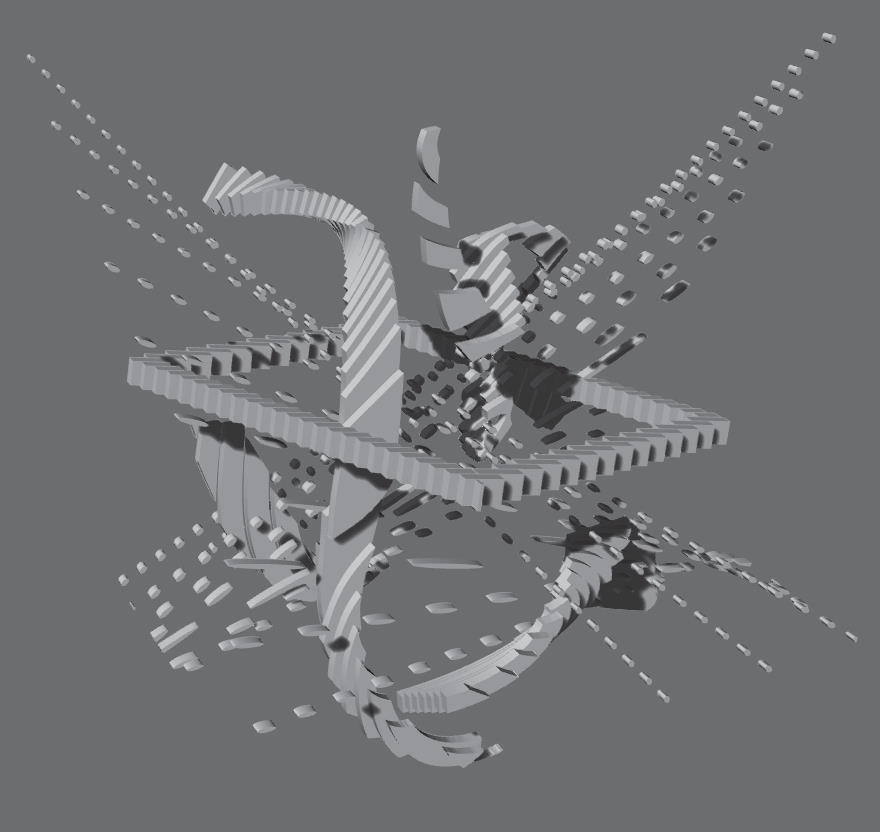

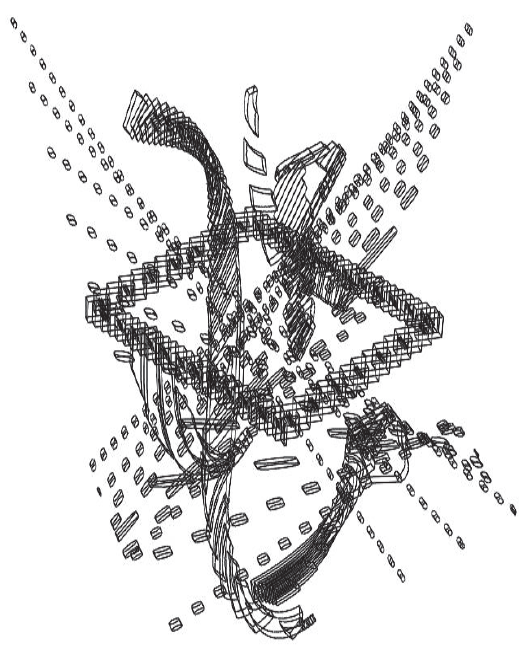
"DrawOrder, Spline", ⓒDoyeon Kim, 23, ⓒSeojin Lee, 23, Digital
DrawOrder, Spline
Primary gesture (design language):
- A spline ribbon with over/under precedence — “path + hierarchy.”
Starting sources (2D command drawings):
- A — DrawOrder (#1): front/back precedence at crossings; dominance clearly marked.
- B — Spline (#4): continuous curve with local curvature shifts and tangencies.
Early gesture development (2D → 3D):
- A (#2–#3): over/under becomes strap thickness; crossings remain readable.
- B (#5–#6): spline lifts as a smooth lamina; control-point cadence guides the span.
Composite drawing (#7+):
- Over/under logic persists in lineweights; ribbon path remains the carrier.
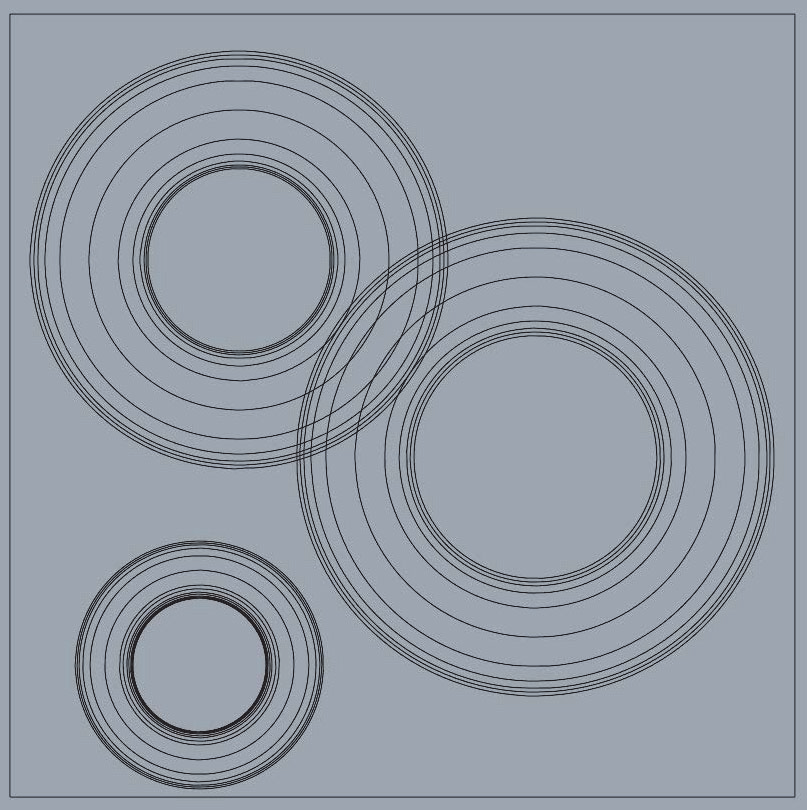
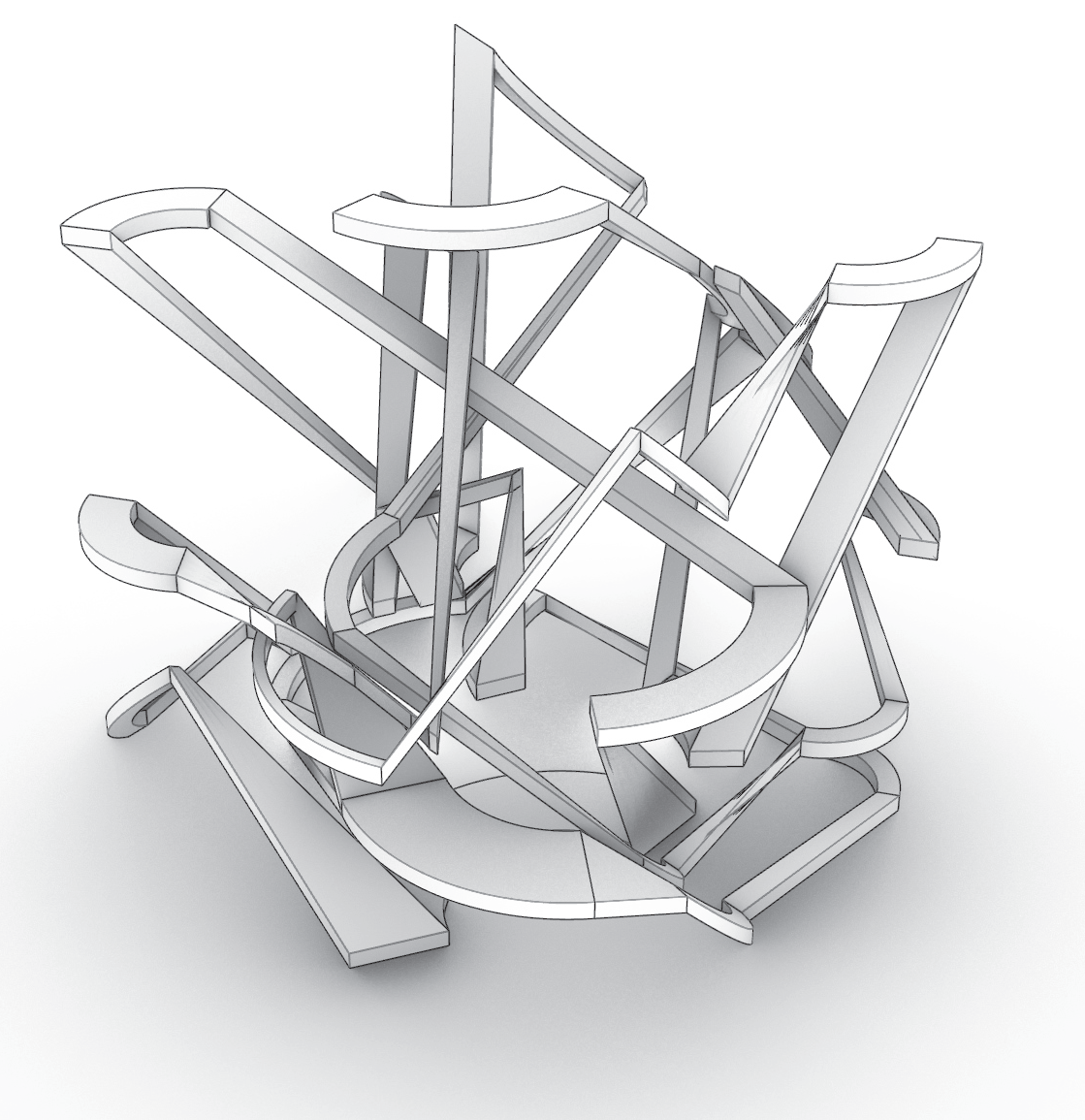
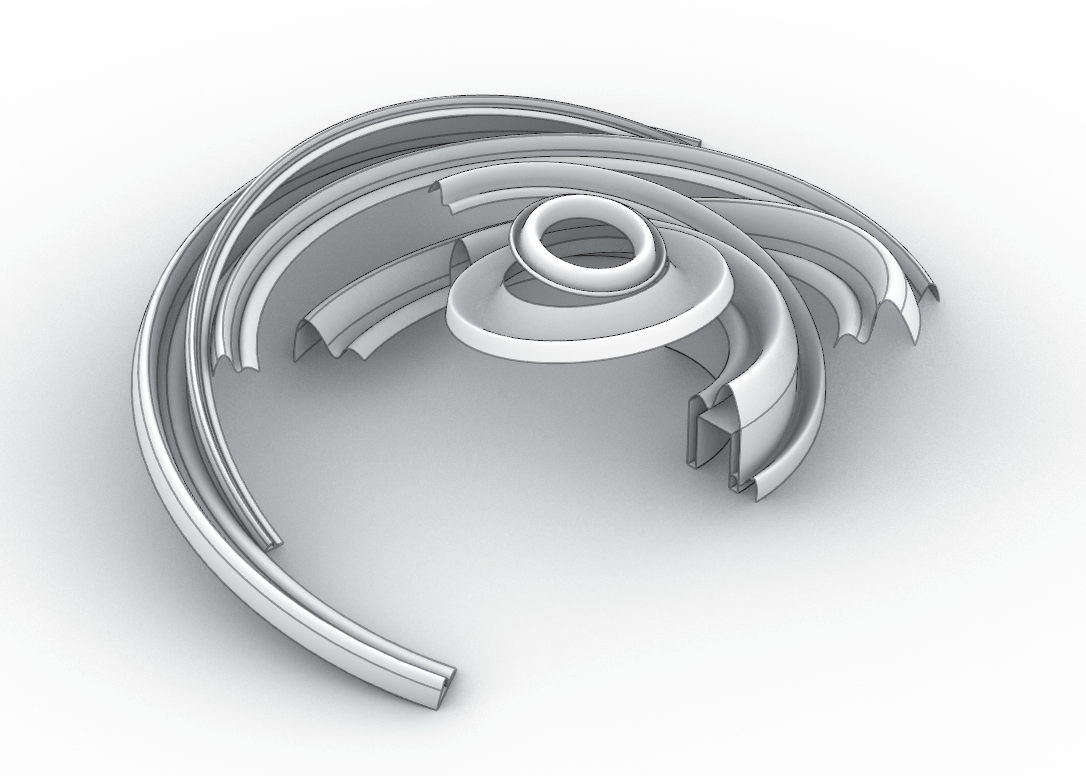
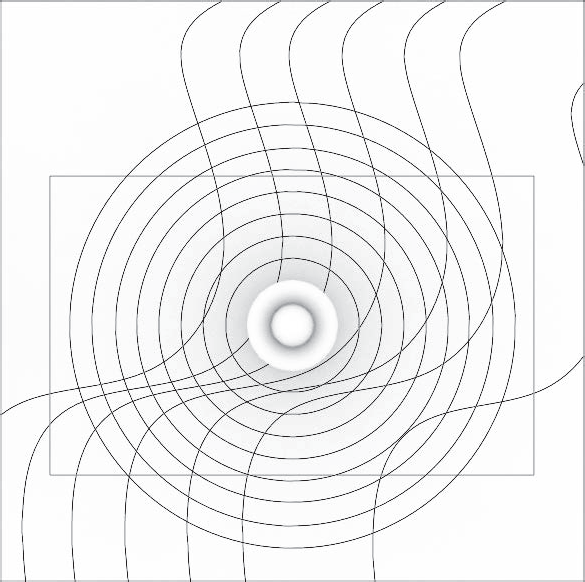
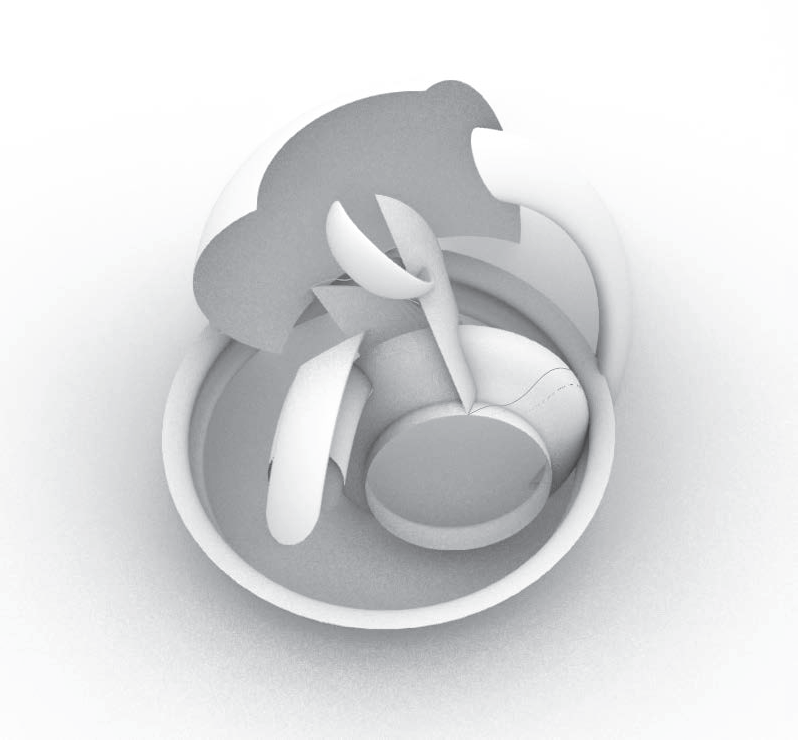

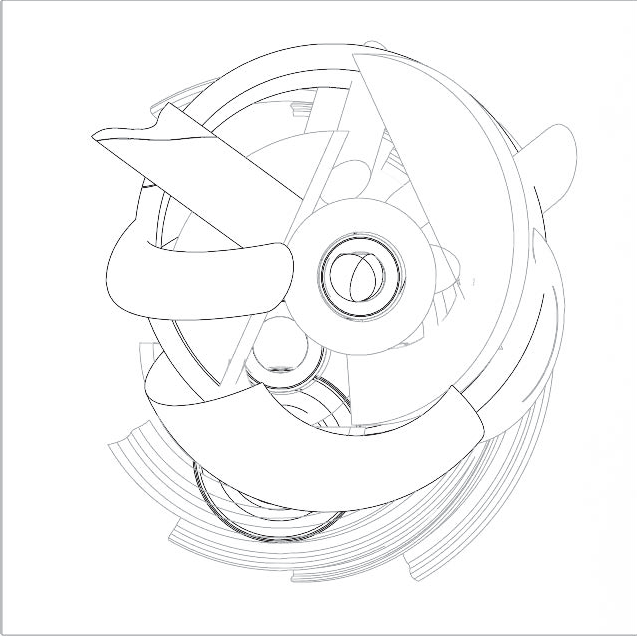
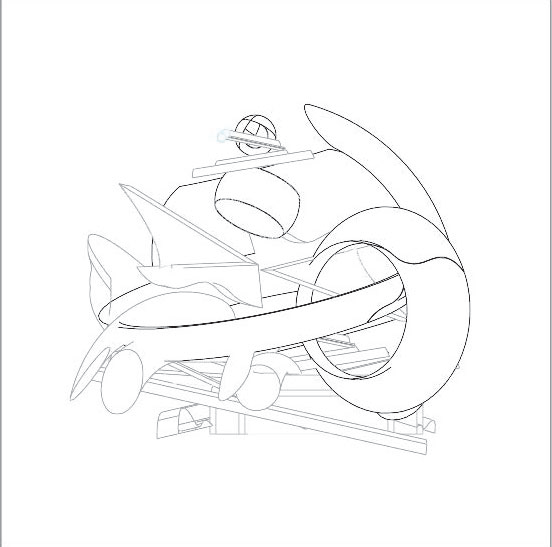
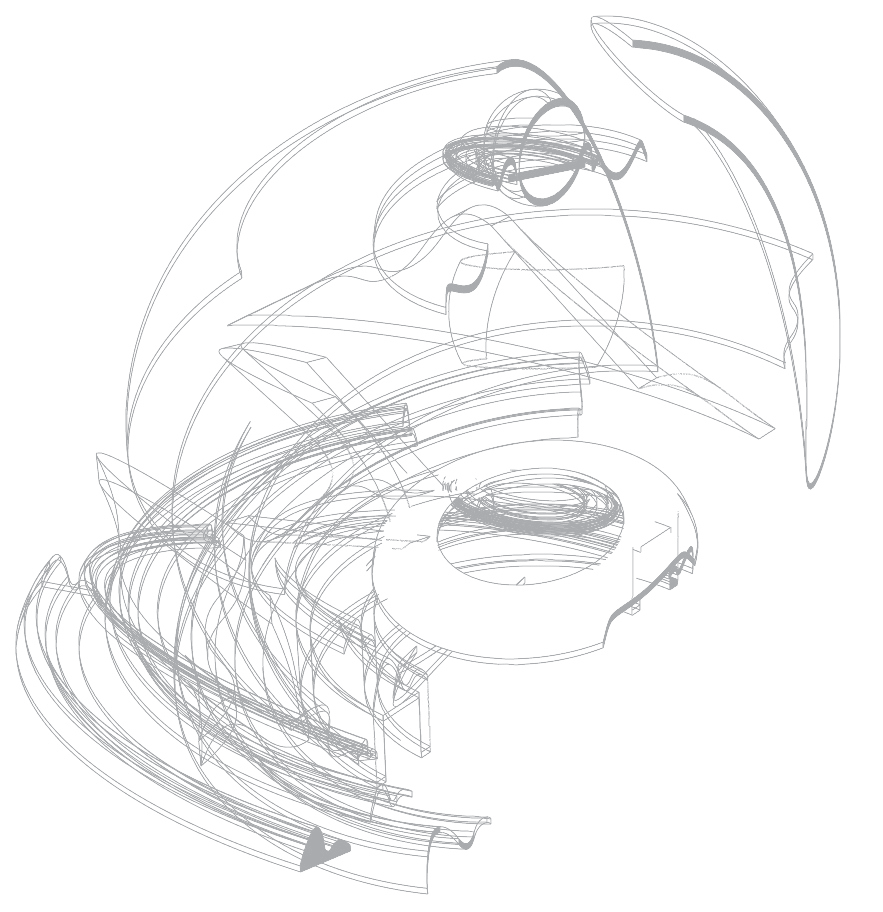
"Circle, Offset", ⓒJiwon Um, 23, ⓒSeonlim Lee, 23, Digital
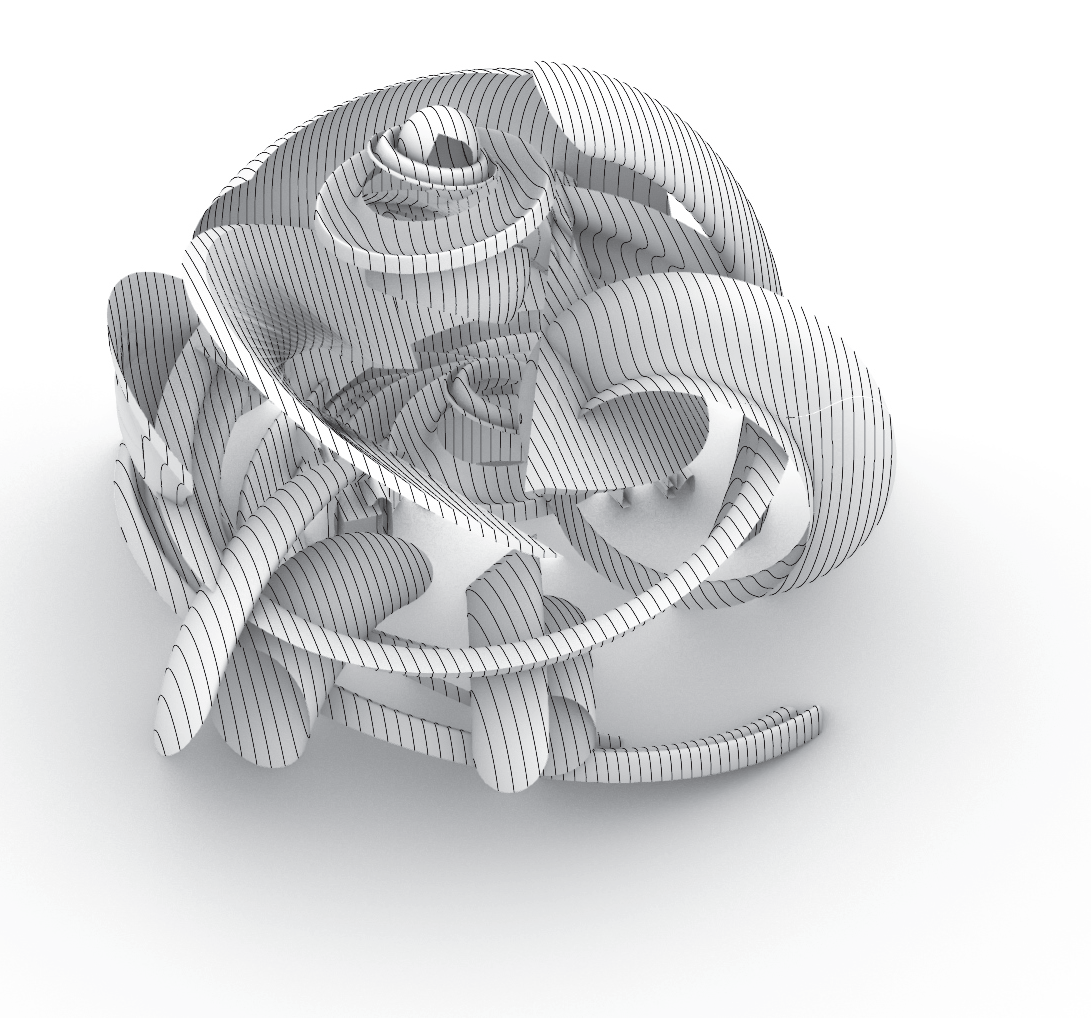
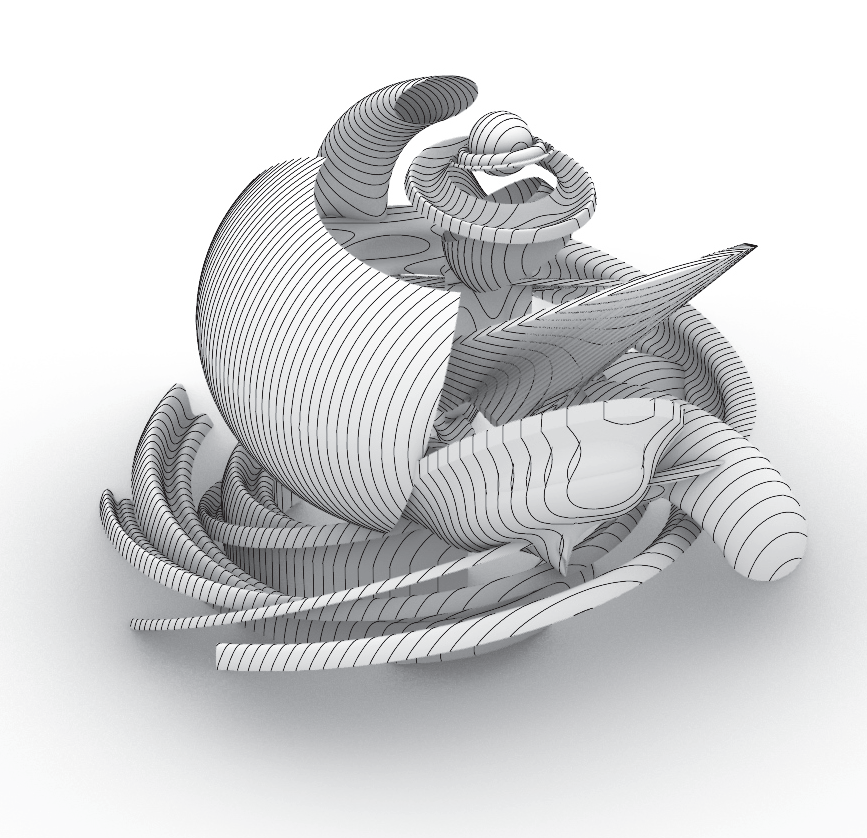
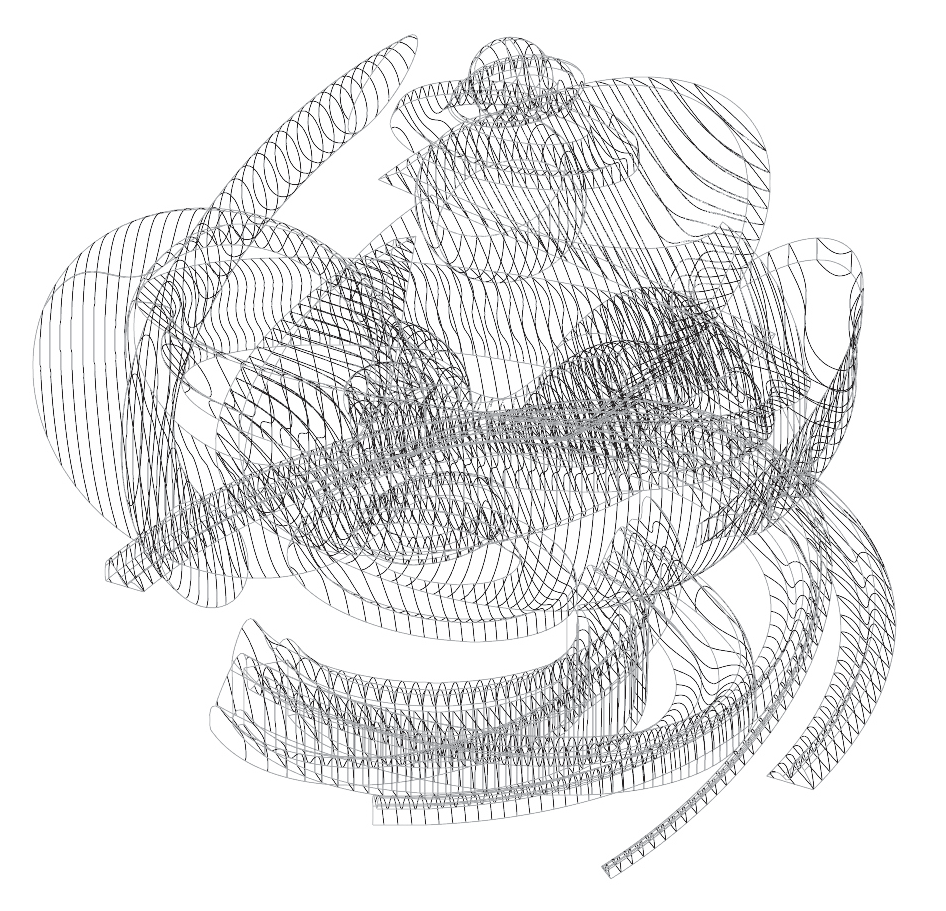
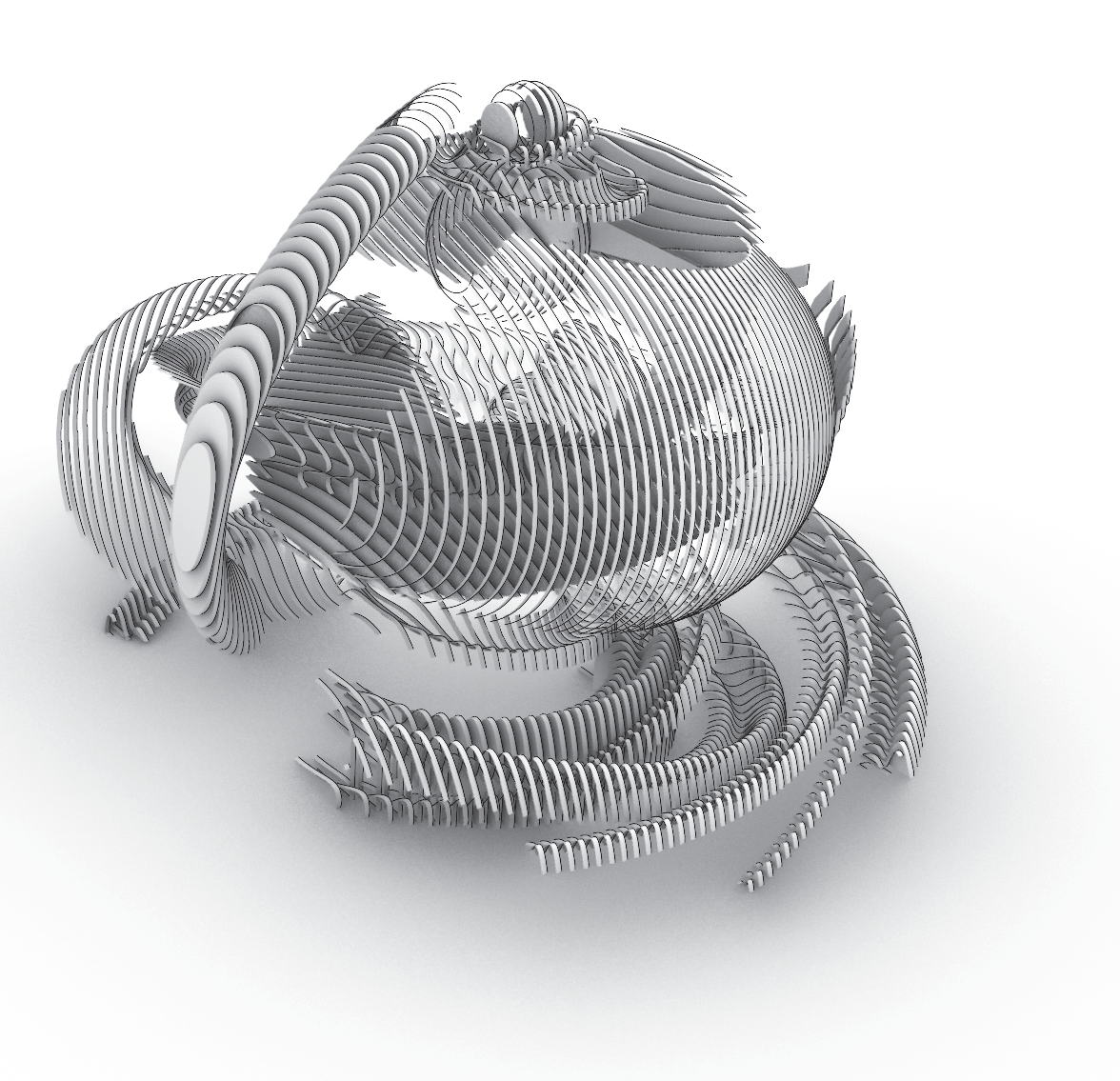

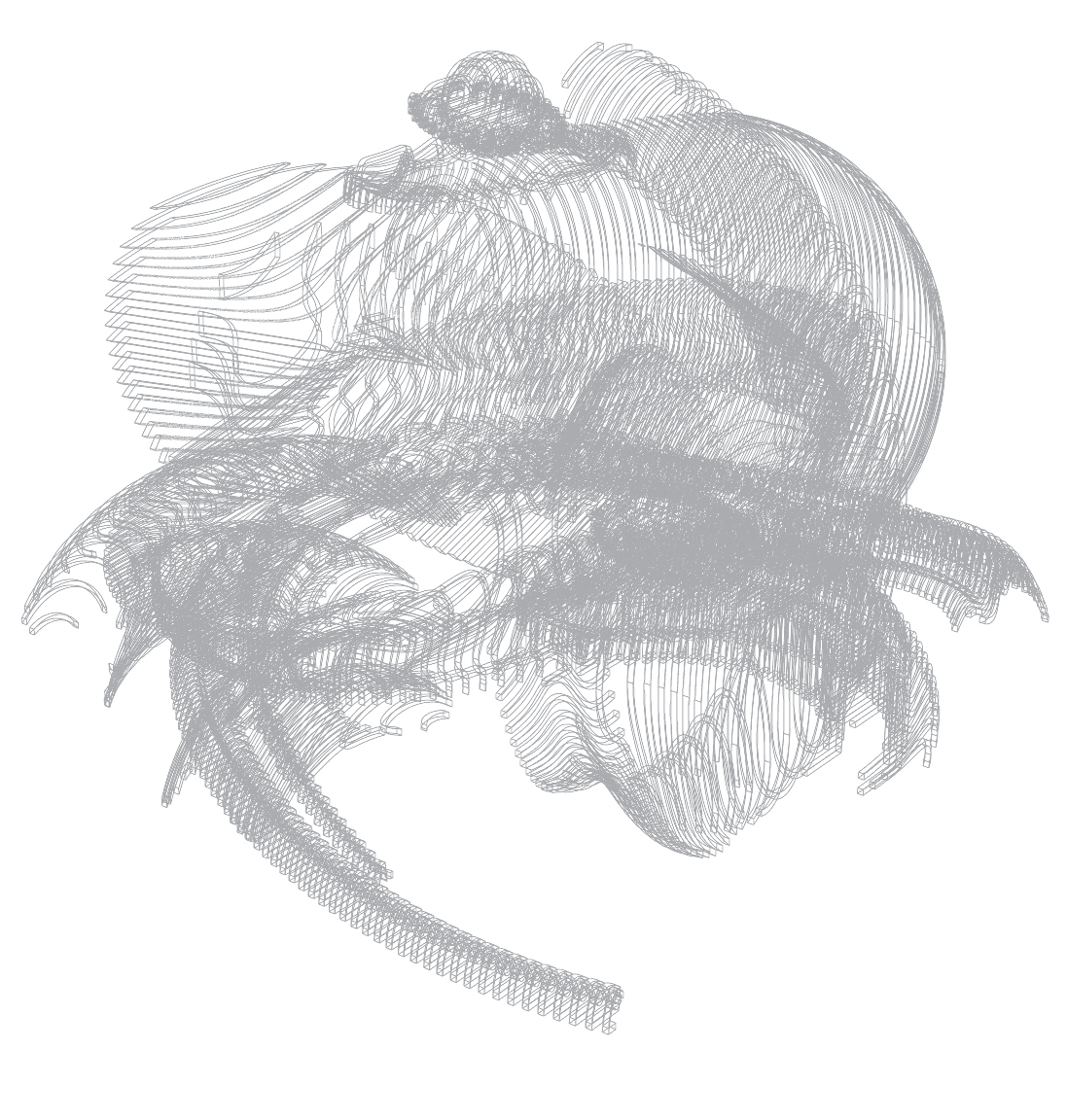
"Circle, Offset", ⓒJiwon Um, 23, ⓒSeonlim Lee, 23, Digital
Circle, Offset (Team 2)
Primary gesture (design language):
- Hooped crown over concentric terraces; an eccentric core keys the read.
Starting sources (2D command drawings):
- A — Circle (#1): centered ring with optional eccentricity.
- B — Offset (#4): nested steps with regular intervals.
Early gesture development (2D → 3D):
- A (#2–#3): ring thickens unevenly to express eccentricity.
- B (#5–#6): step plates tier outward; spacing controls emphasis.
Composite drawing (#7+):
- Eccentric crown aligns with terraces via keyed joints.



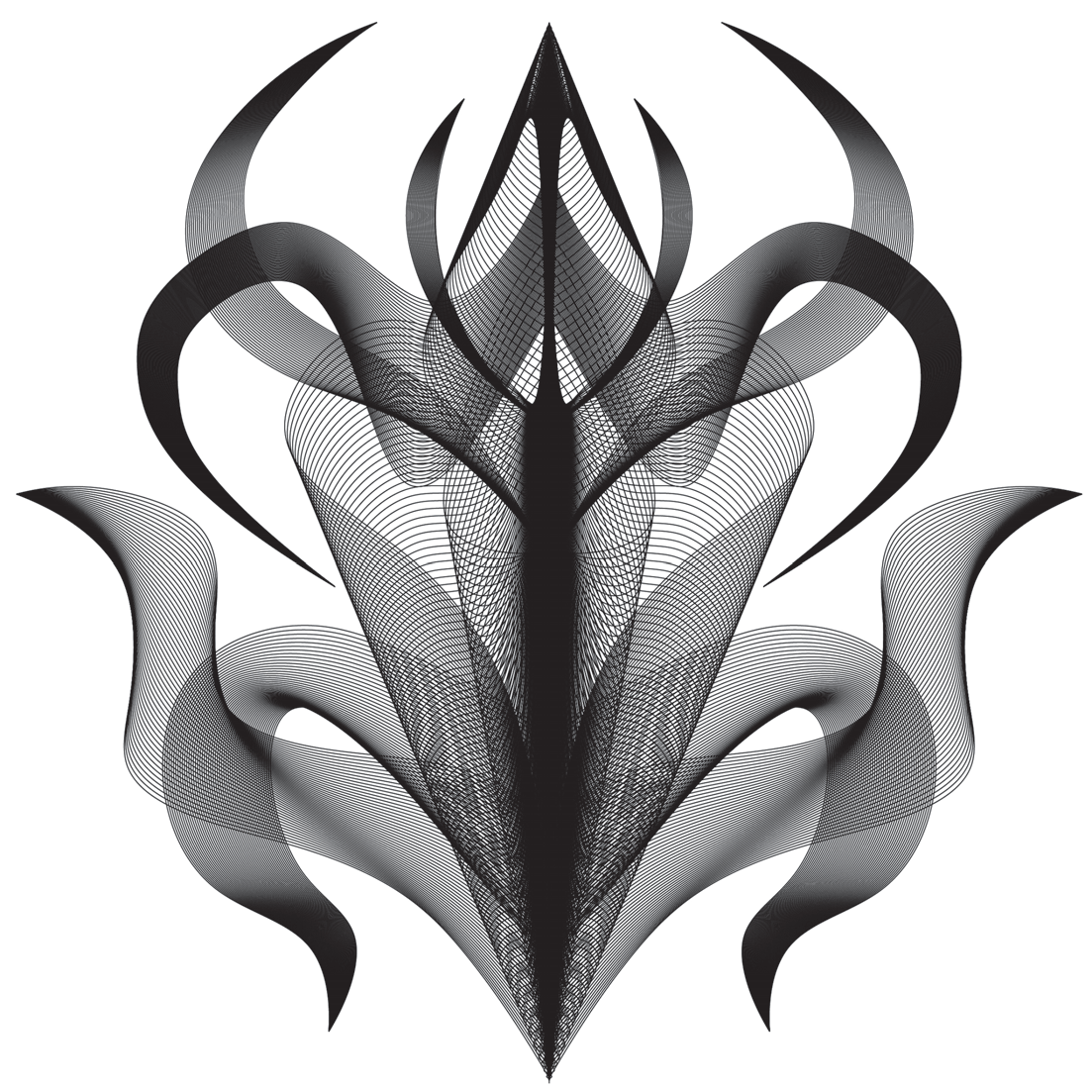
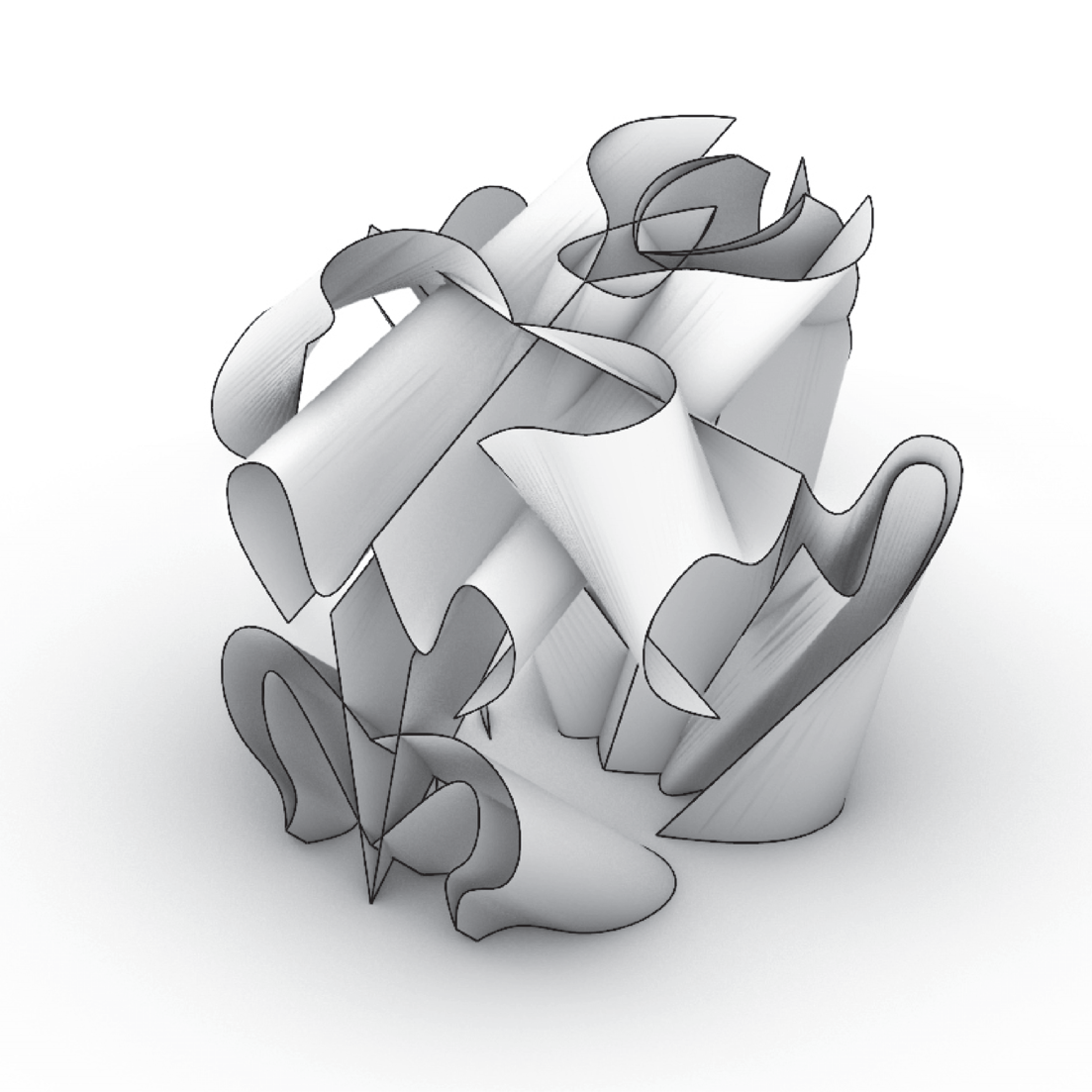
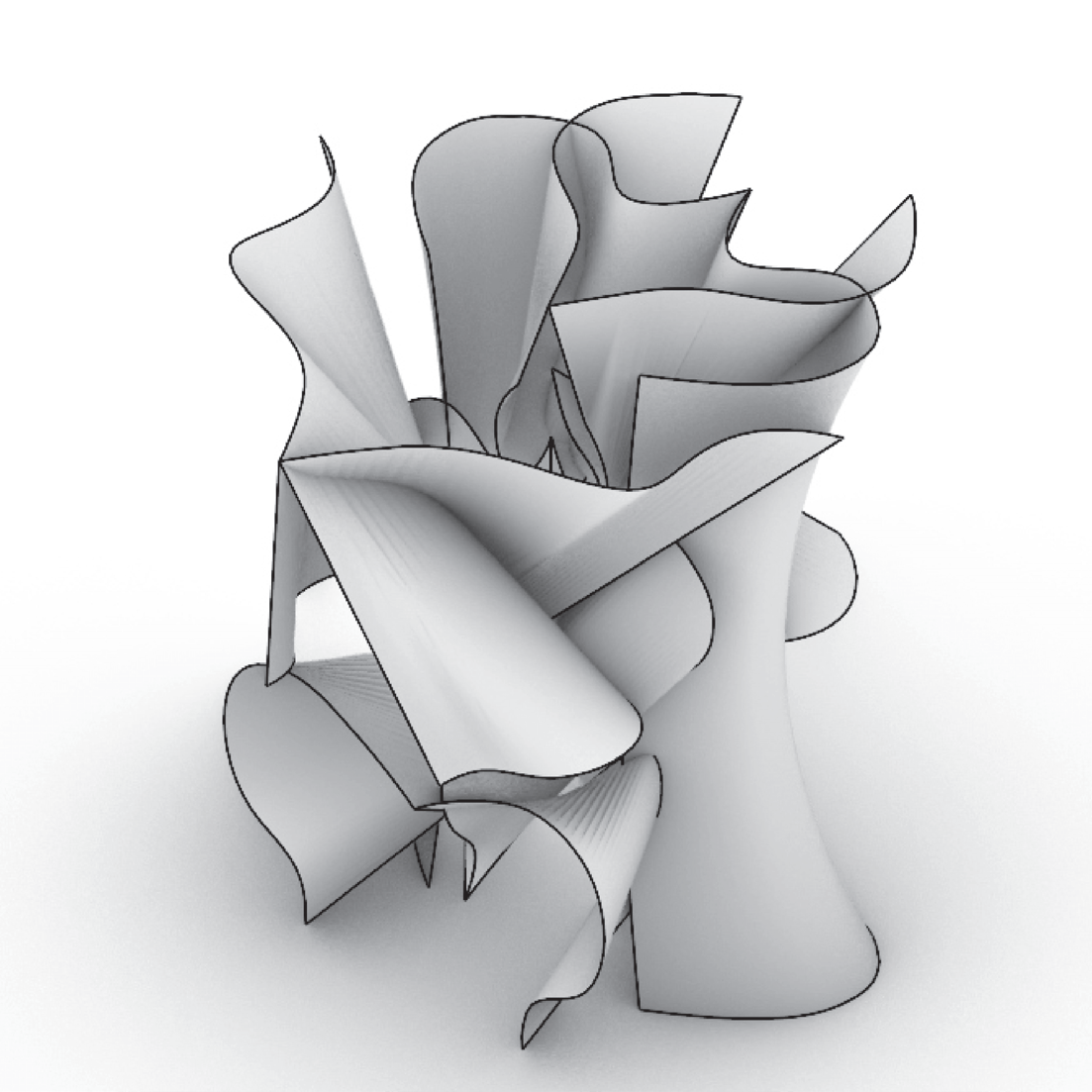
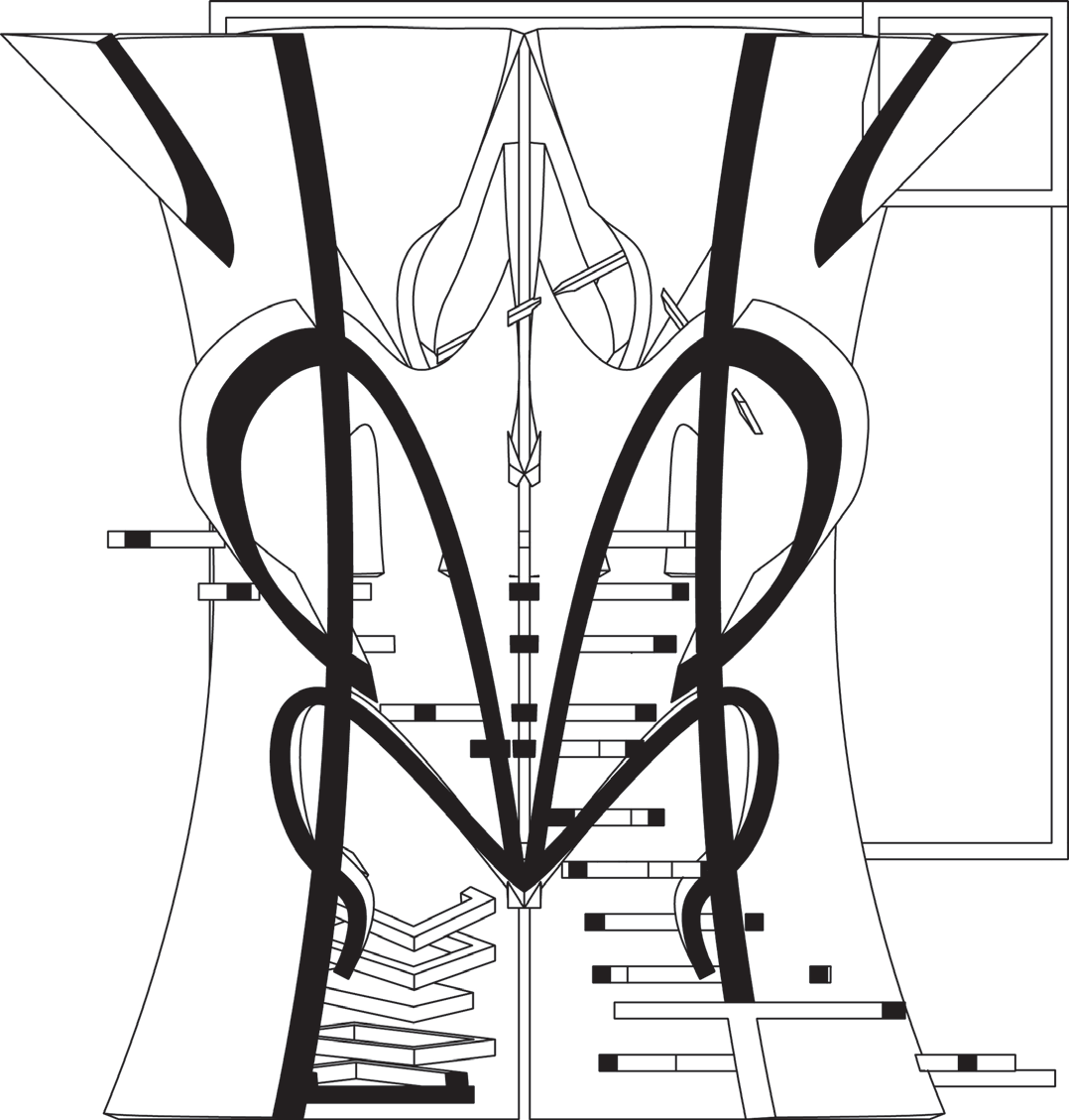
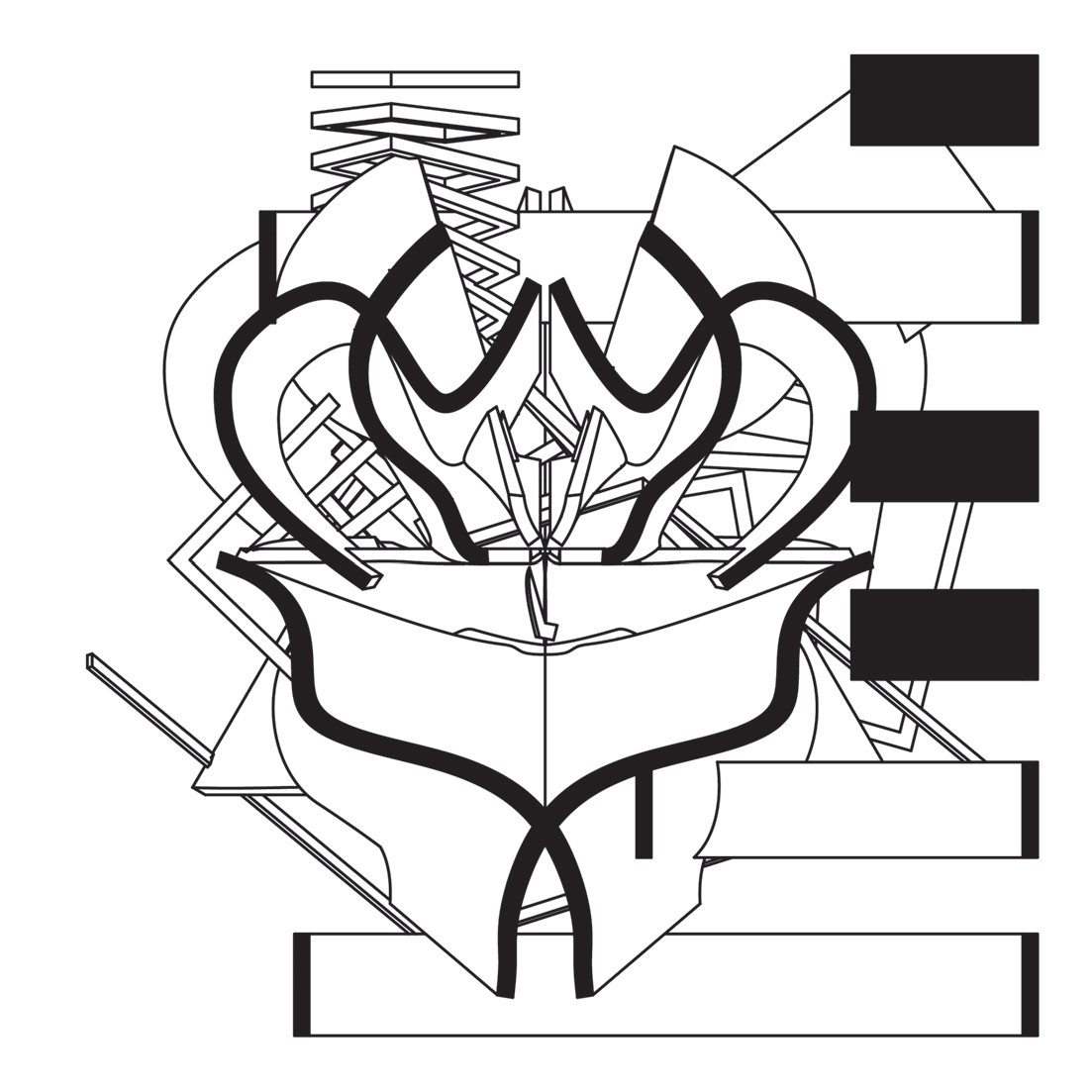
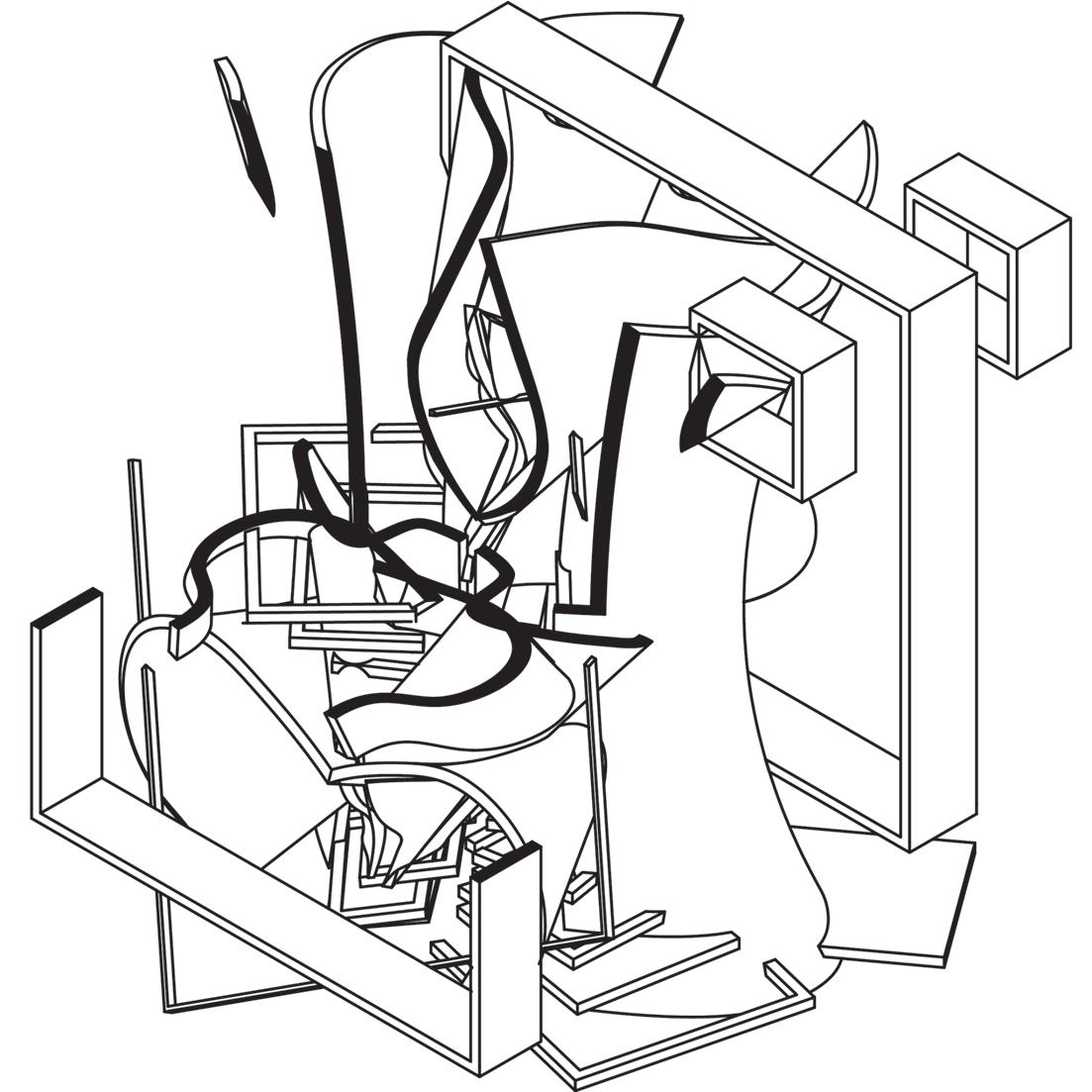
"Trim, Mirror", ⓒDahoon Jung, 23, ⓒJoonseo Woo, 23, Digital
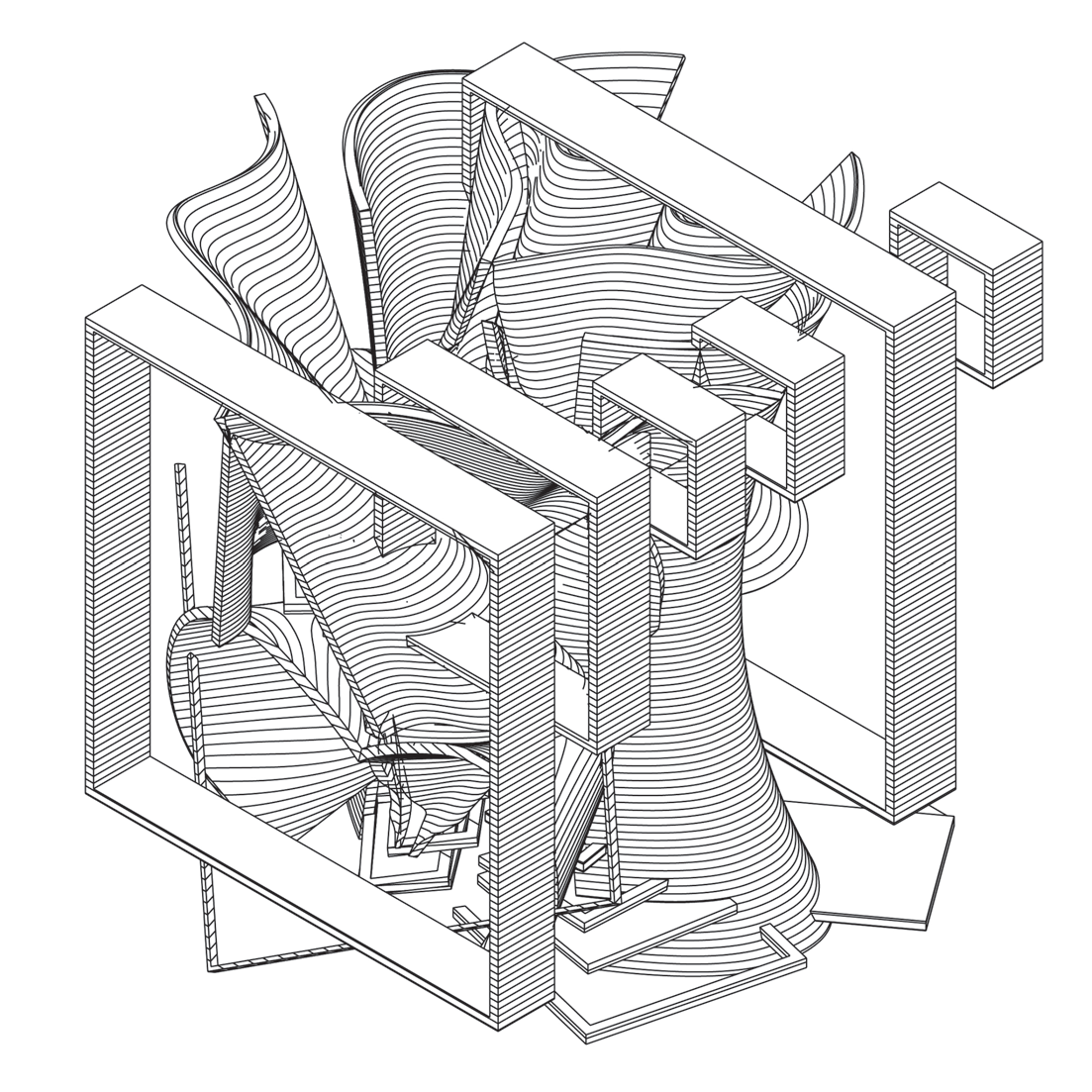
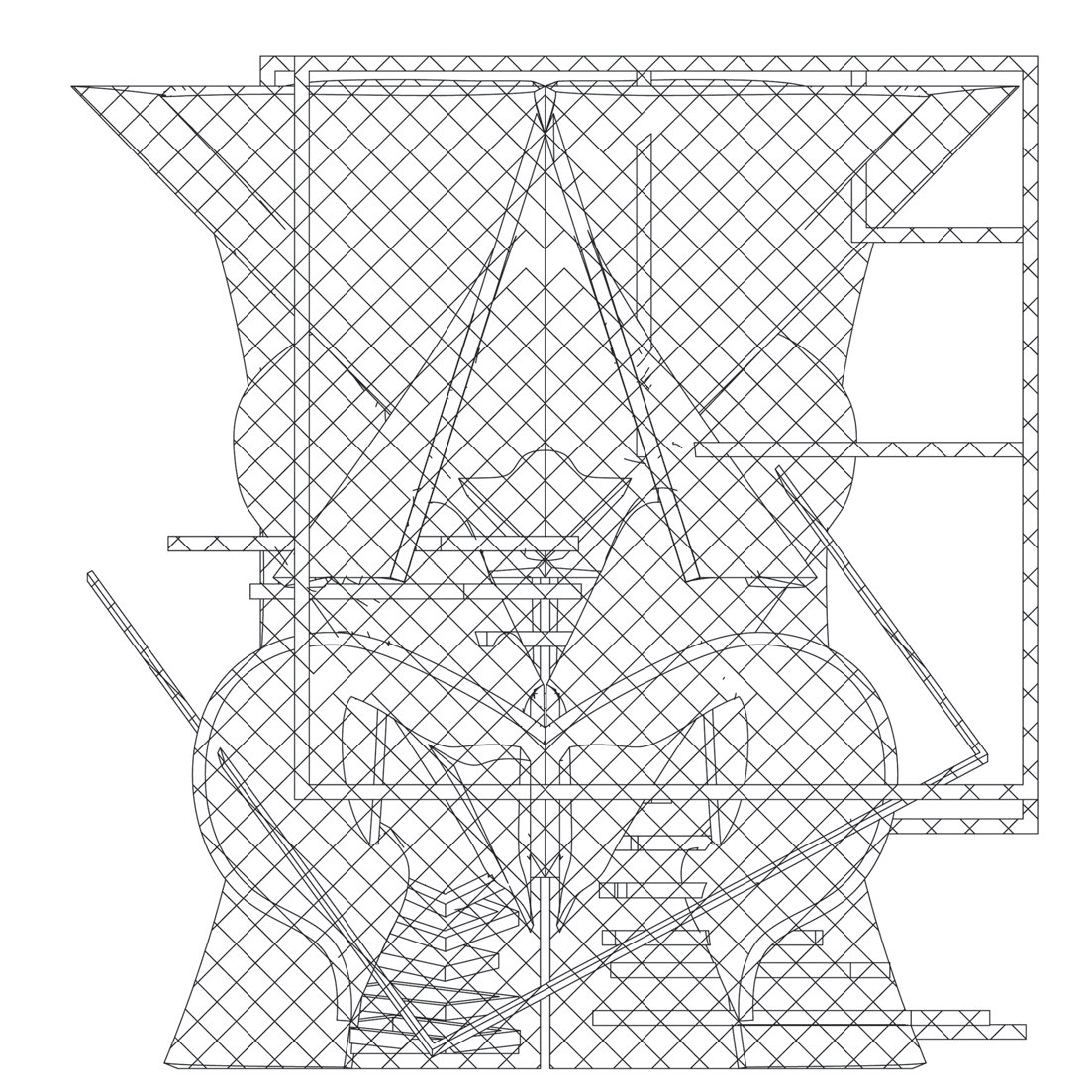

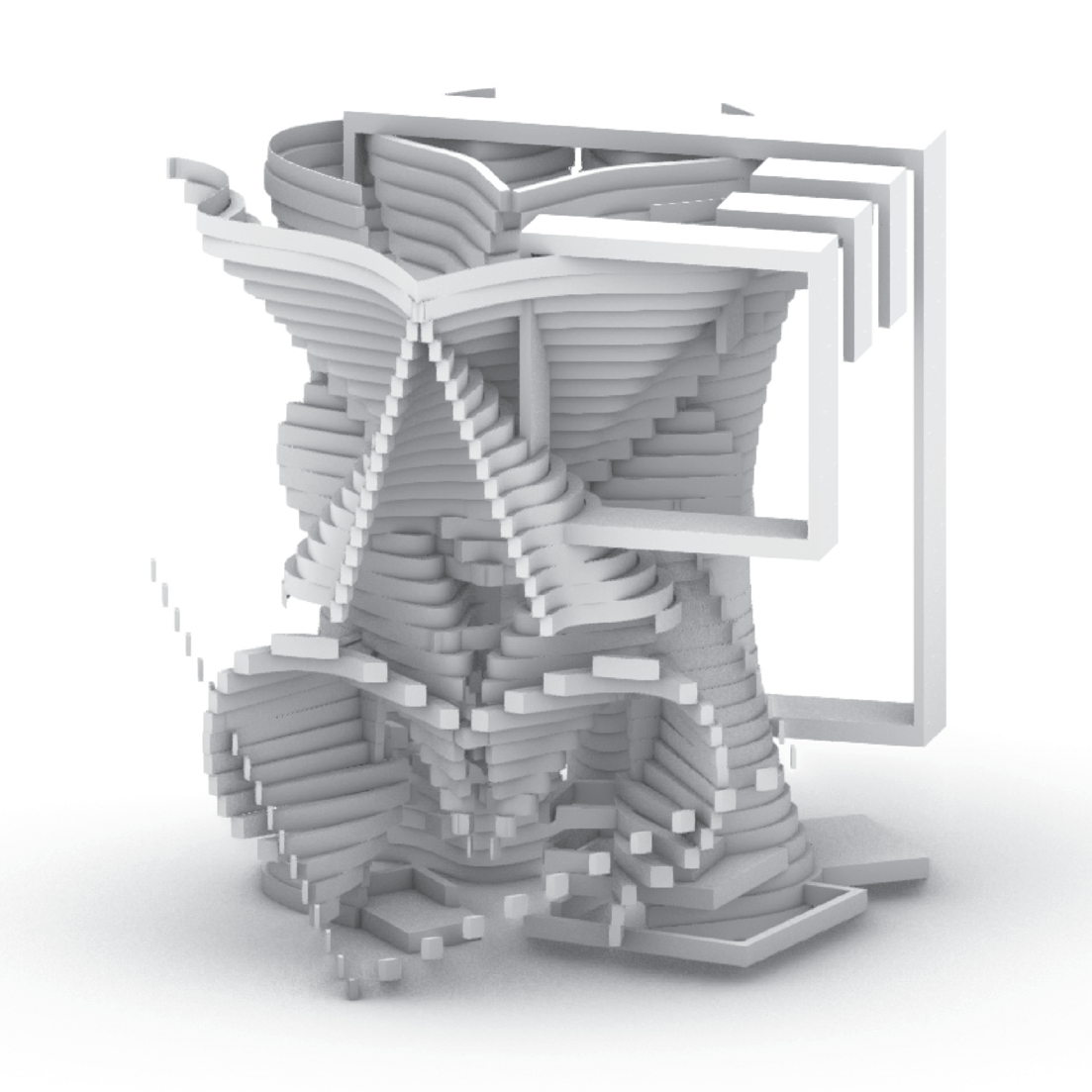
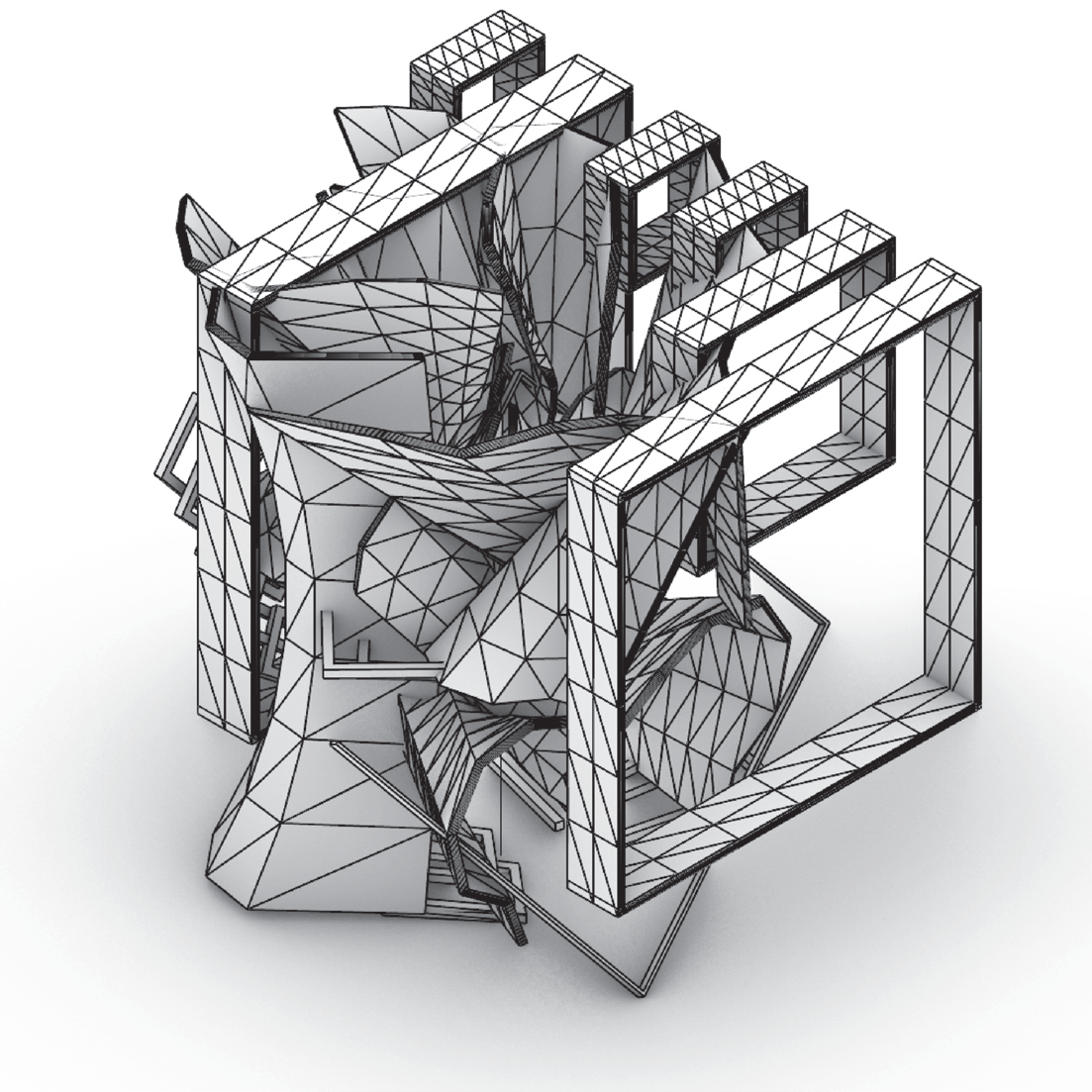
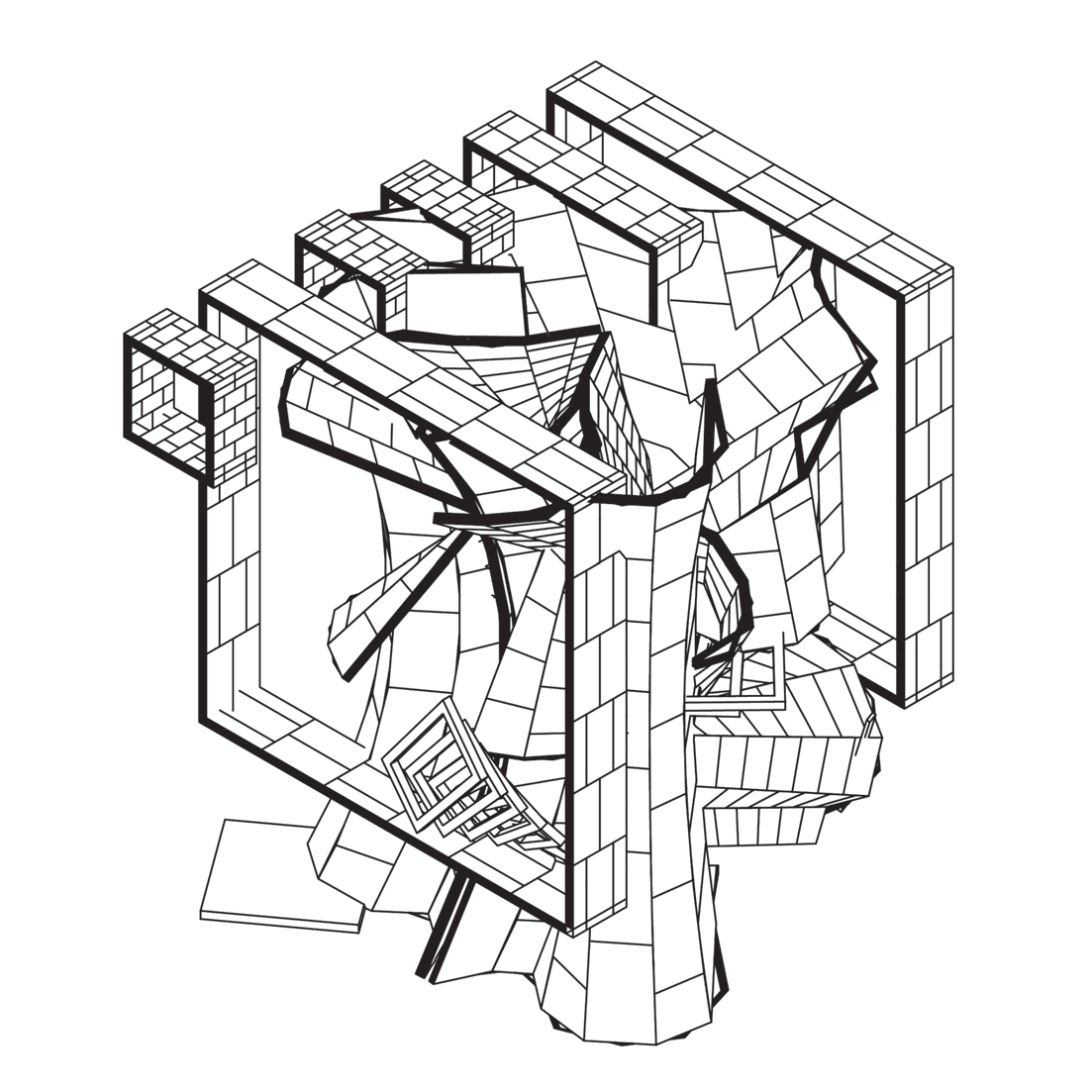
"Trim, Mirror", ⓒDahoon Jung, 23, ⓒJoonseo Woo, 23, Digital
Trim, Mirror (Team 2)
Primary gesture (design language):
- Twin voids mirrored across a datum; chamfers steer flow.
Starting sources (2D command drawings):
- A — Trim (#1): decisive subtraction planes and notch profiles.
- B — Mirror (#4): bilateral arrangement with a clear centerline.
Early gesture development (2D → 3D):
- A (#2–#3): cuts carve deeper V/VU sections; edges facet into chamfers.
- B (#5–#6): mirrored hollows stabilize span and balance.
Composite drawing (#7+):
- Mirrored cutwork remains legible as void corridors through the mass.